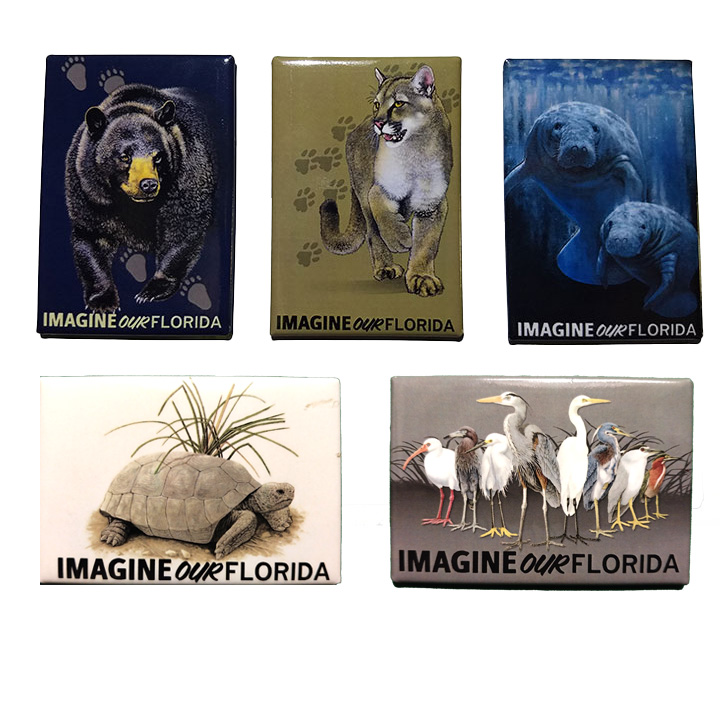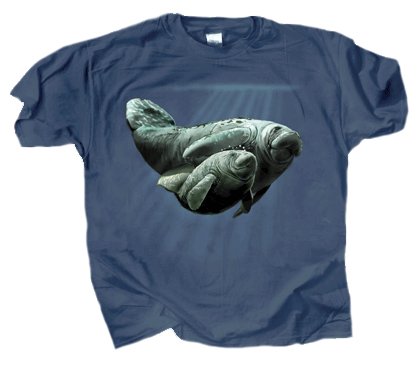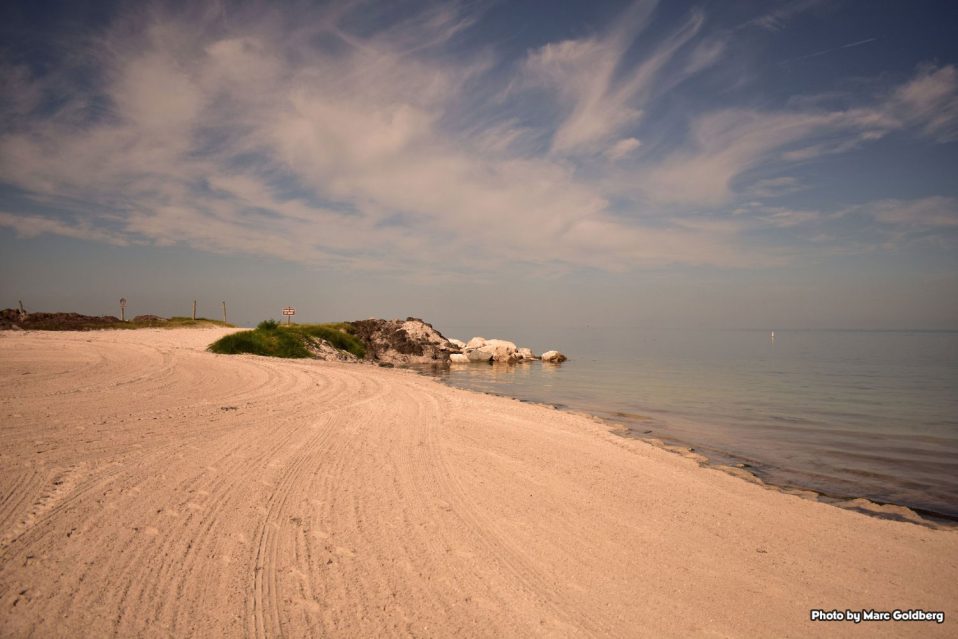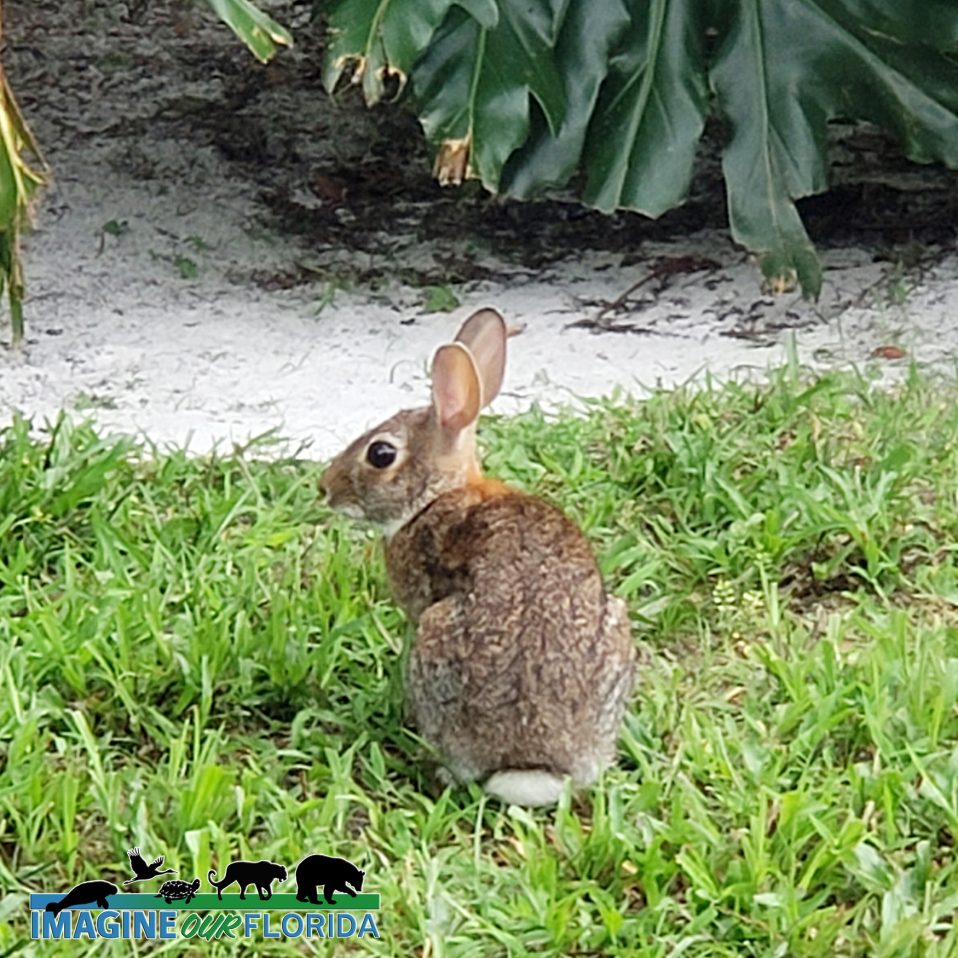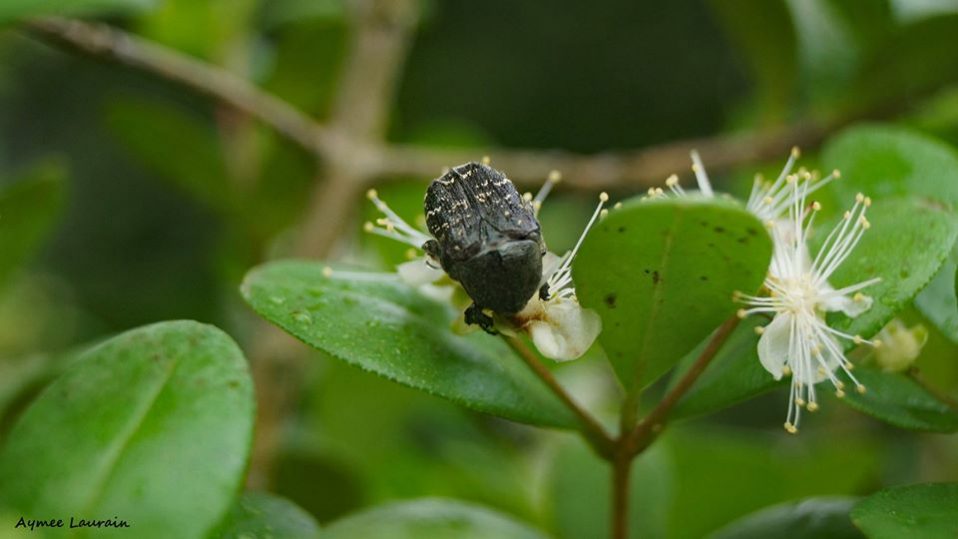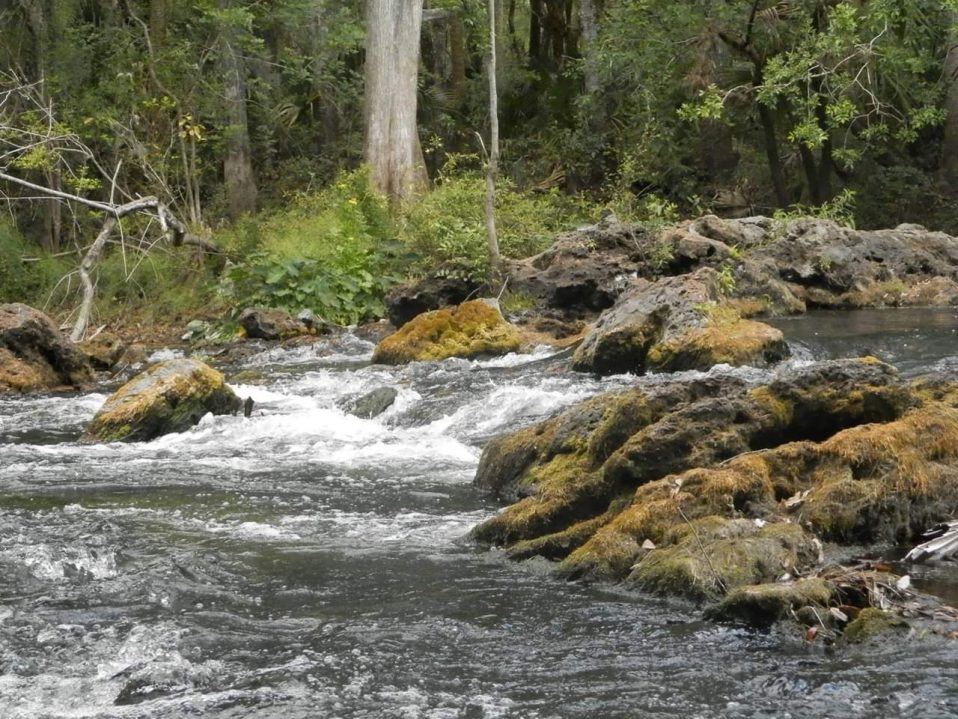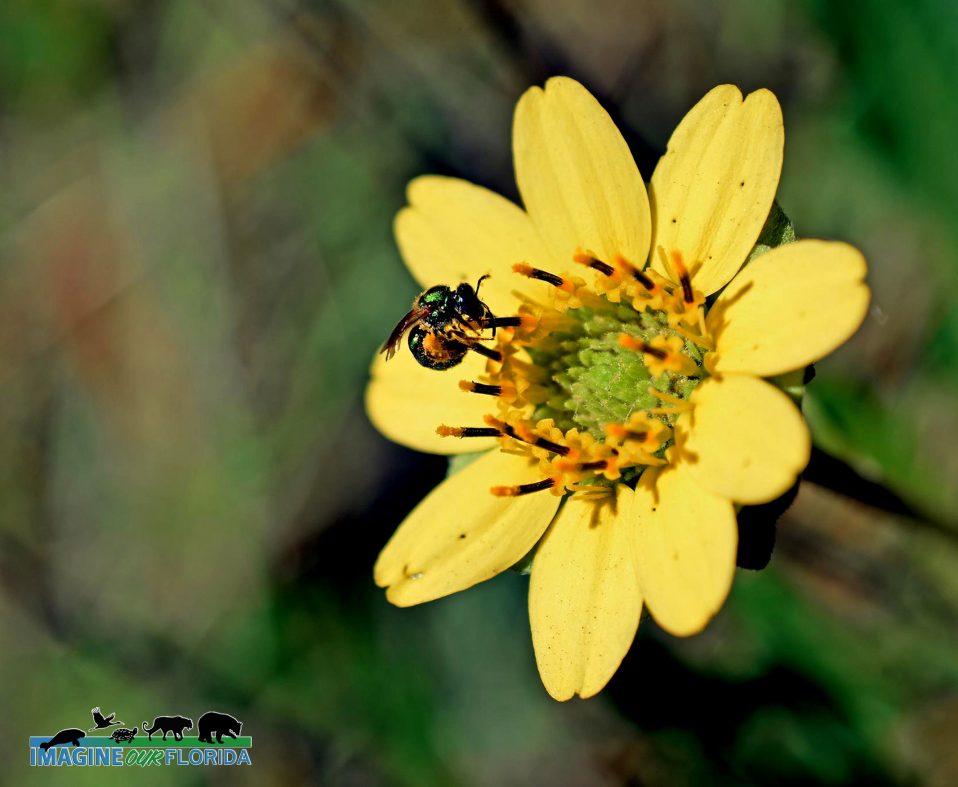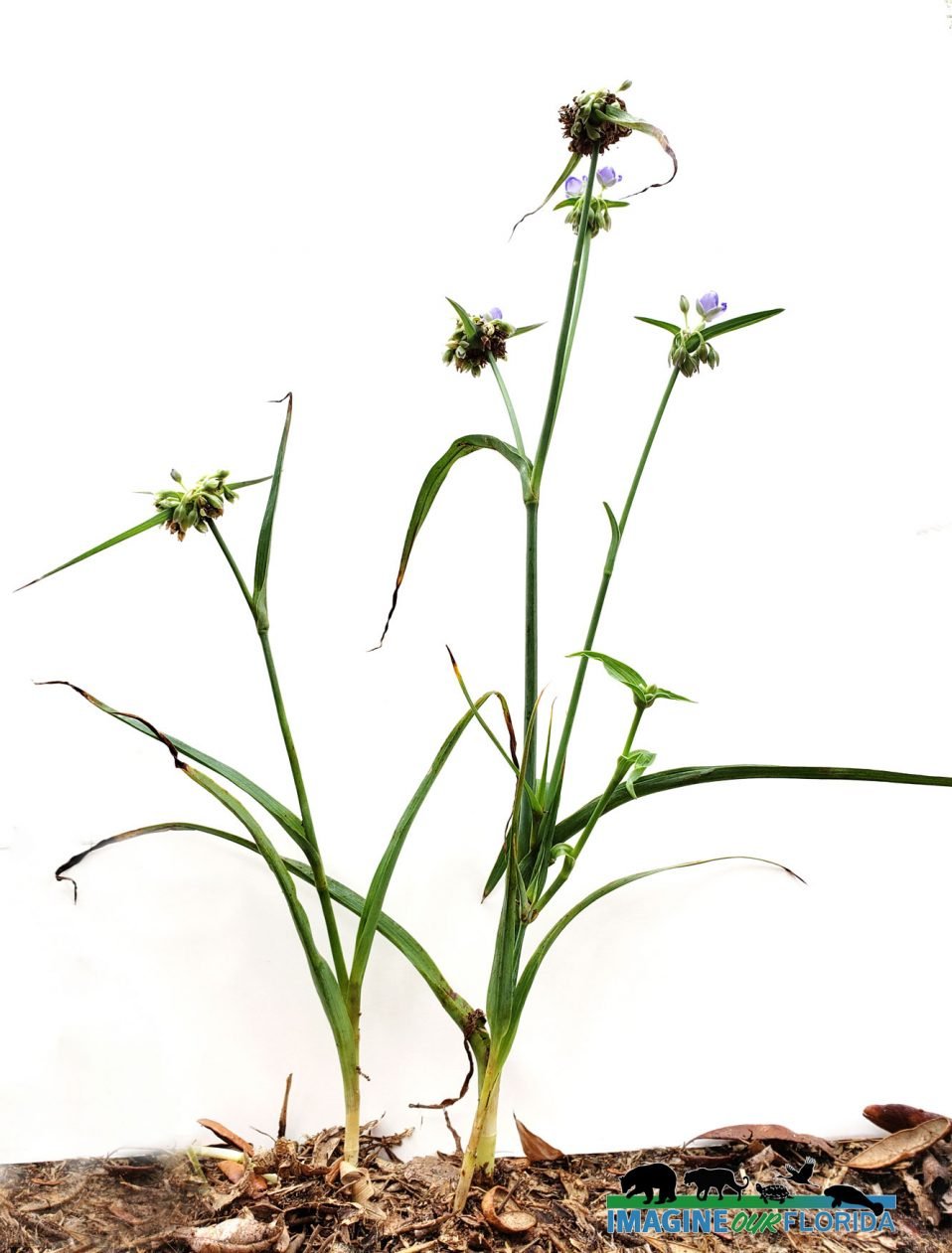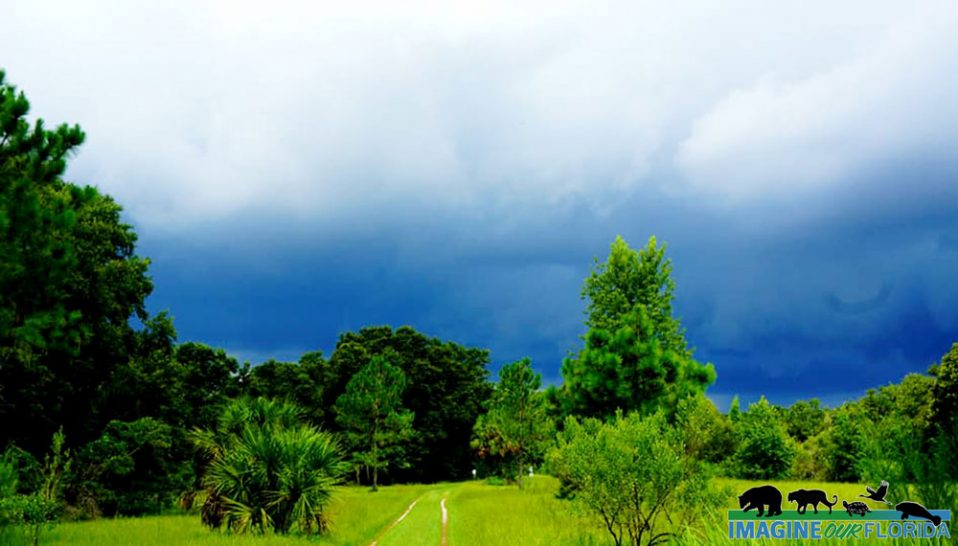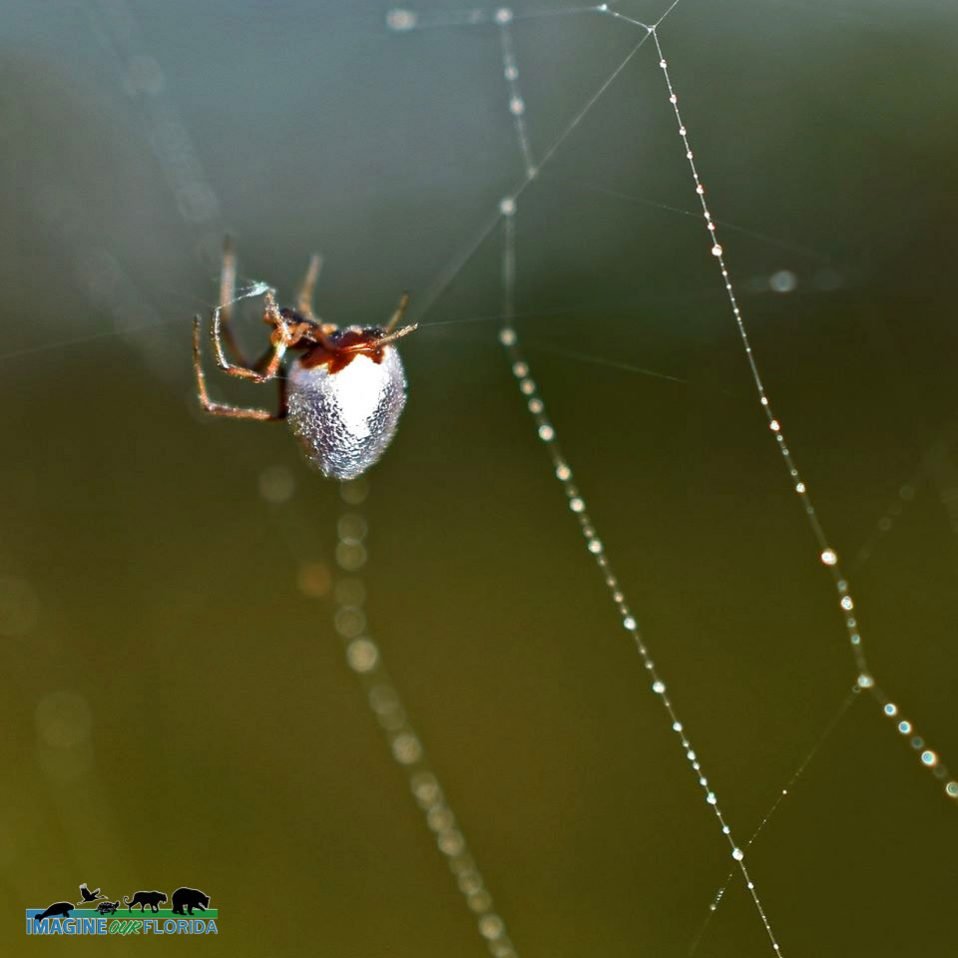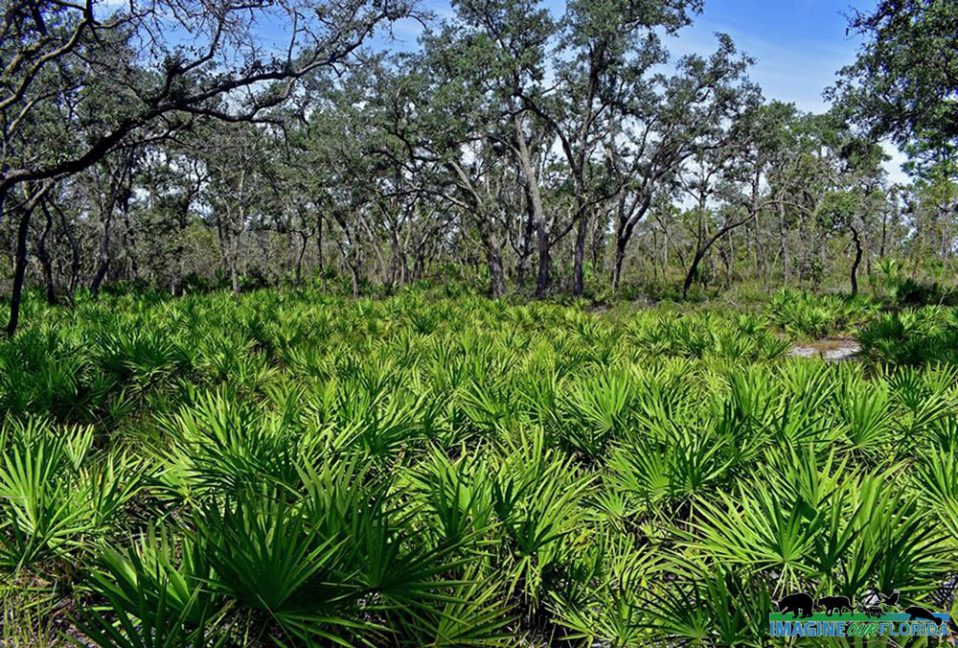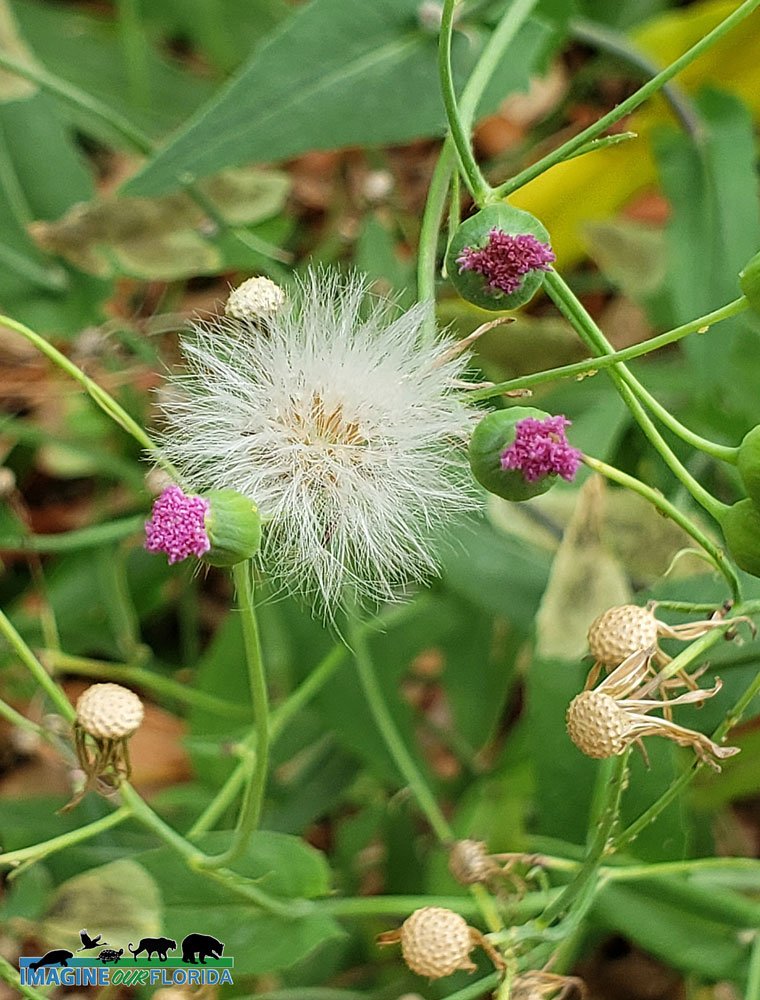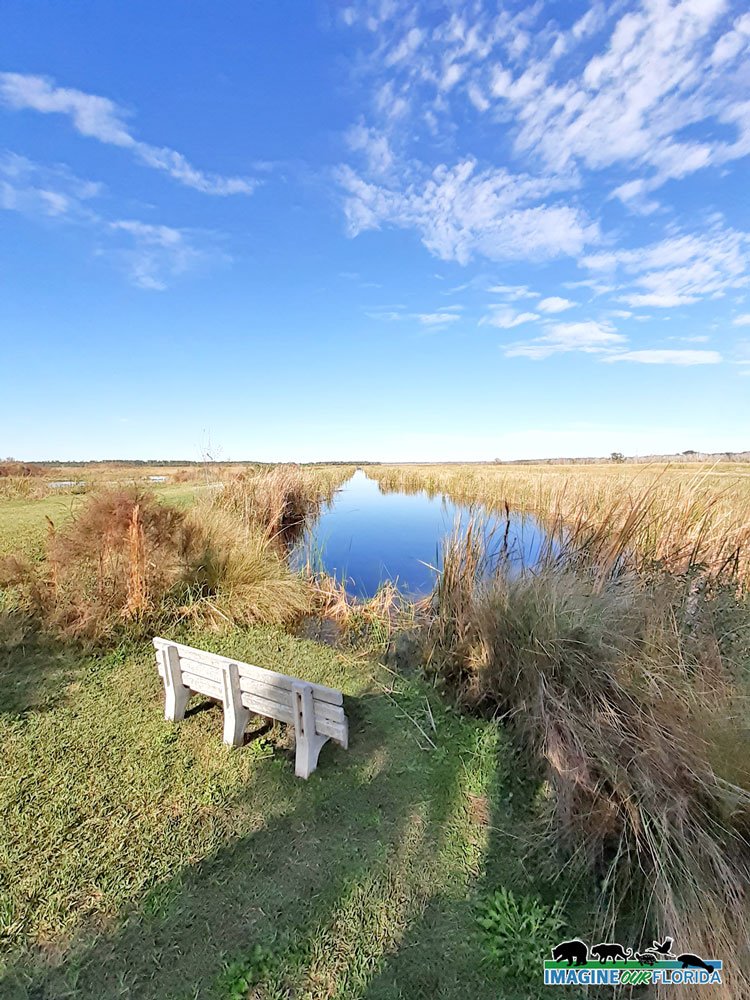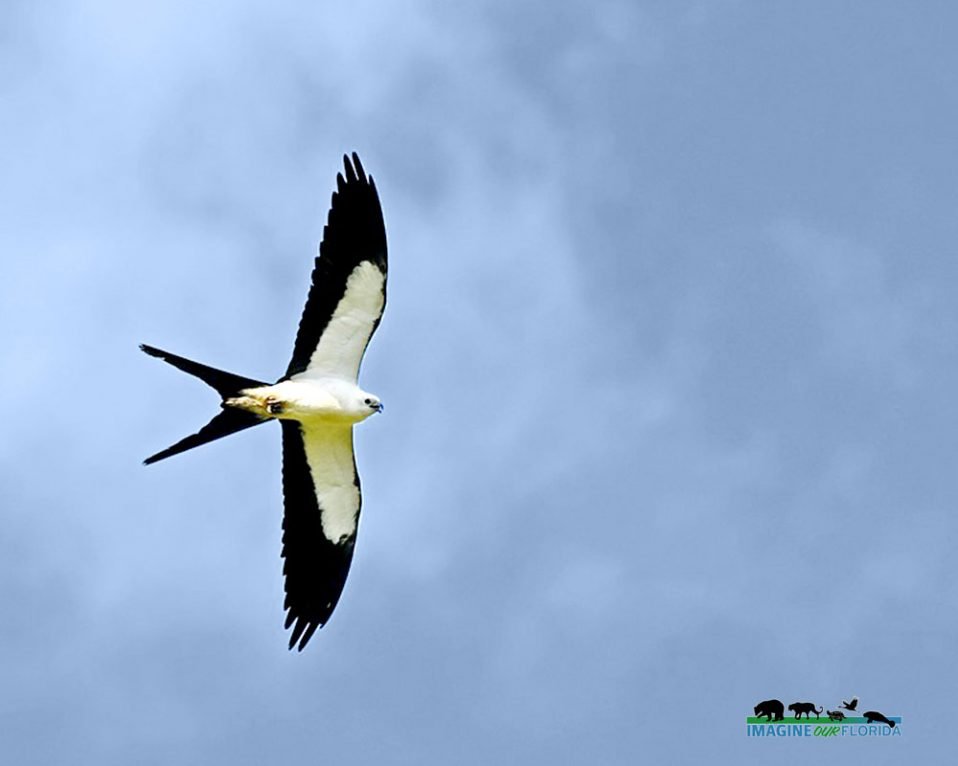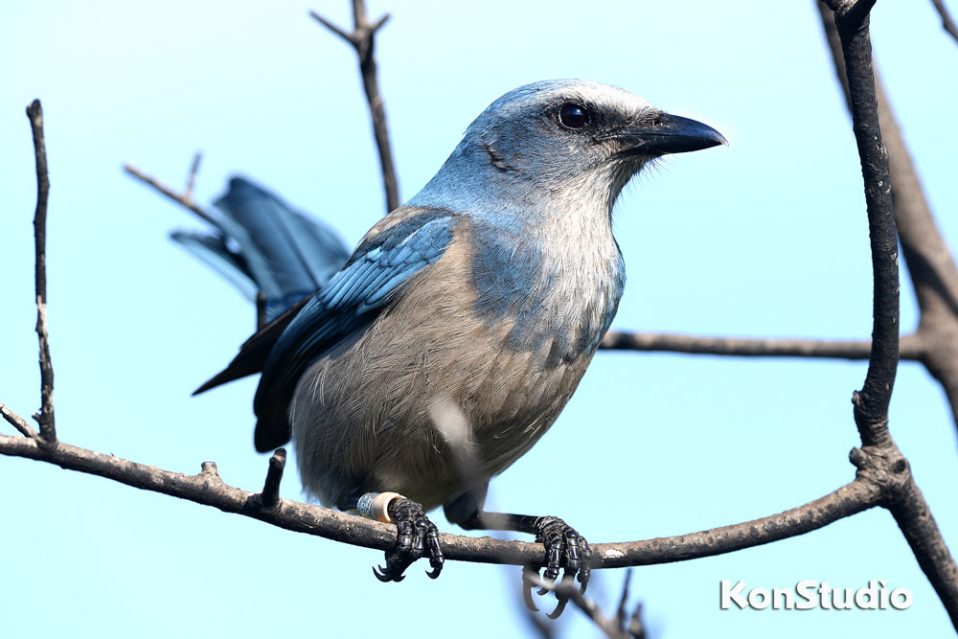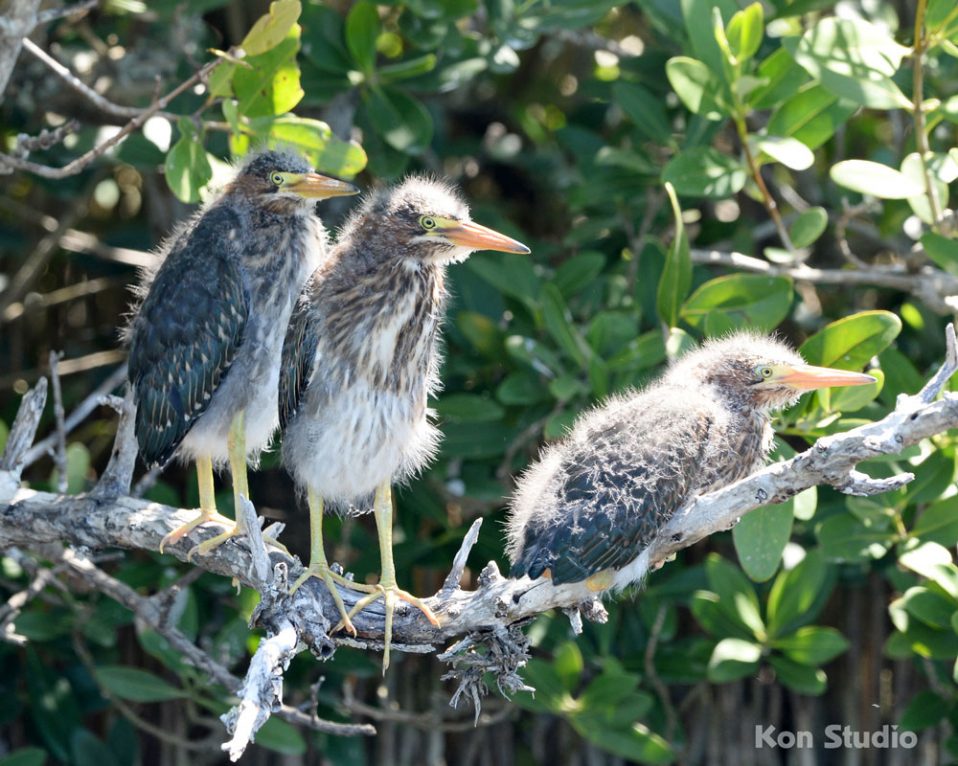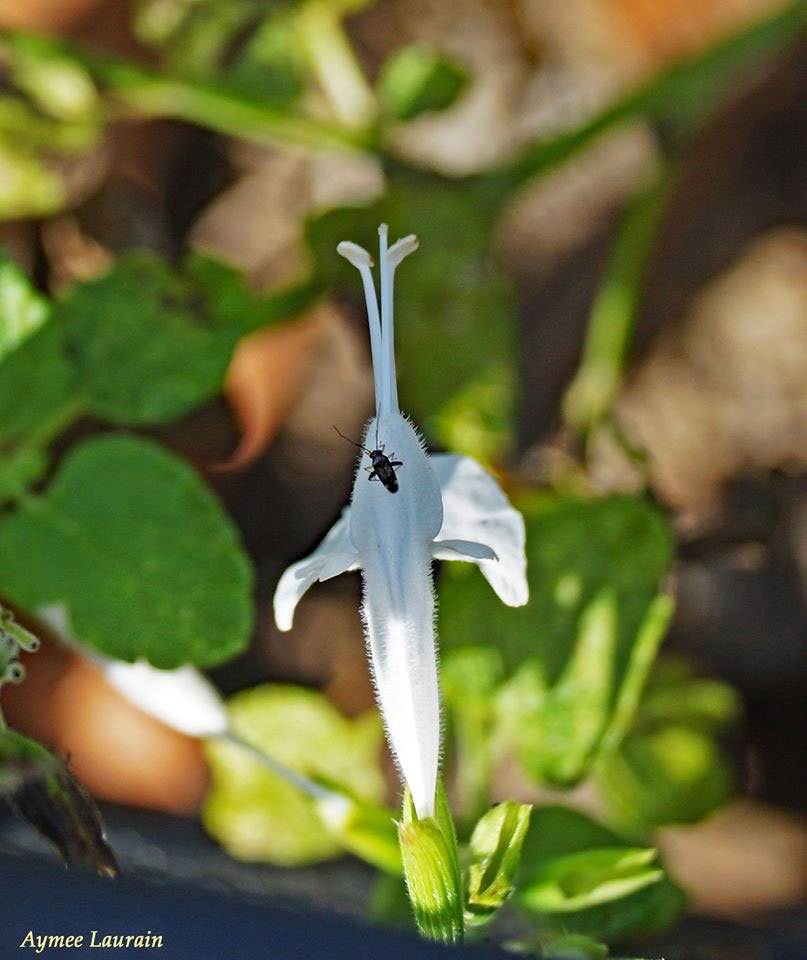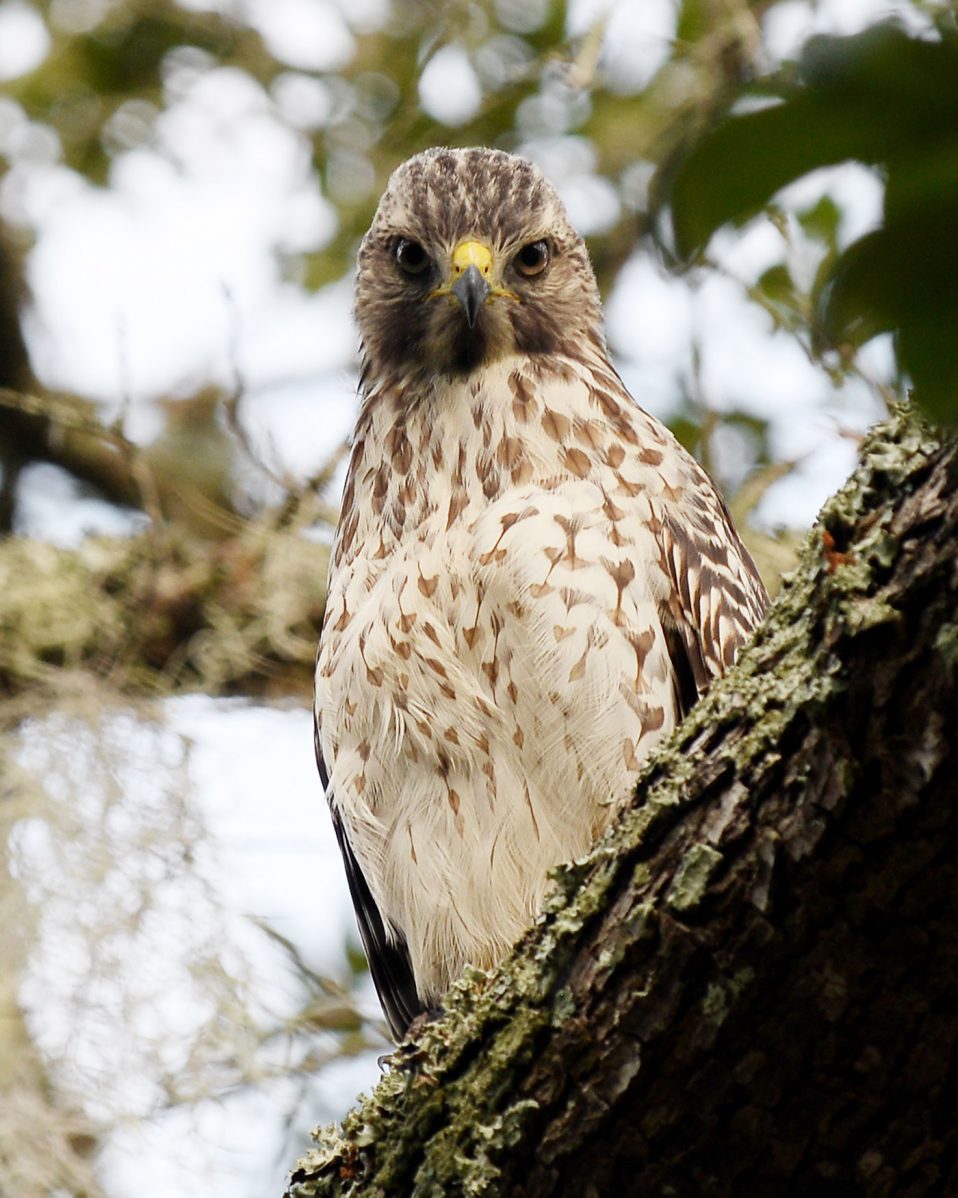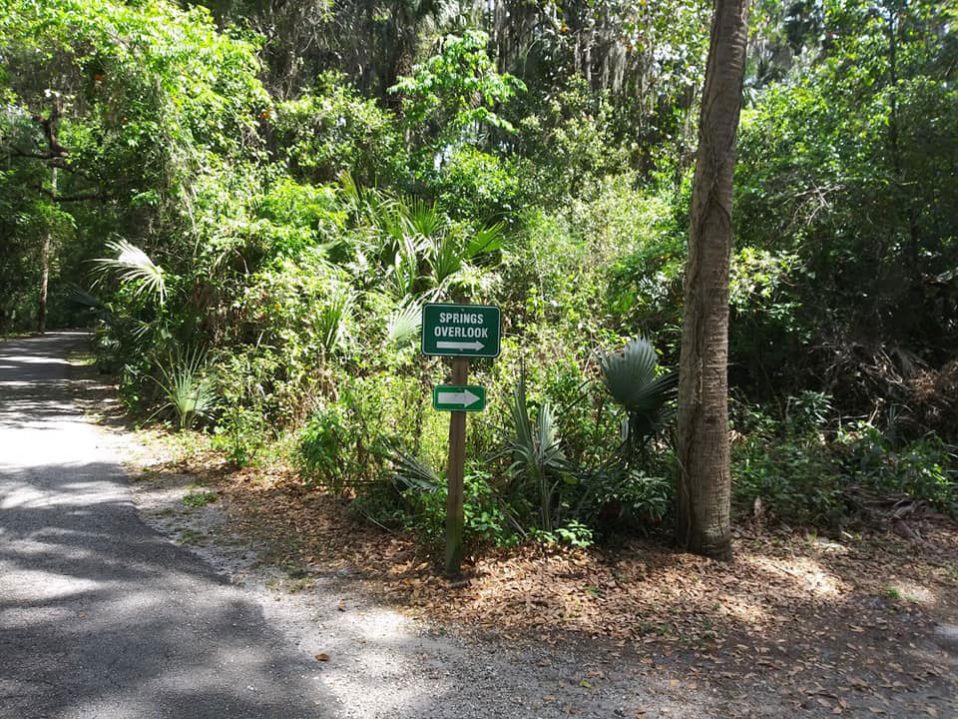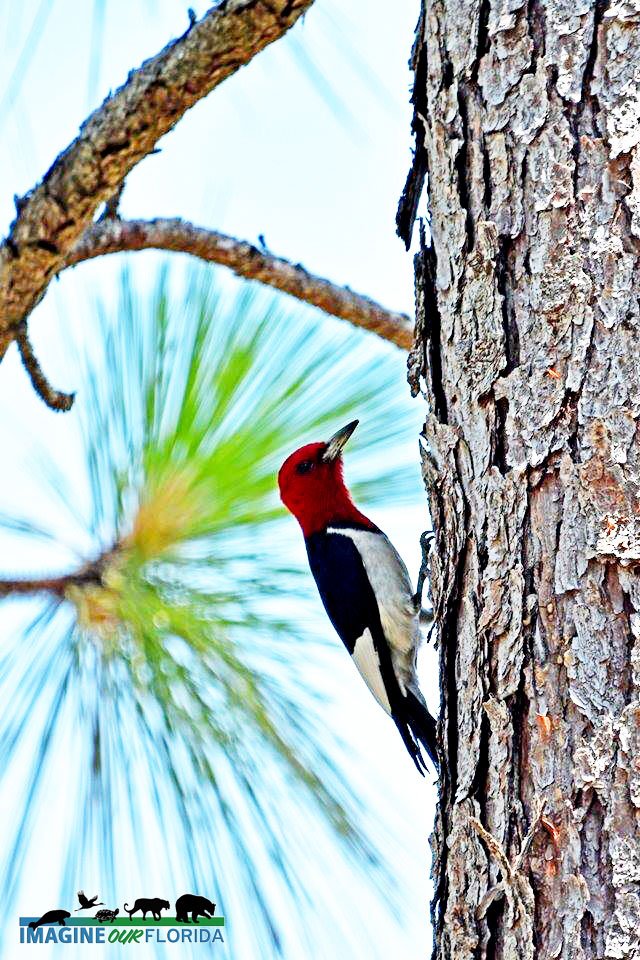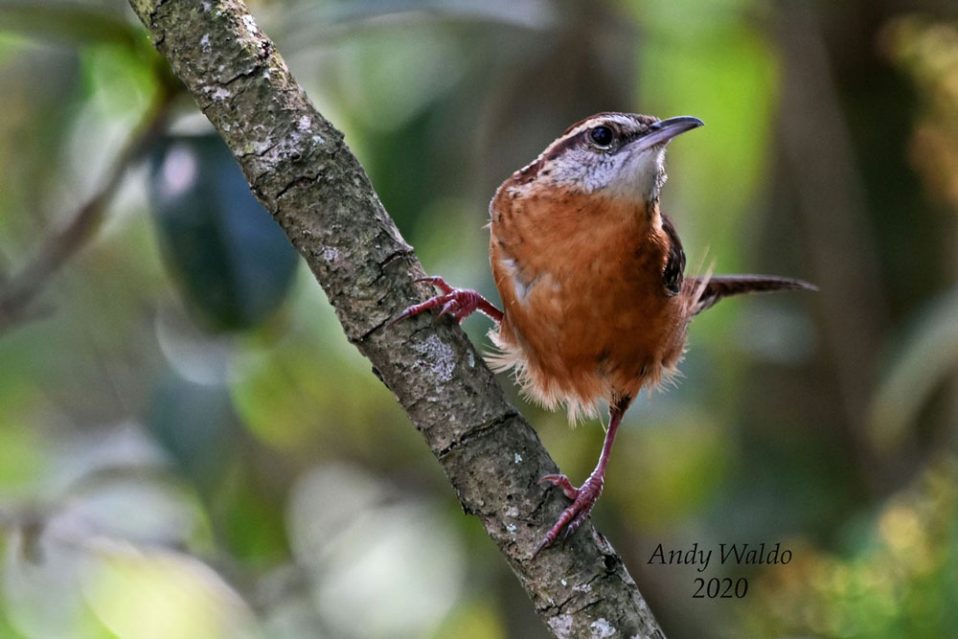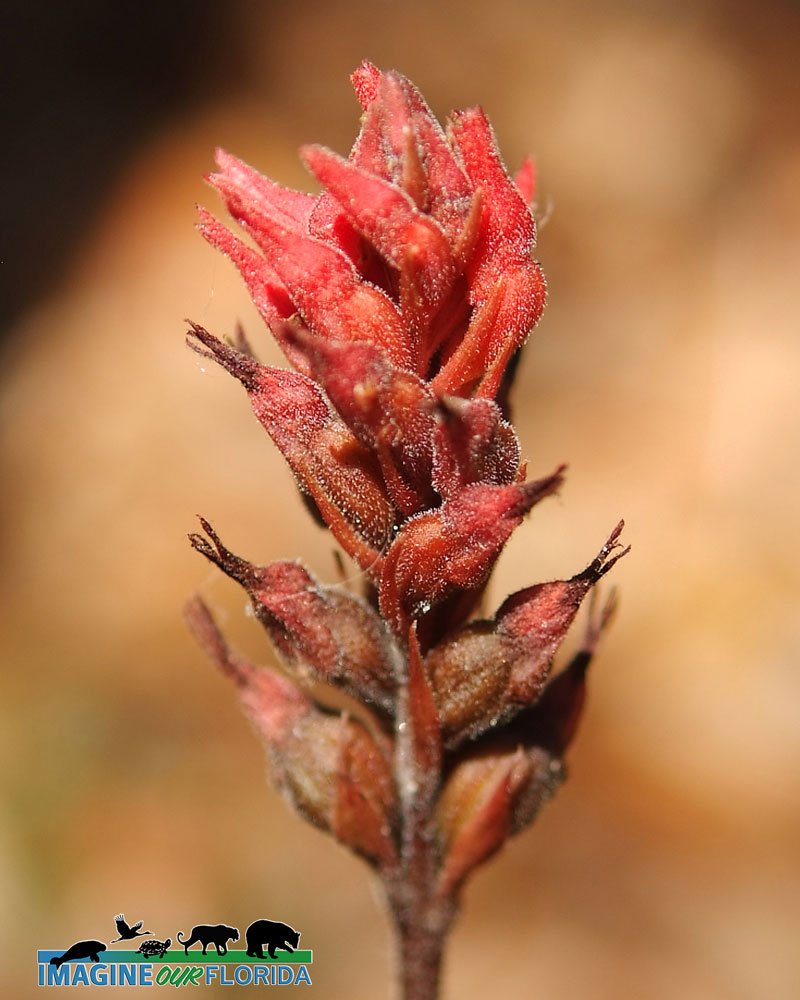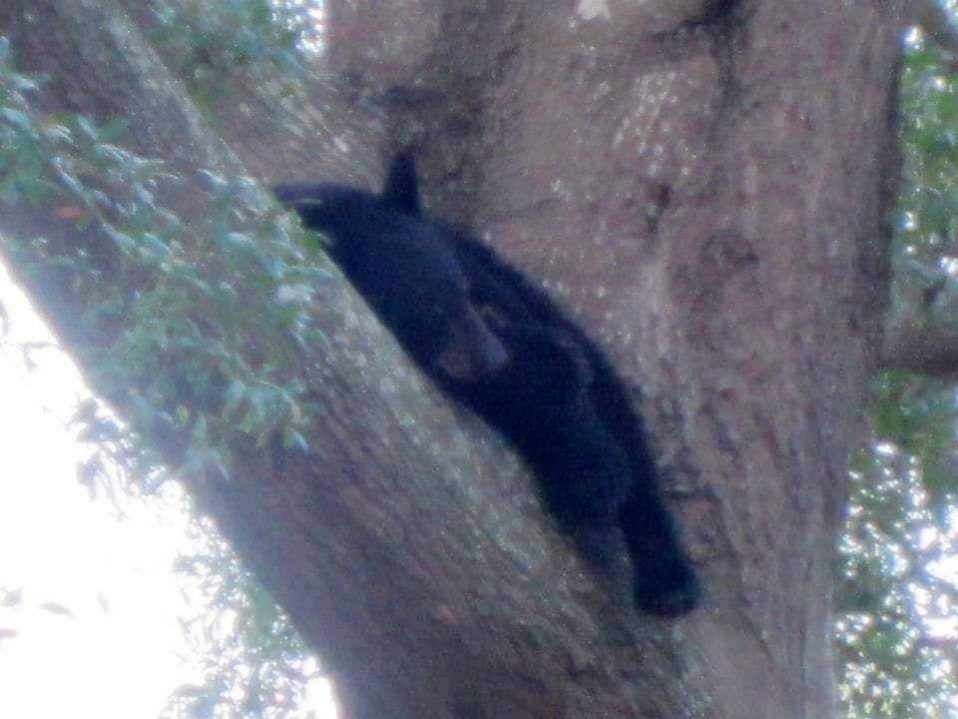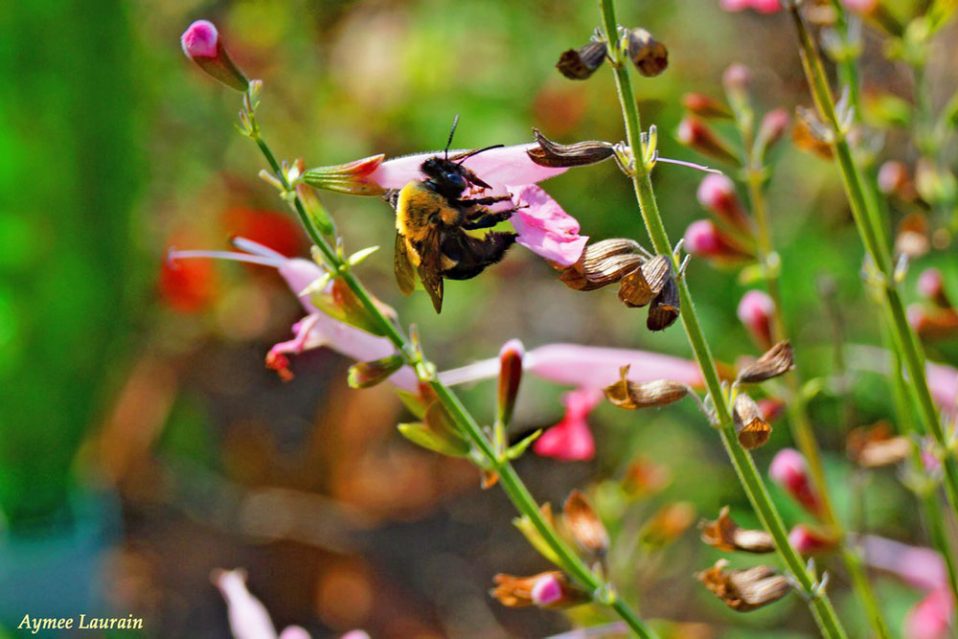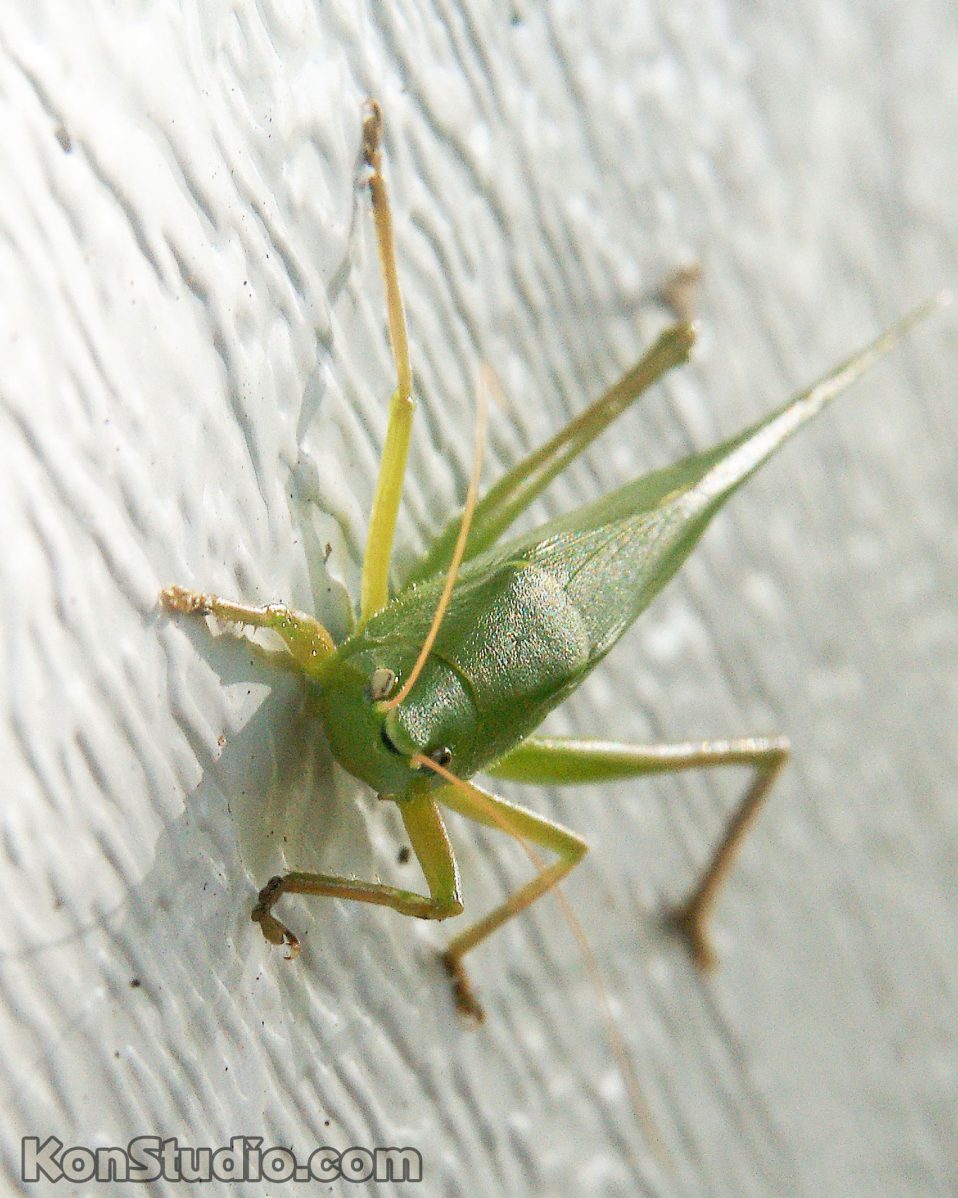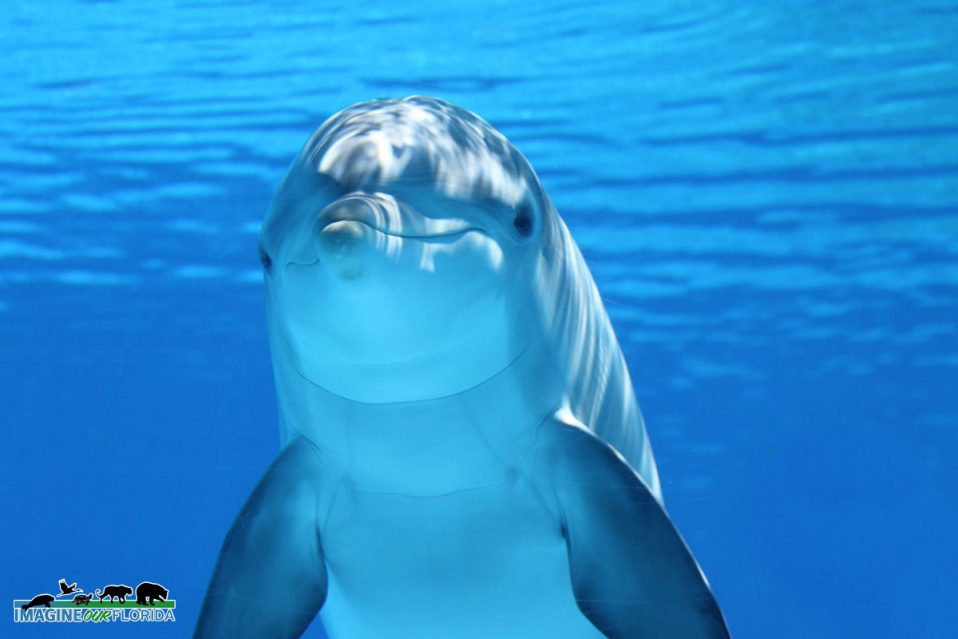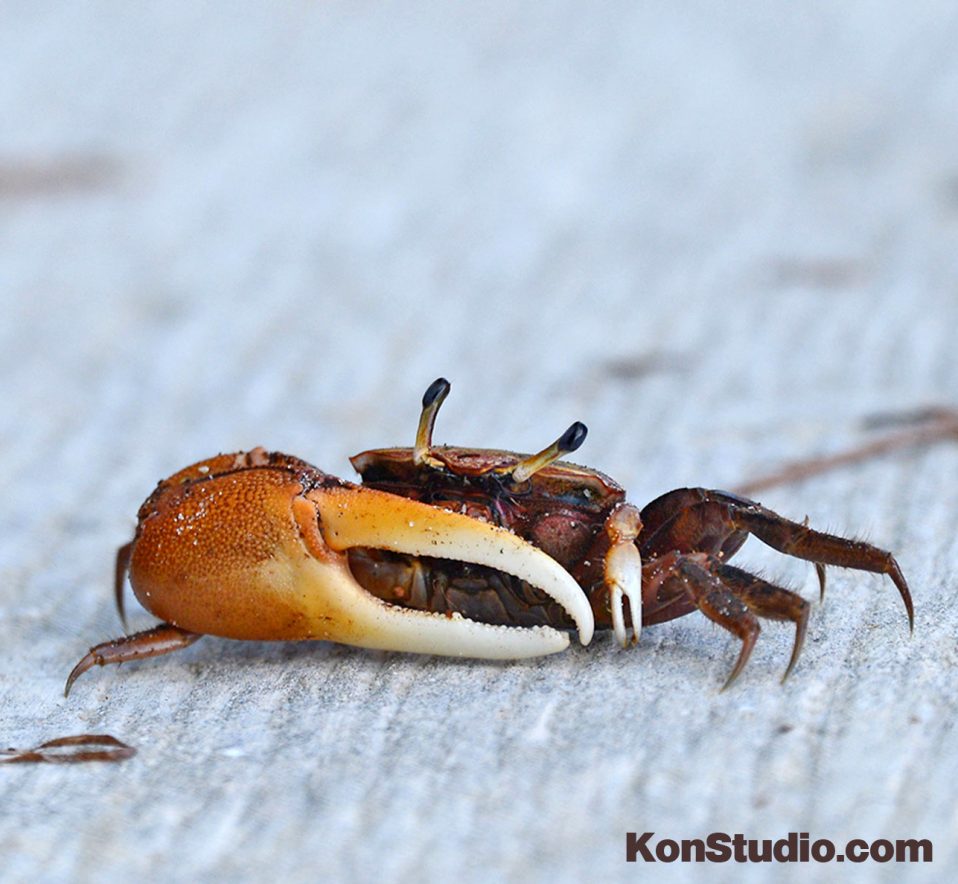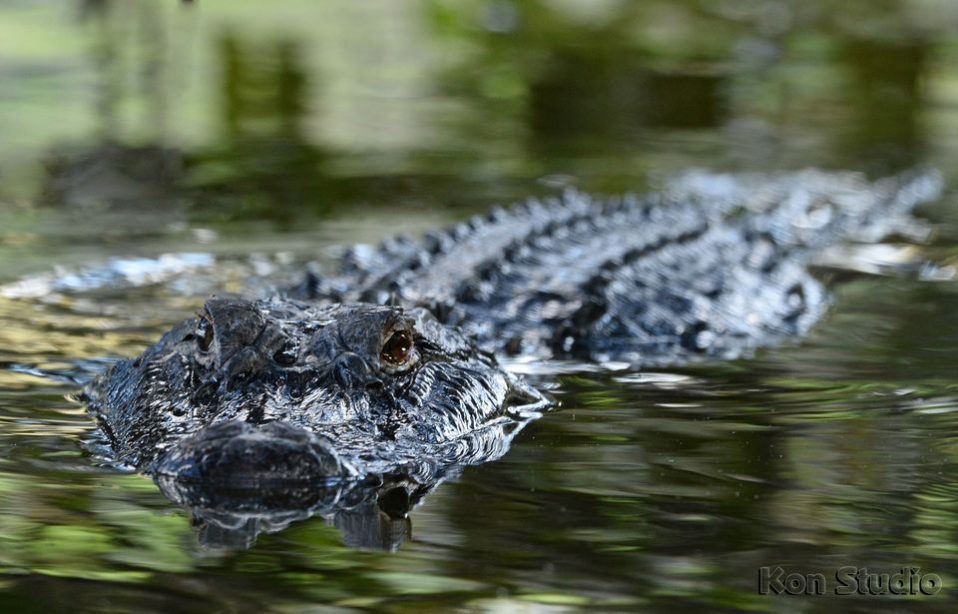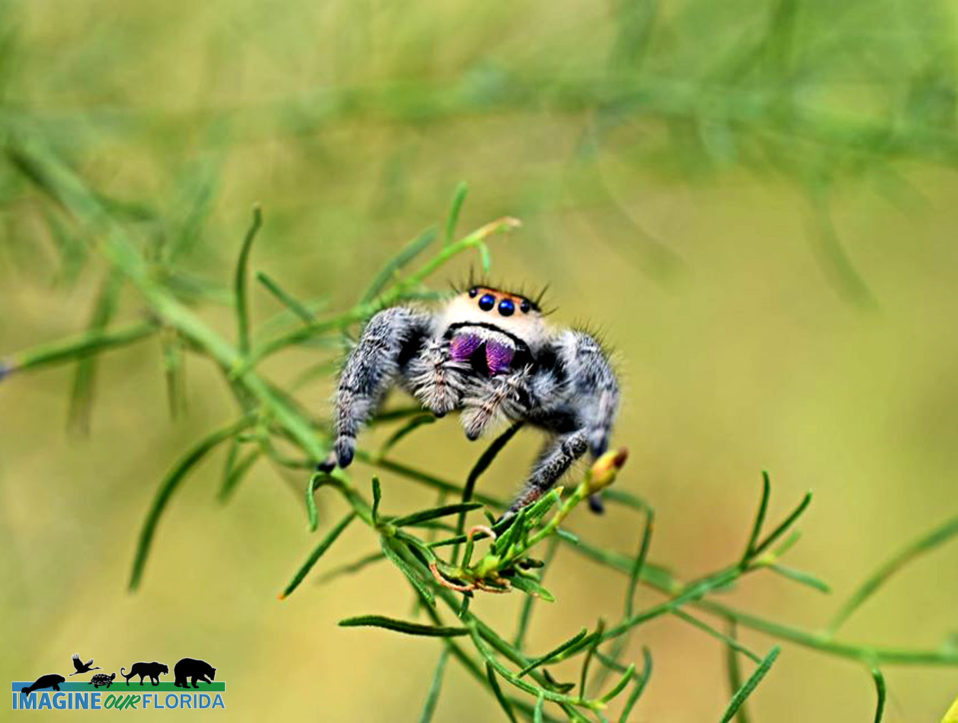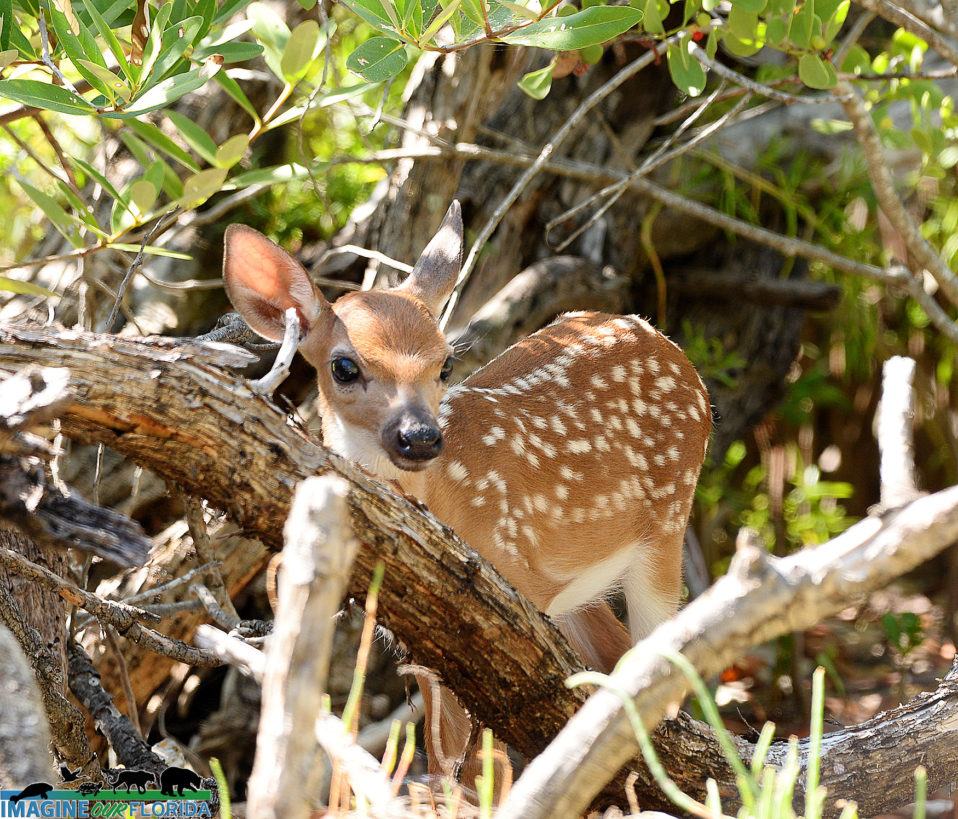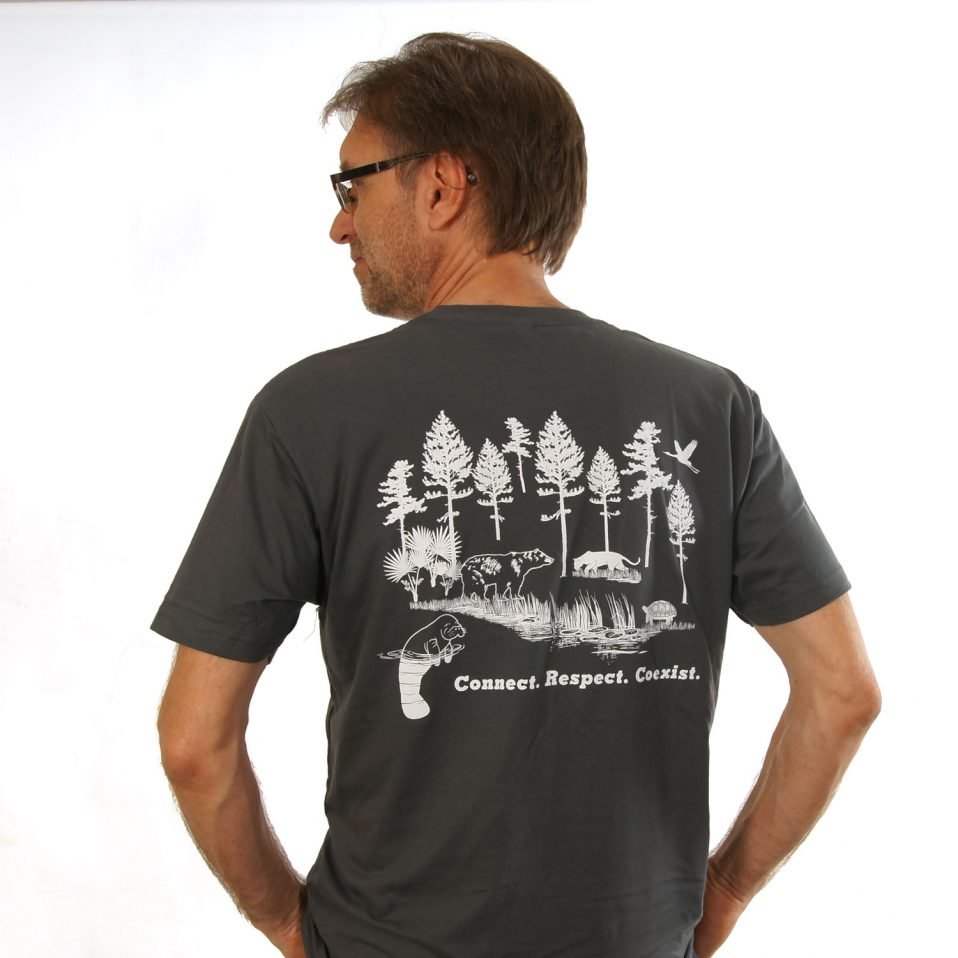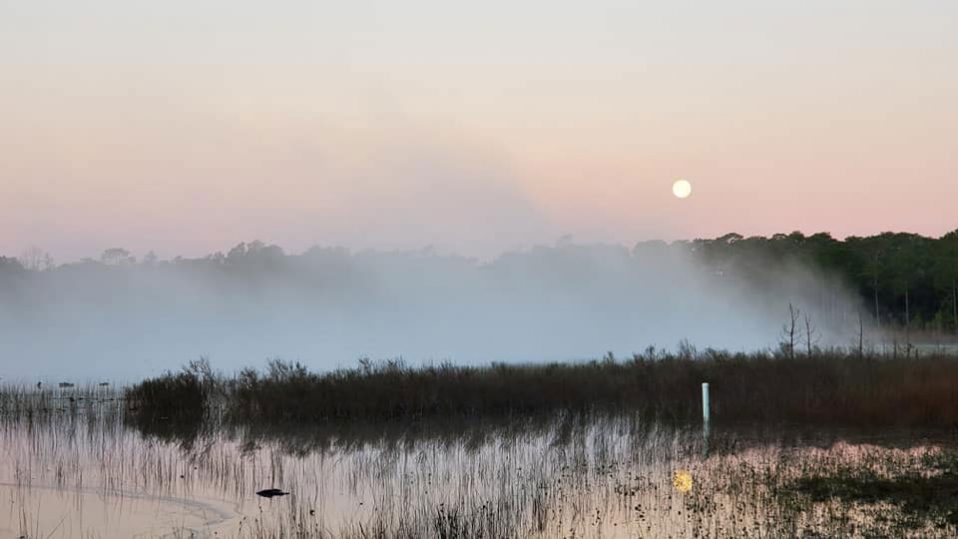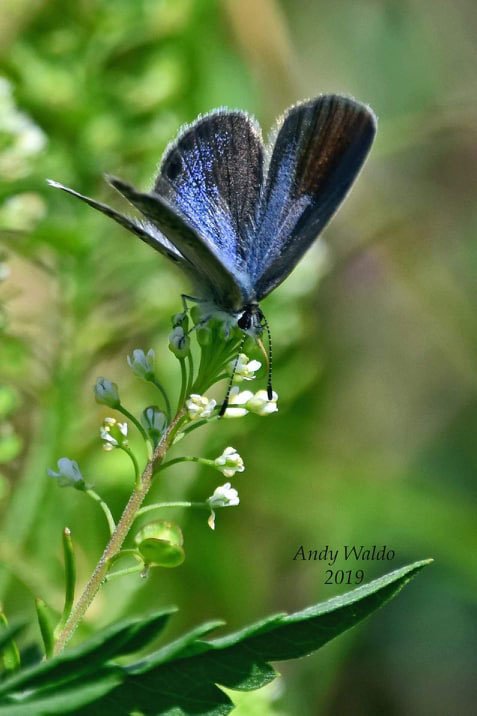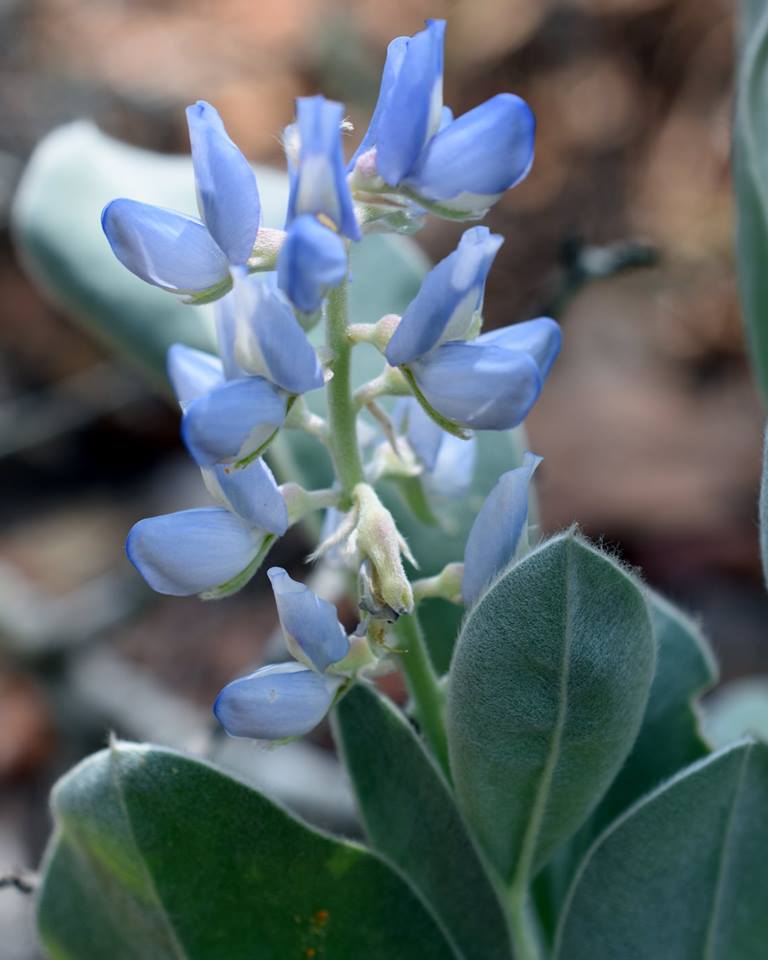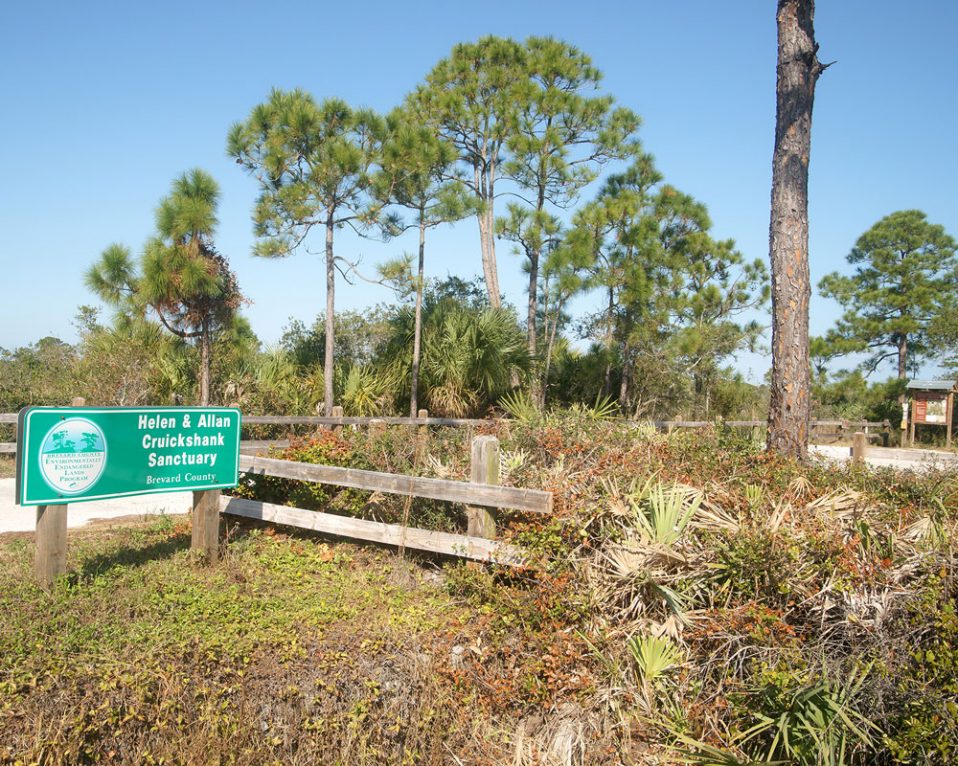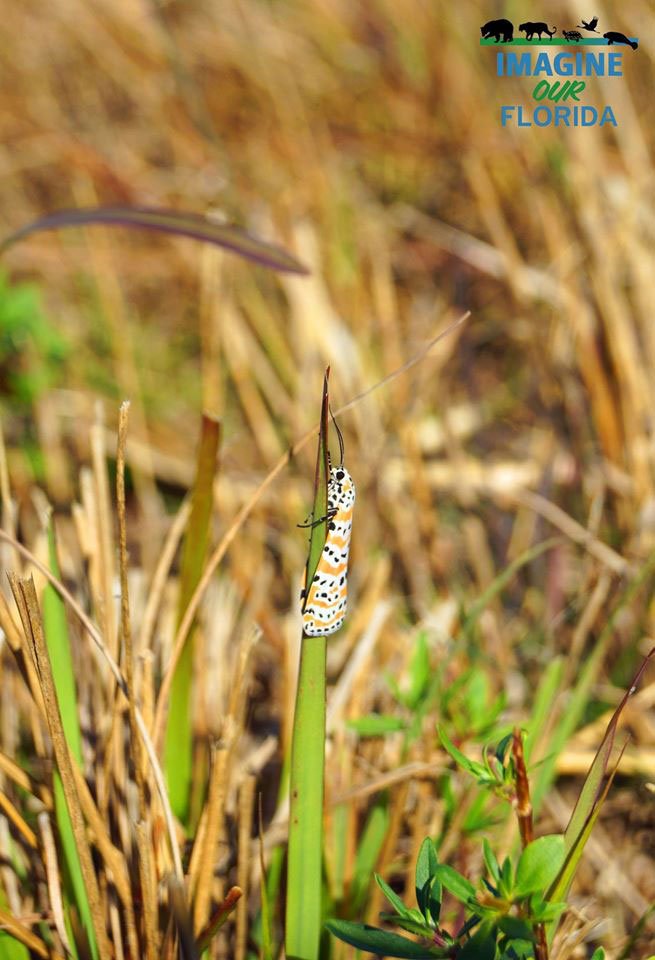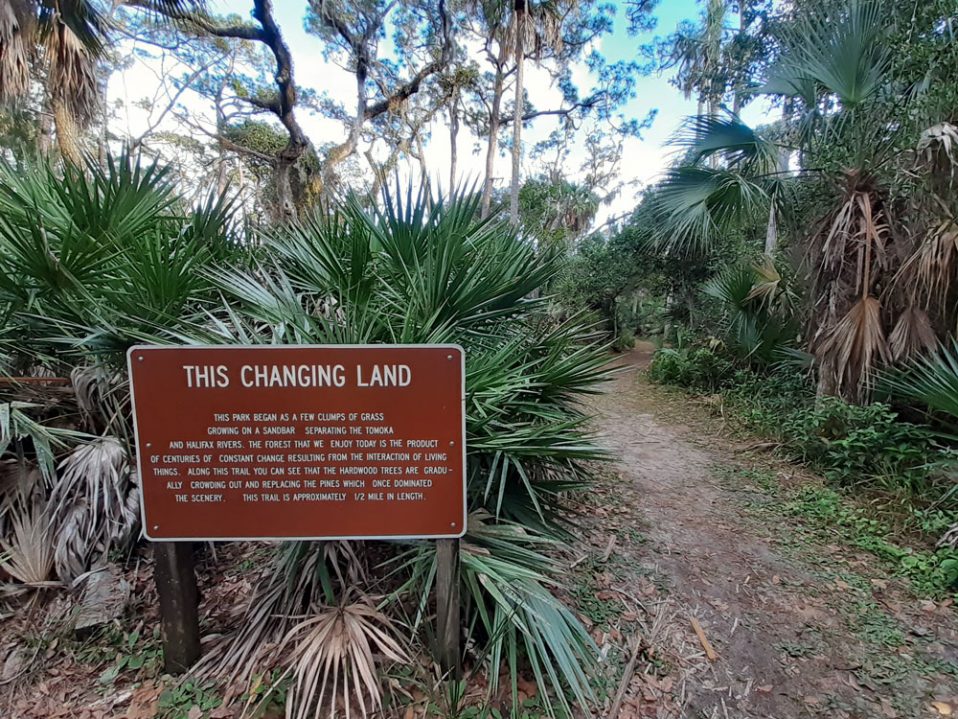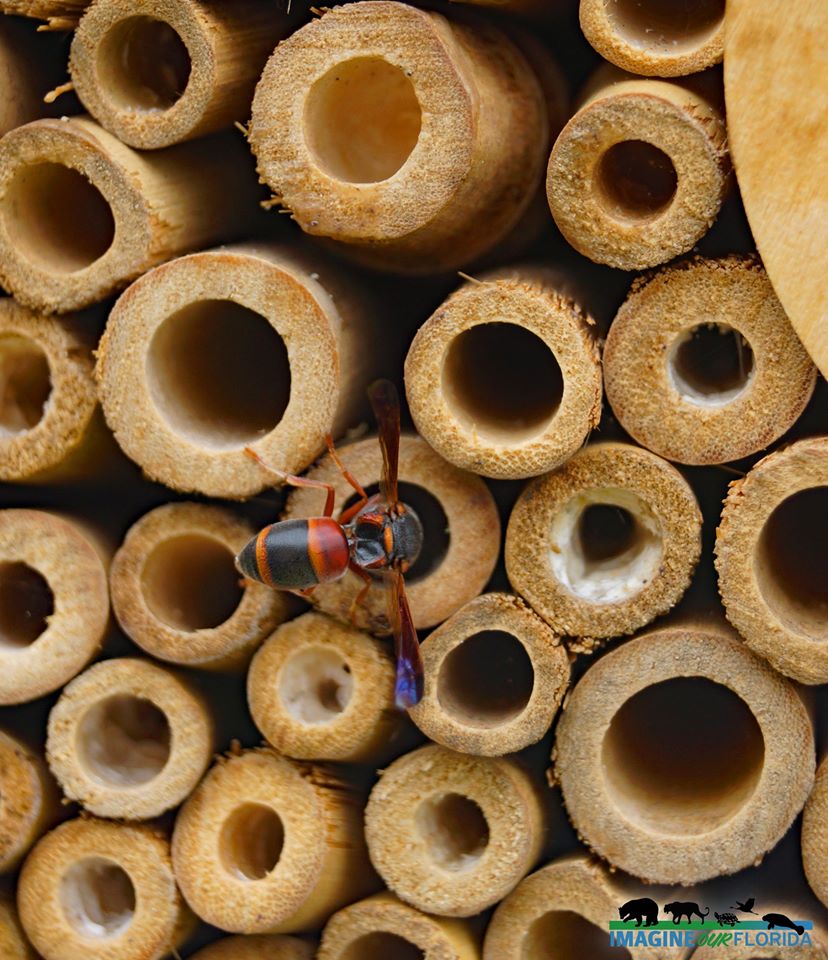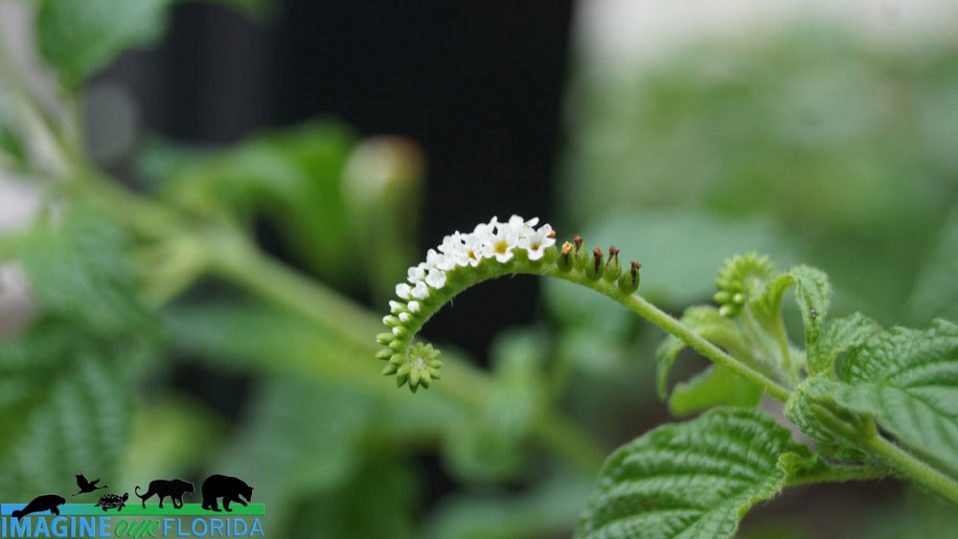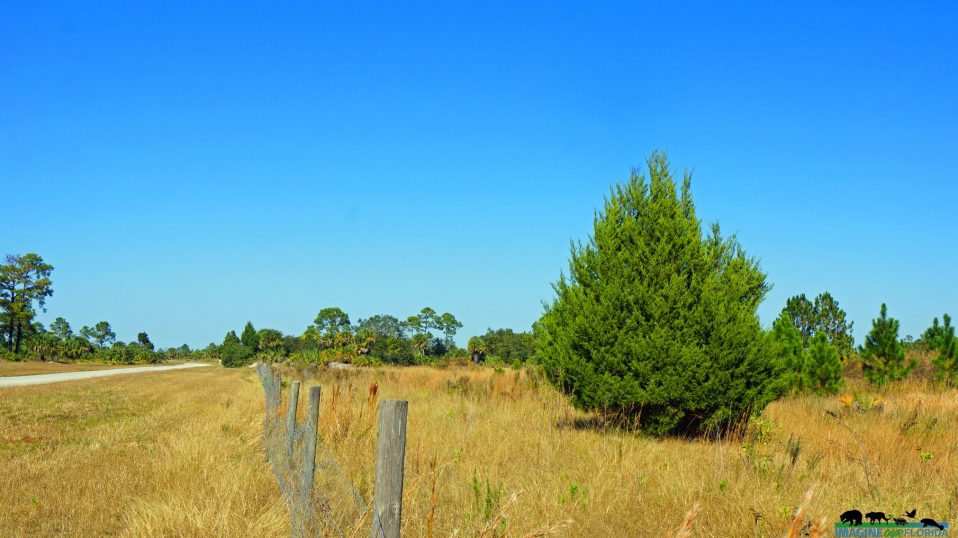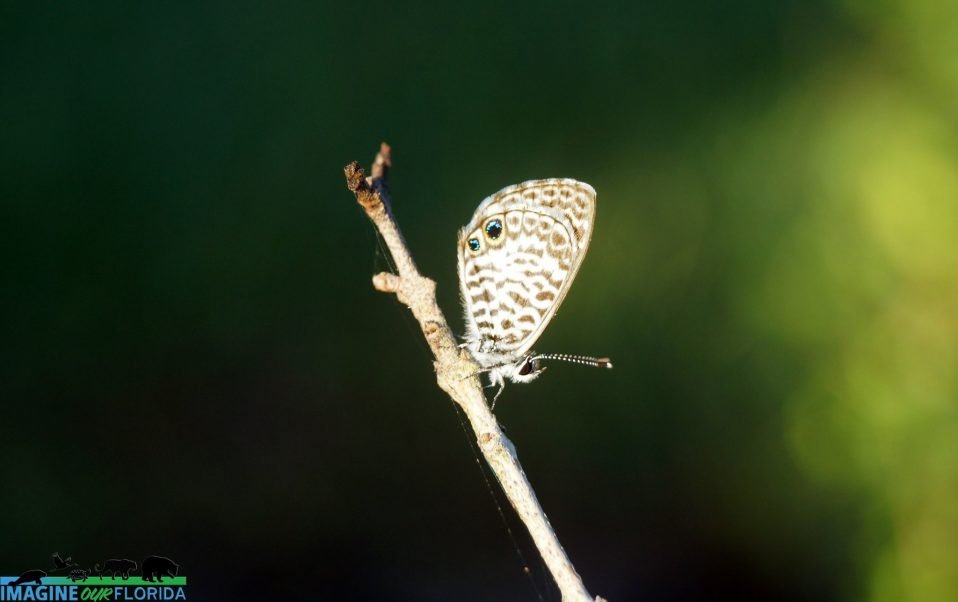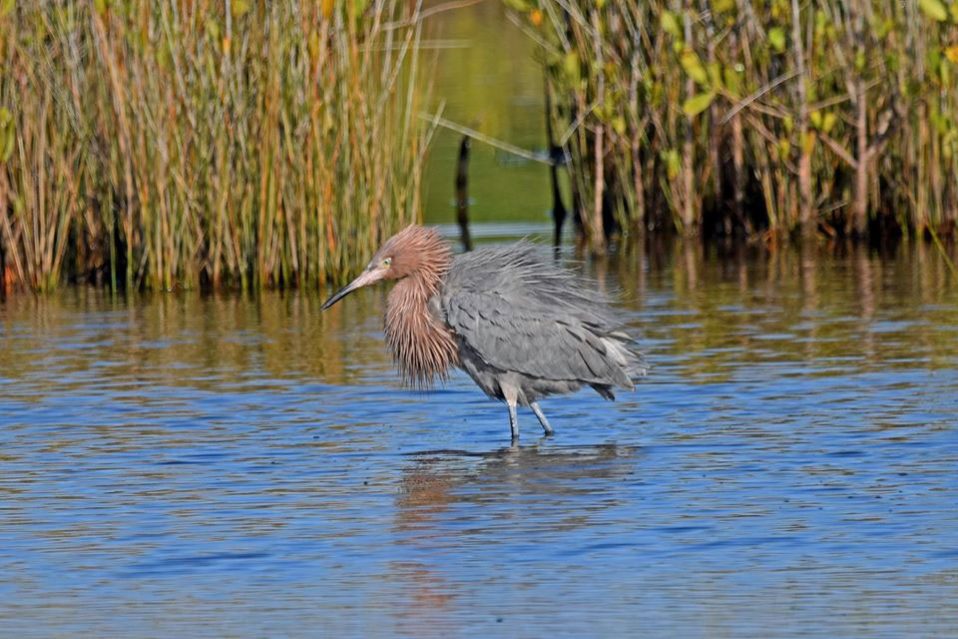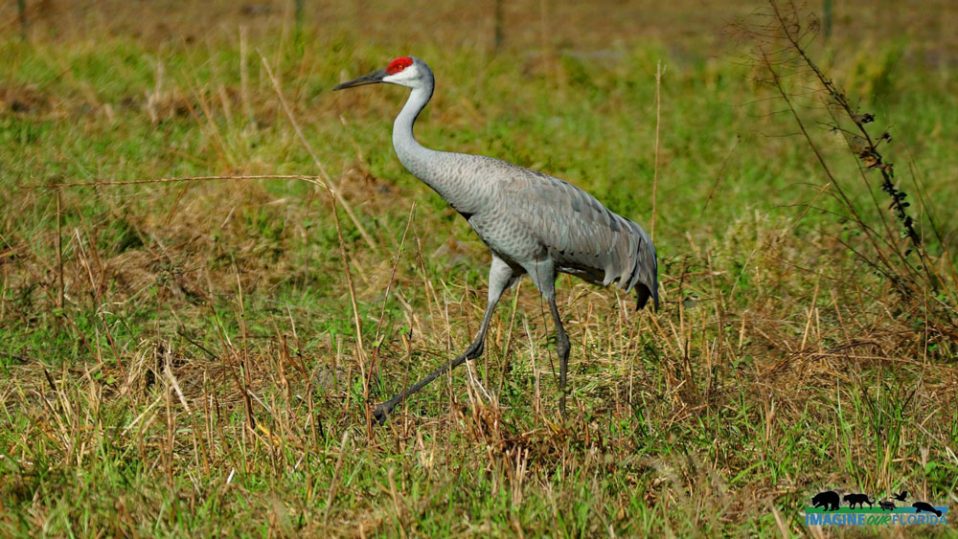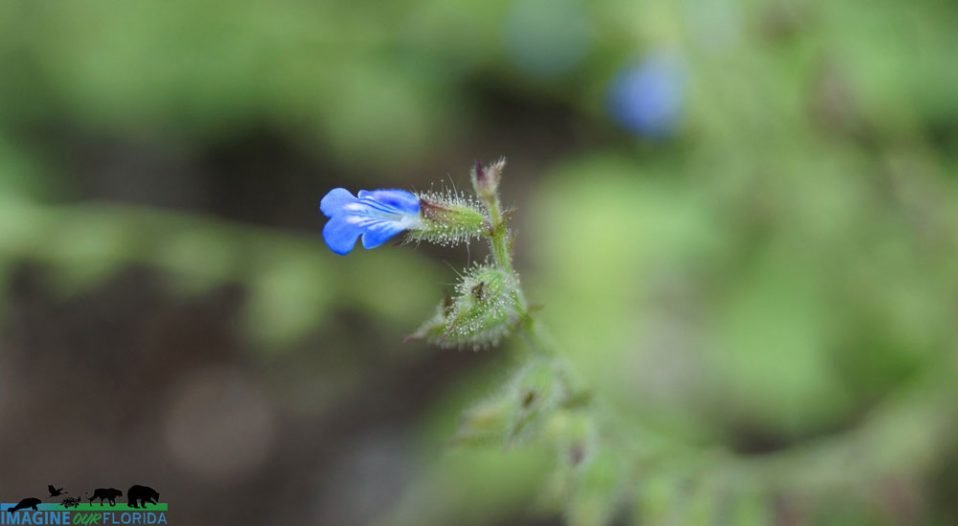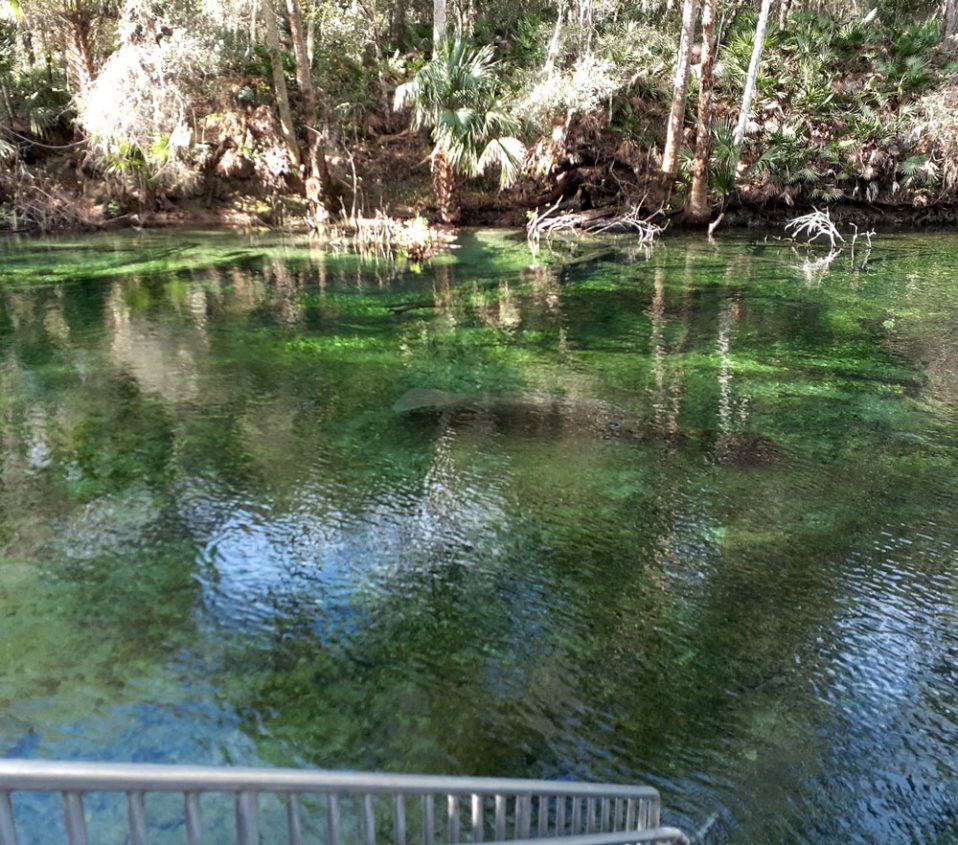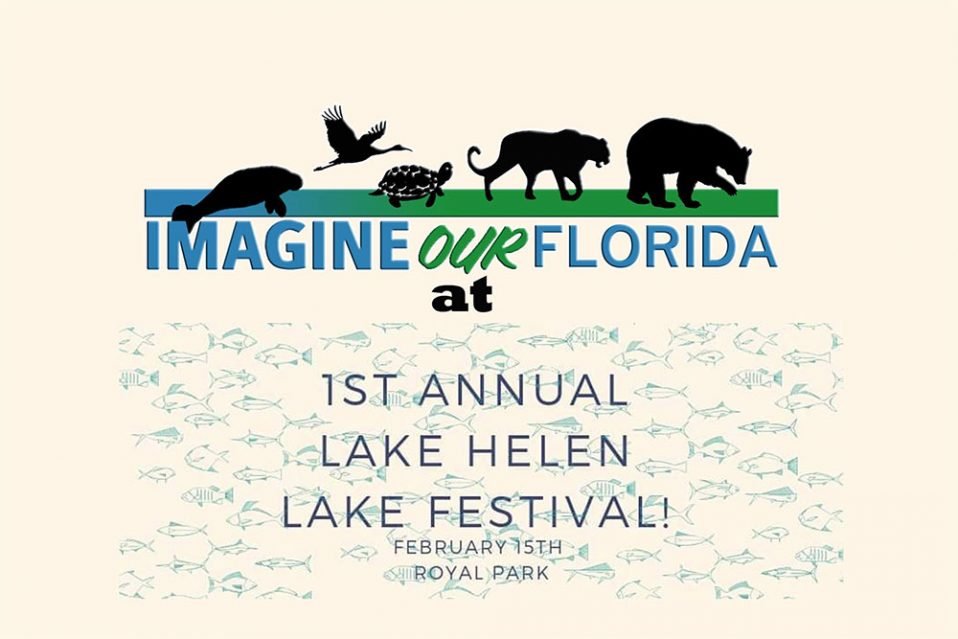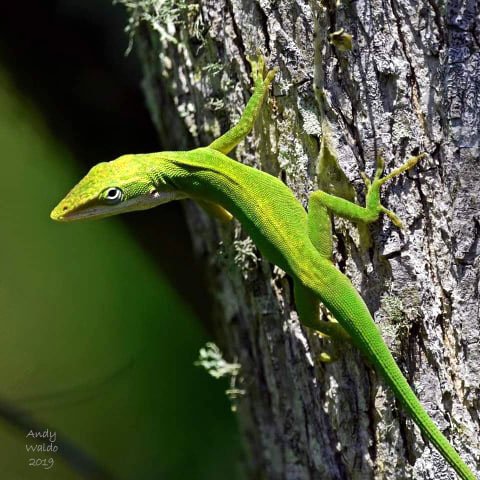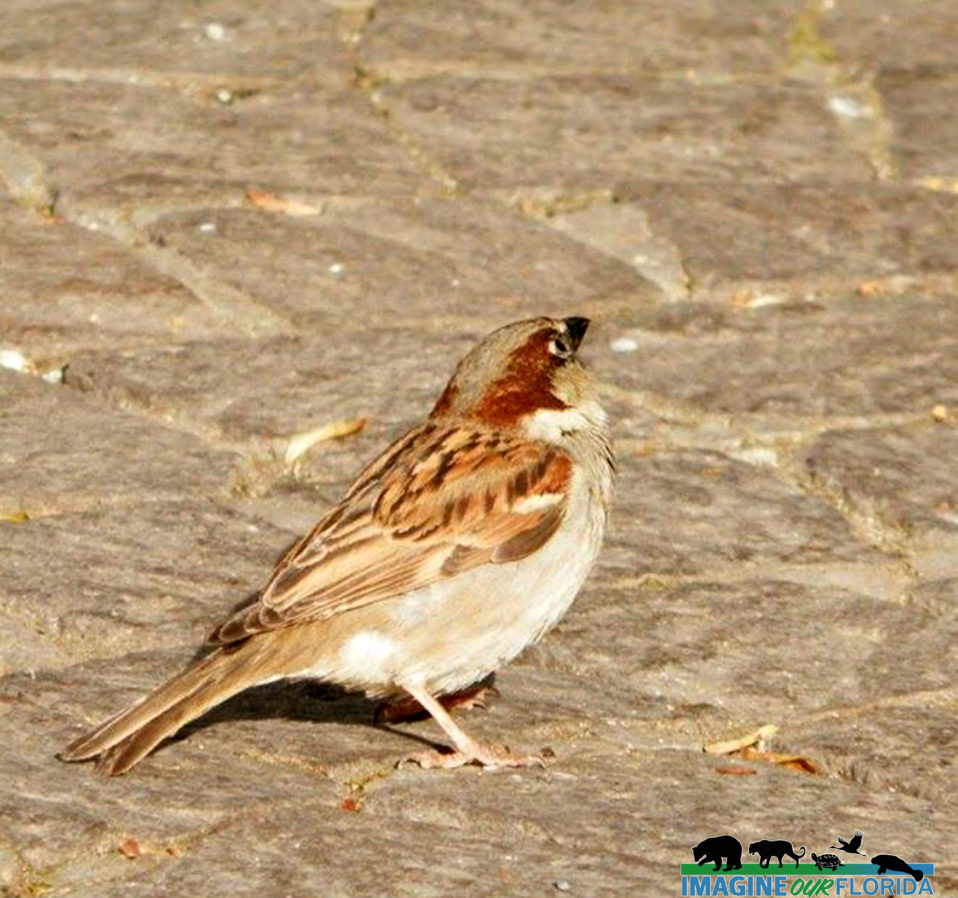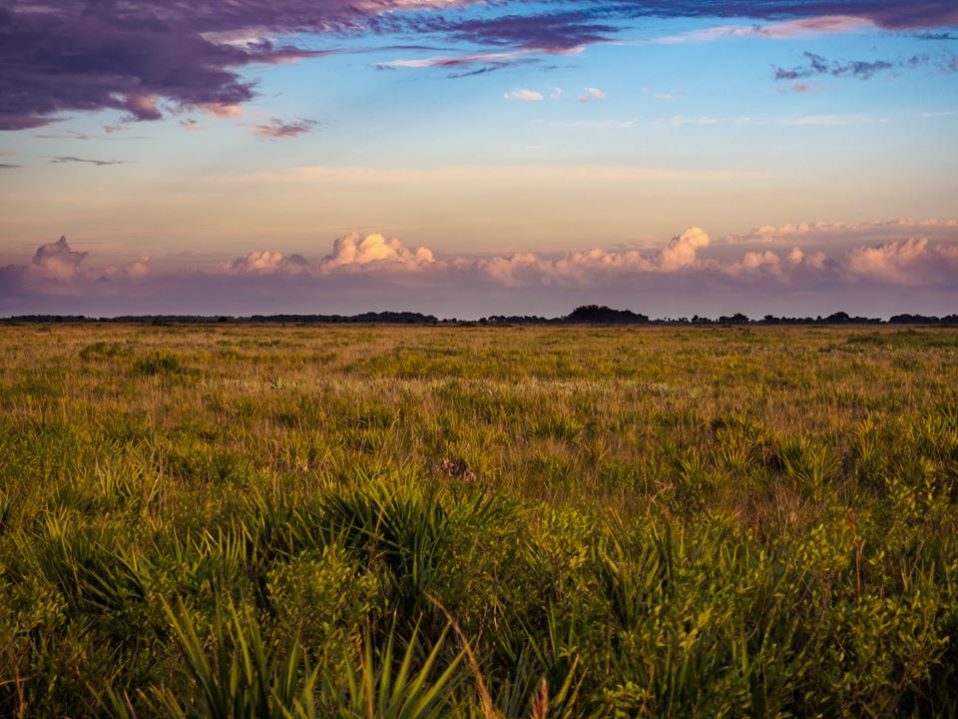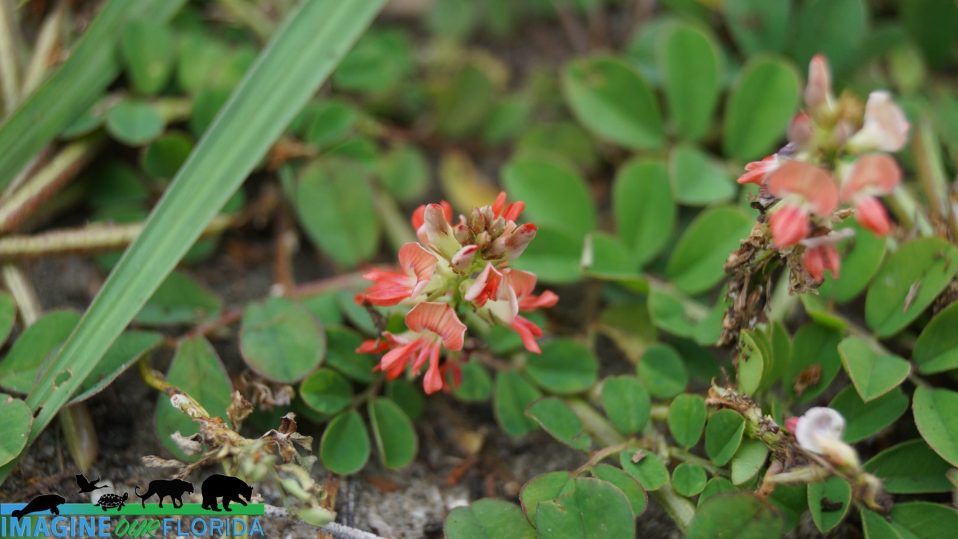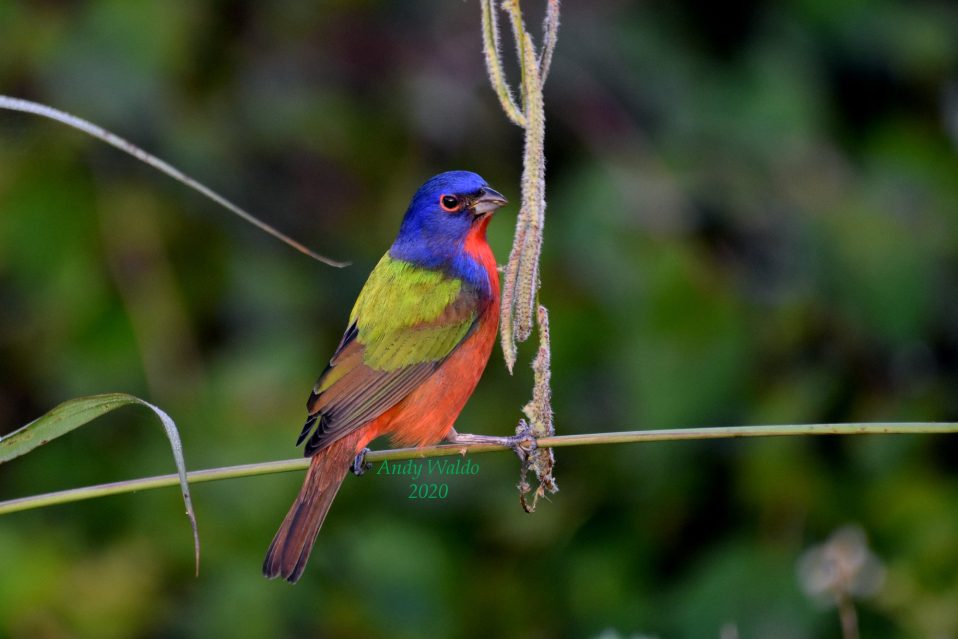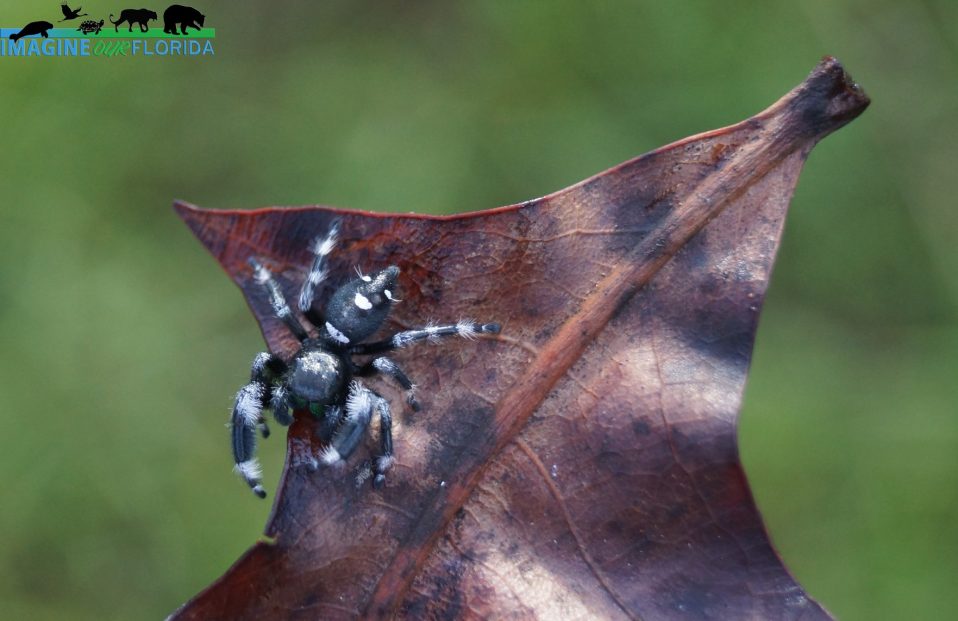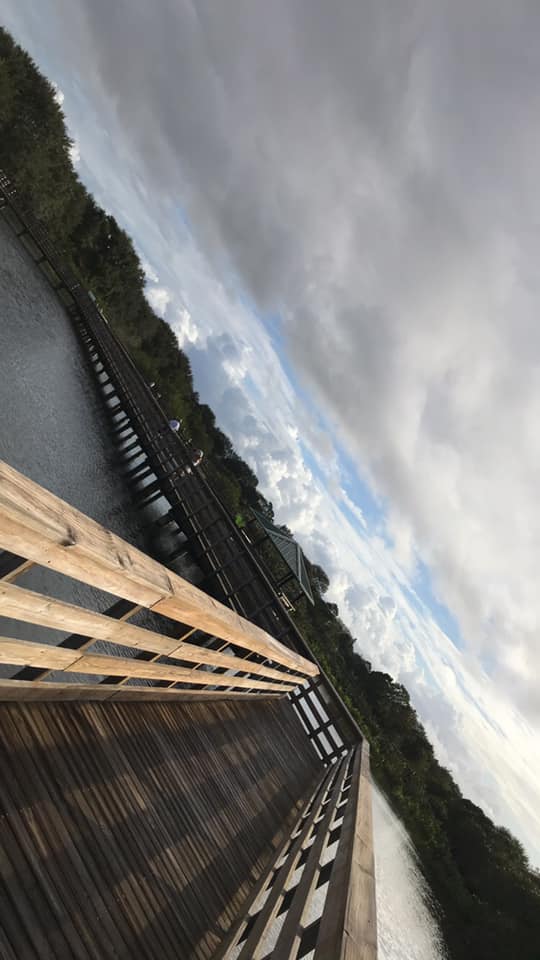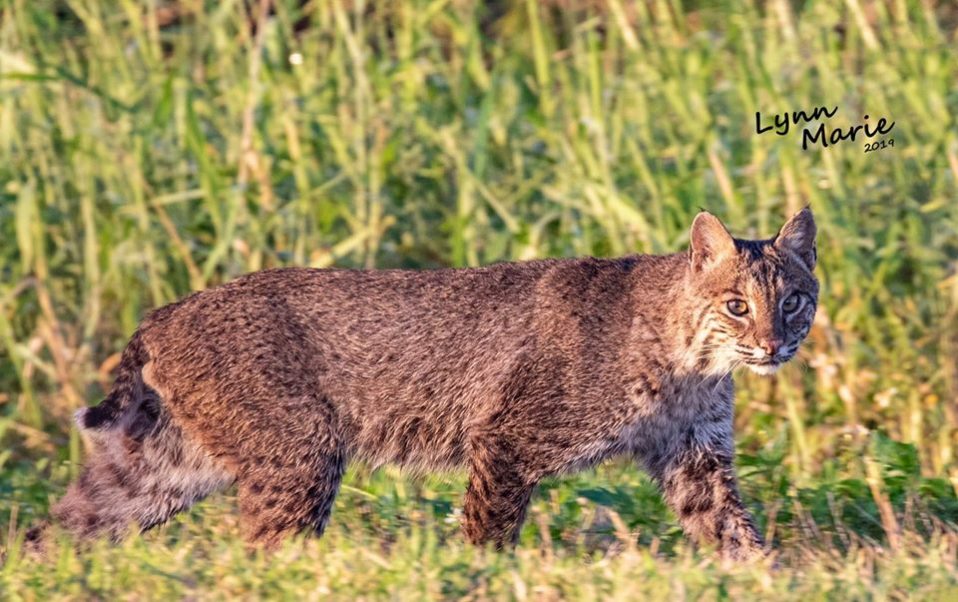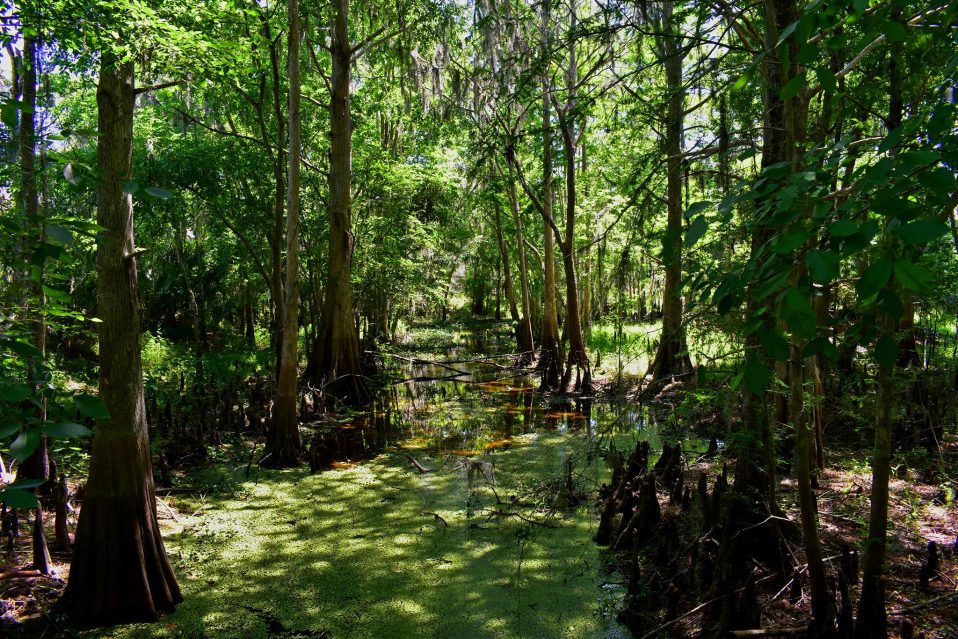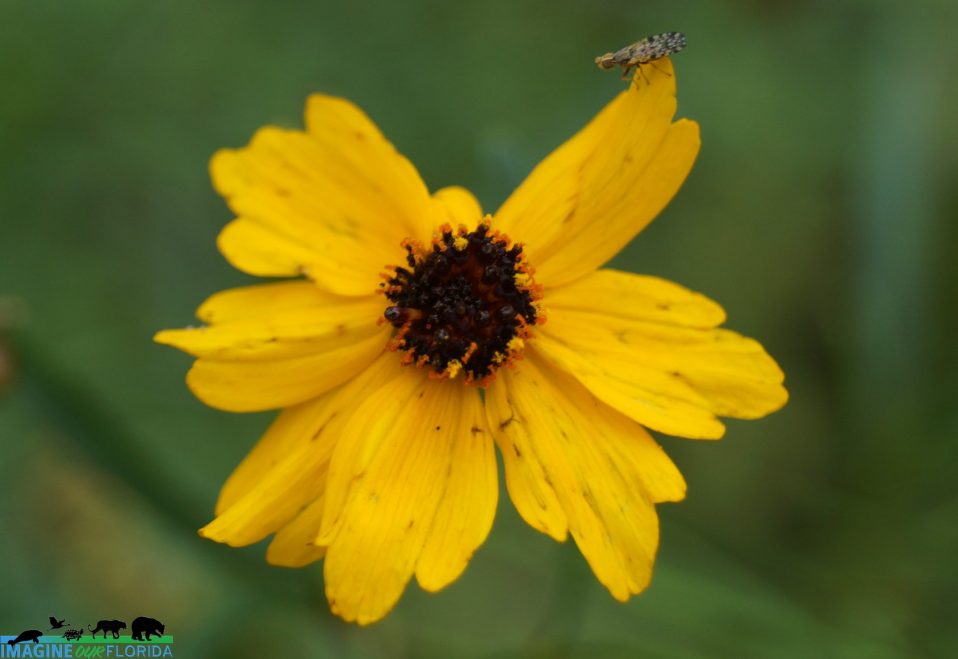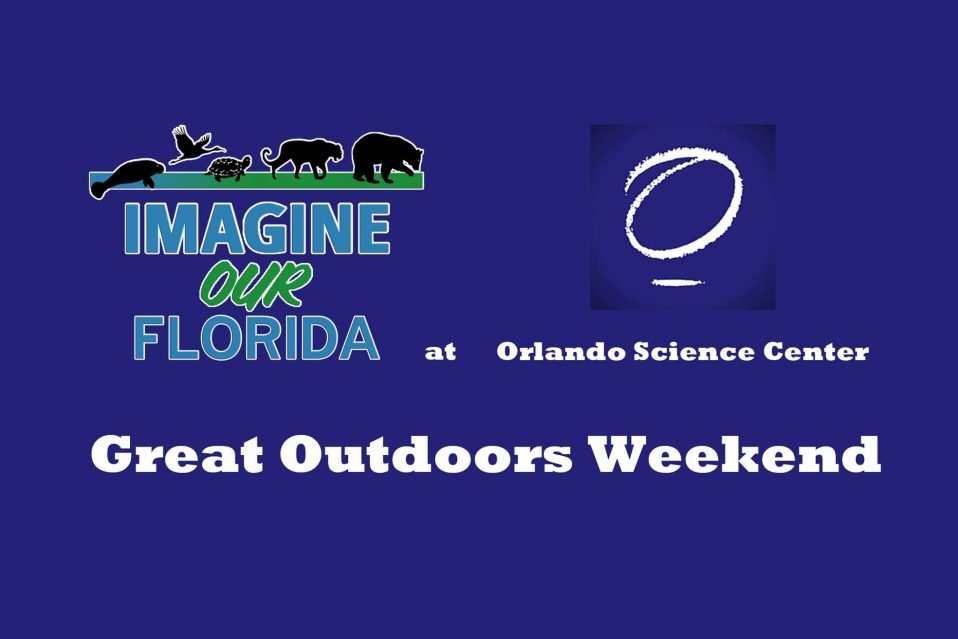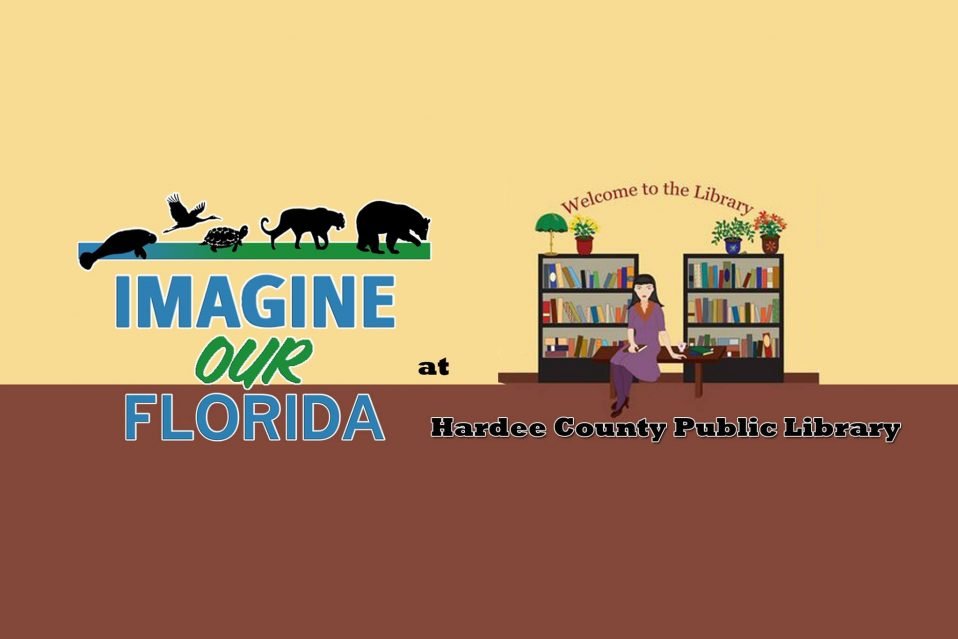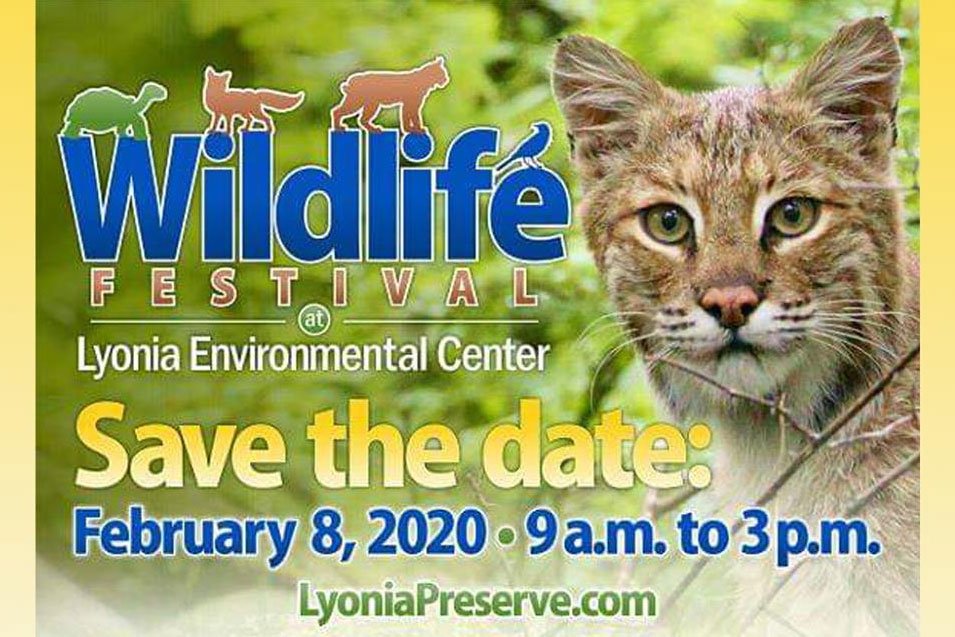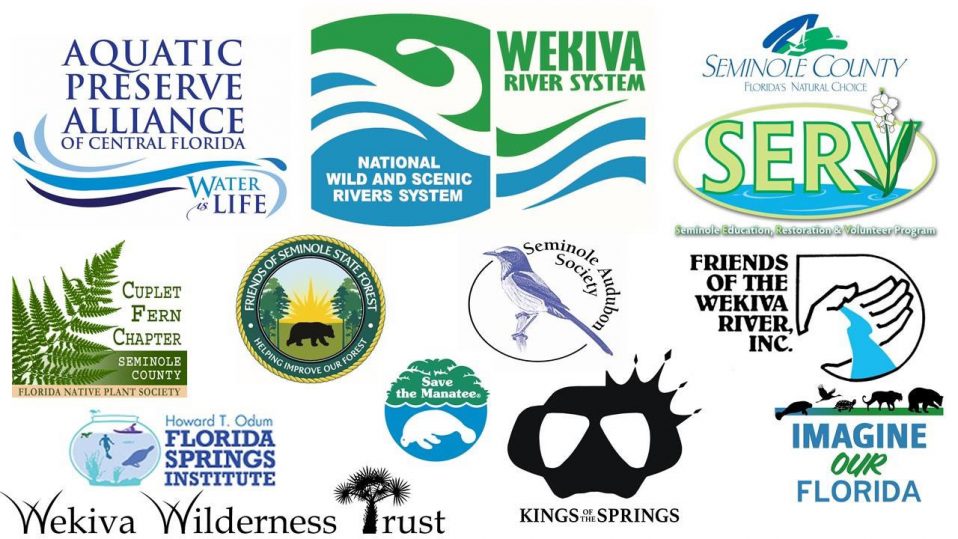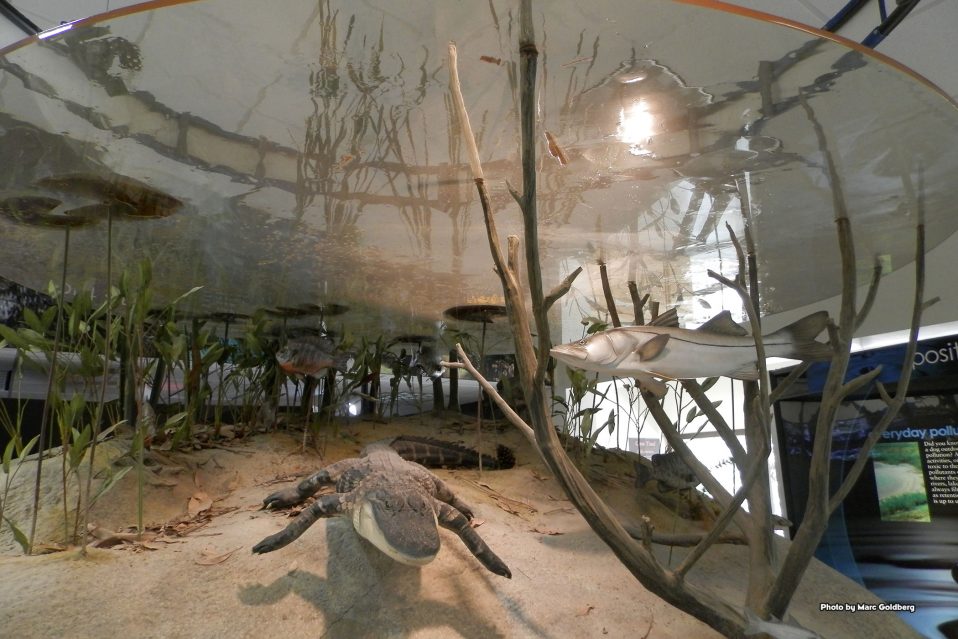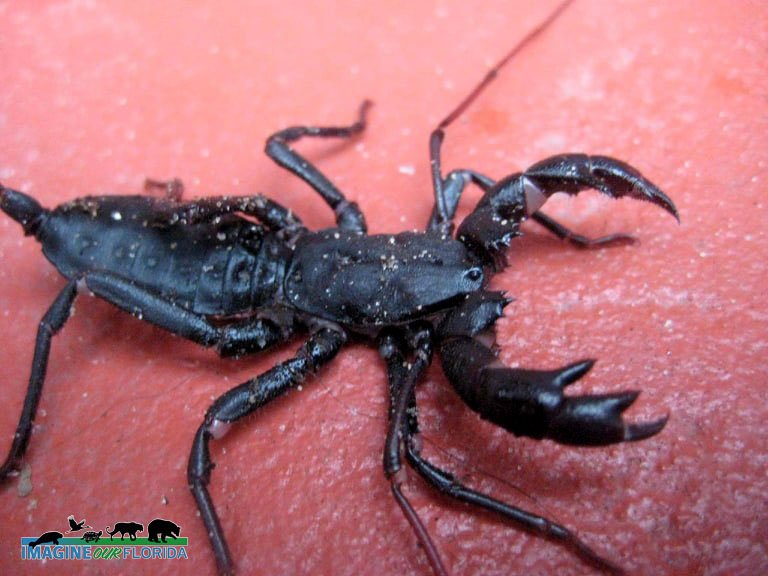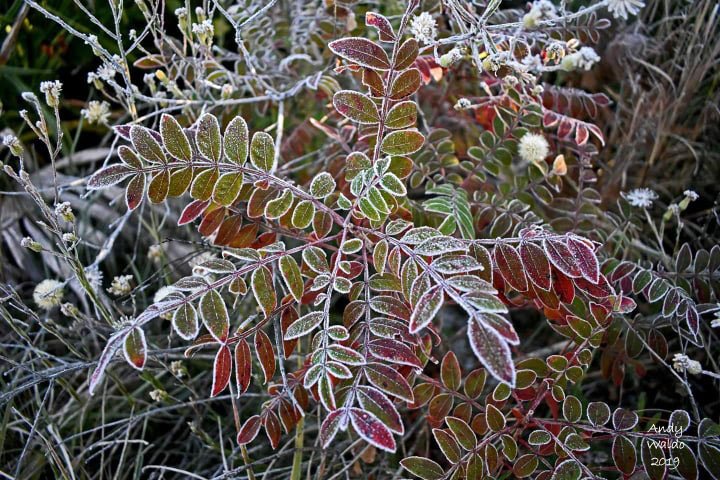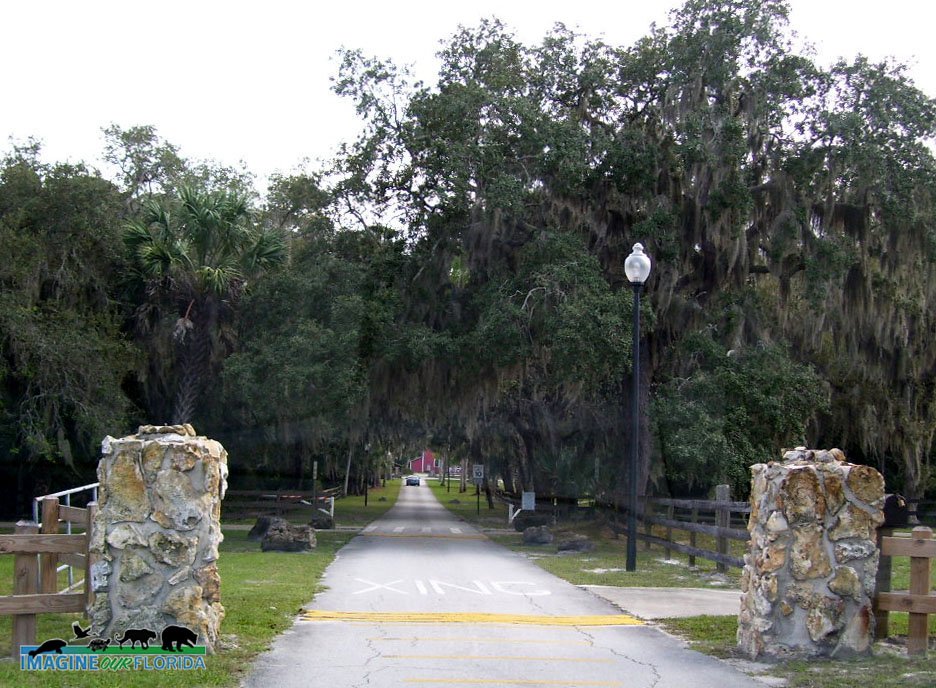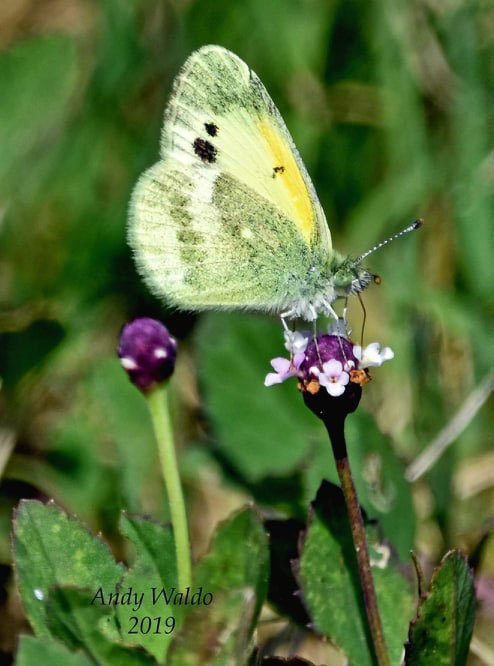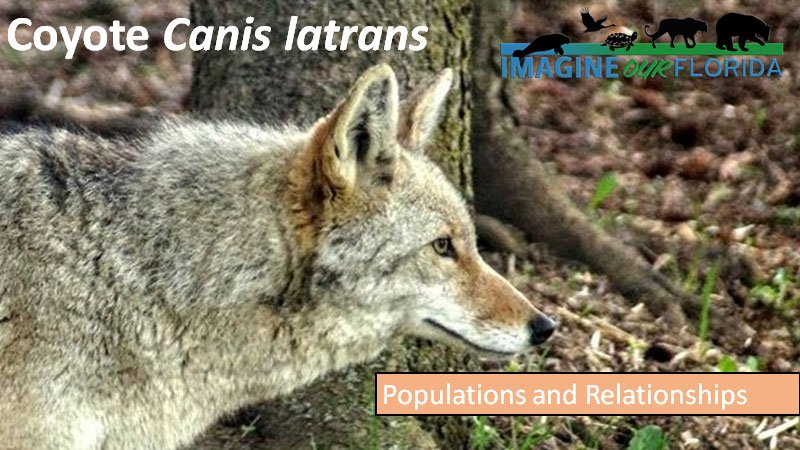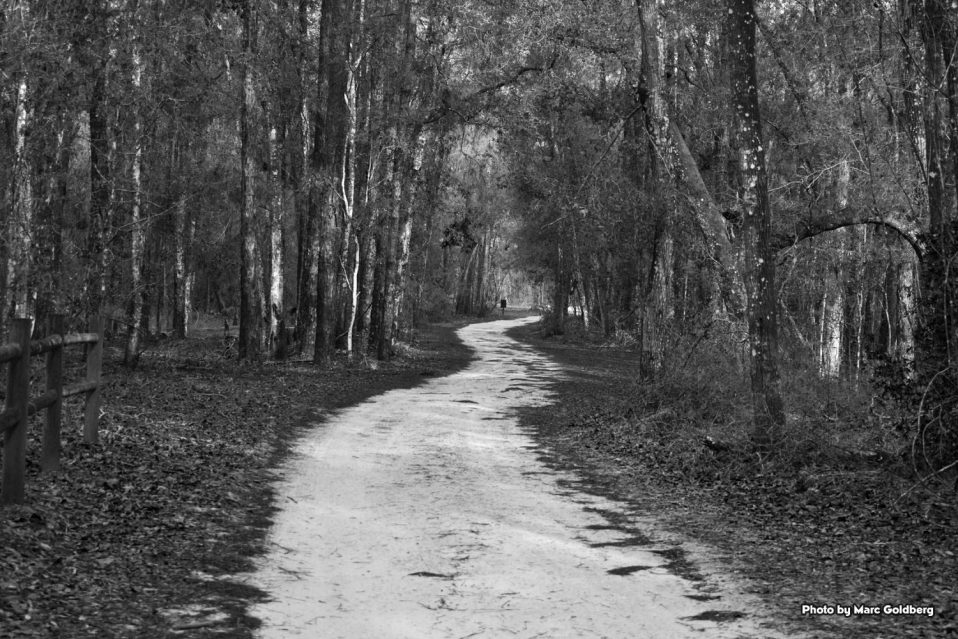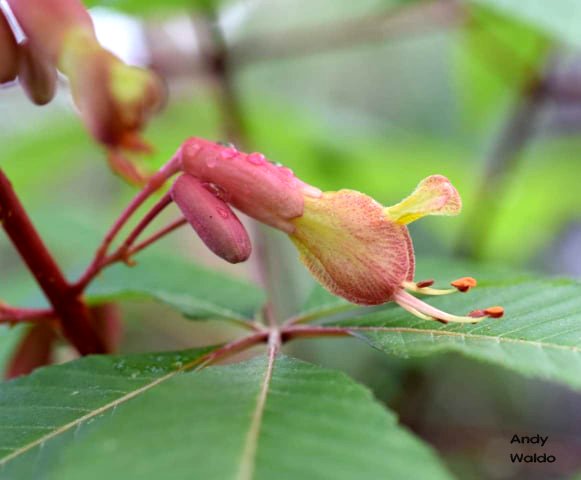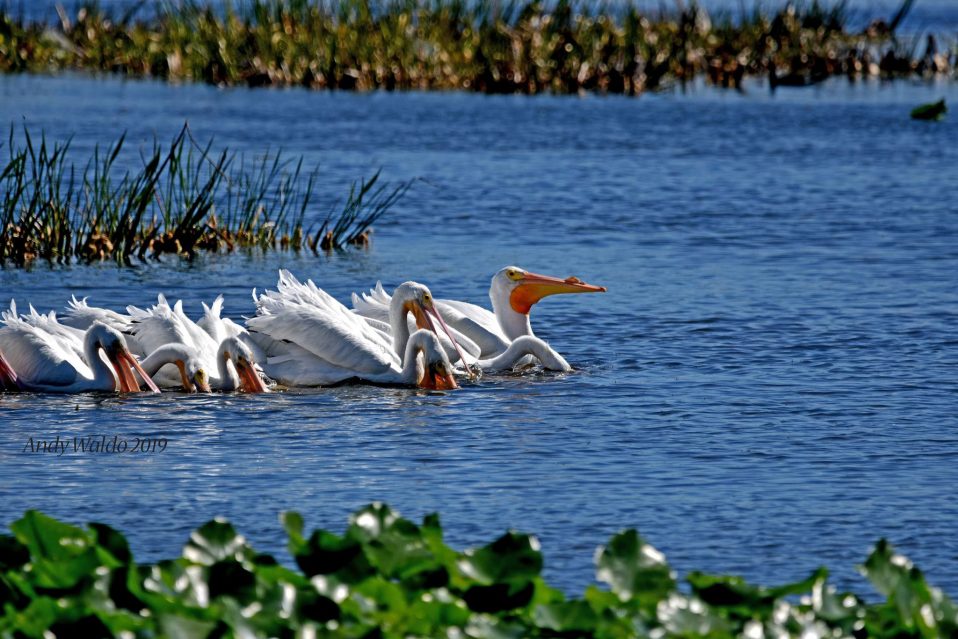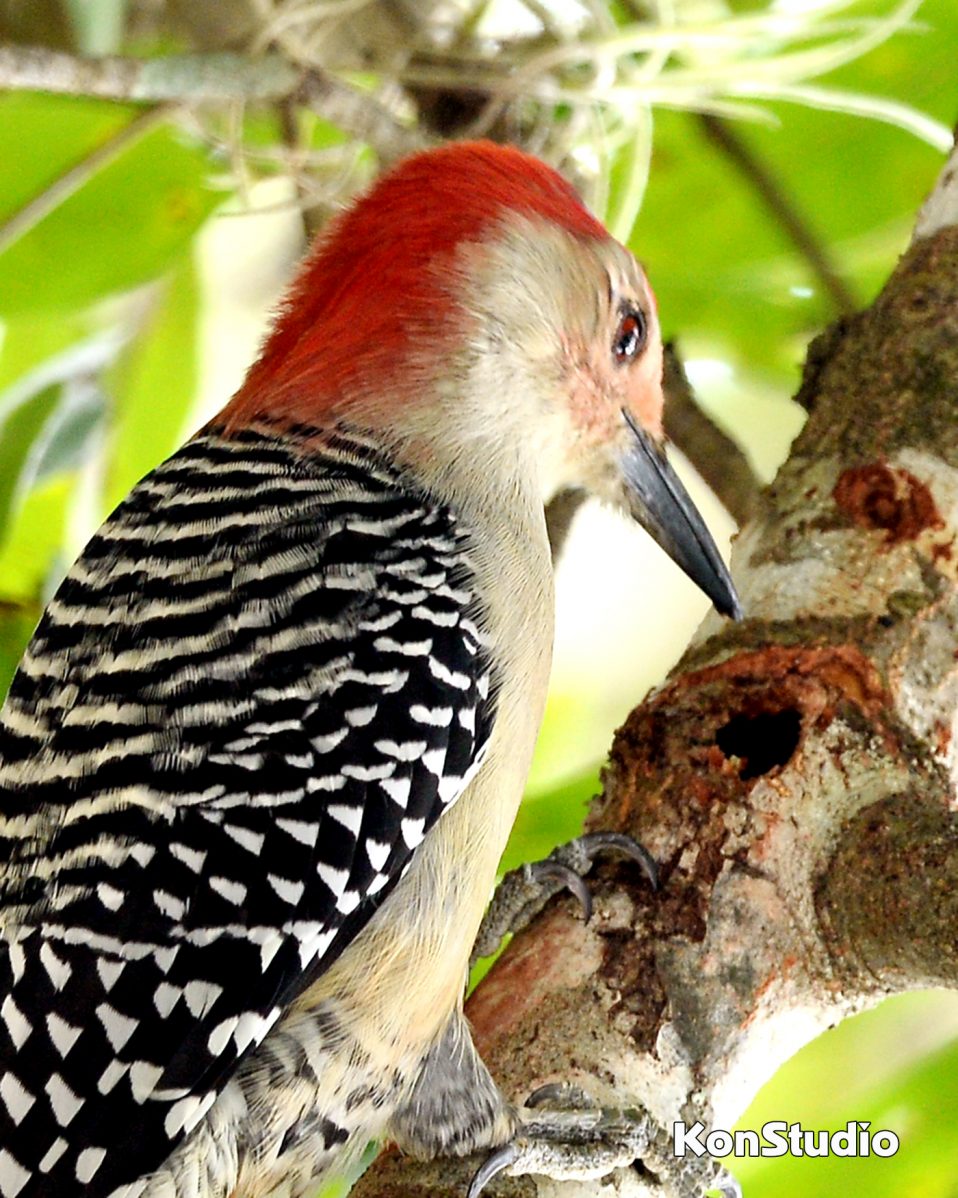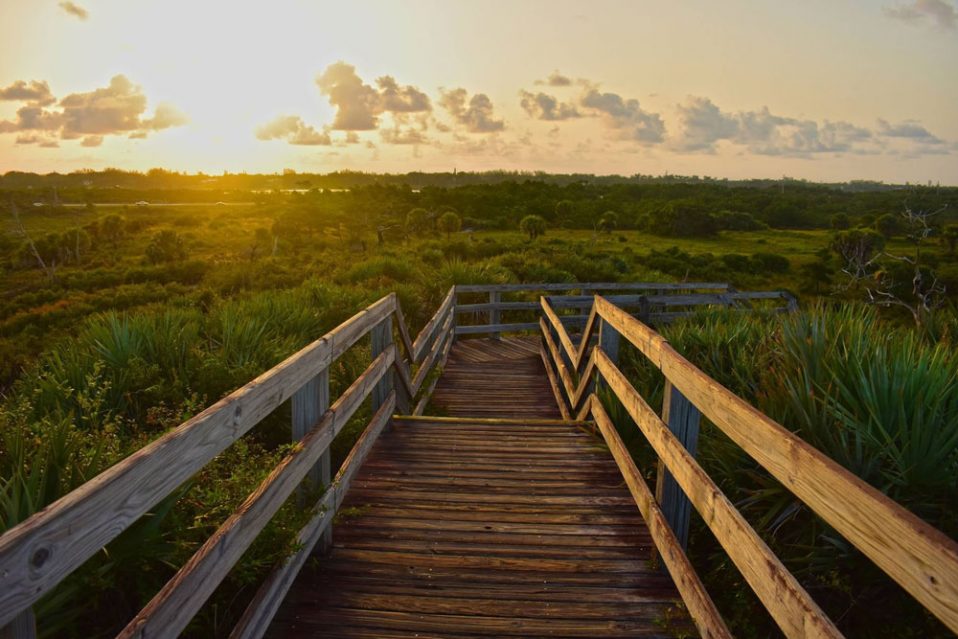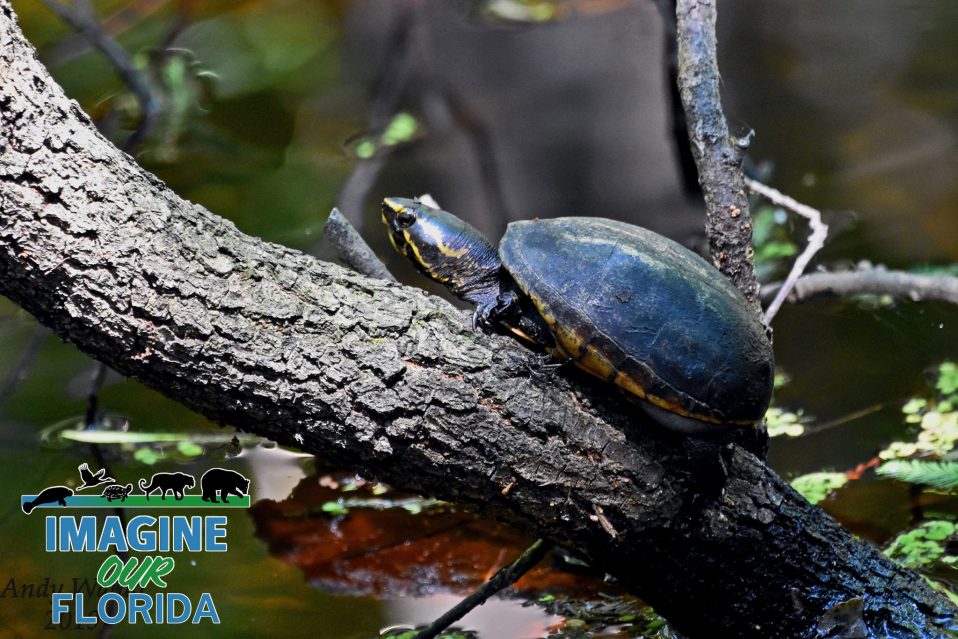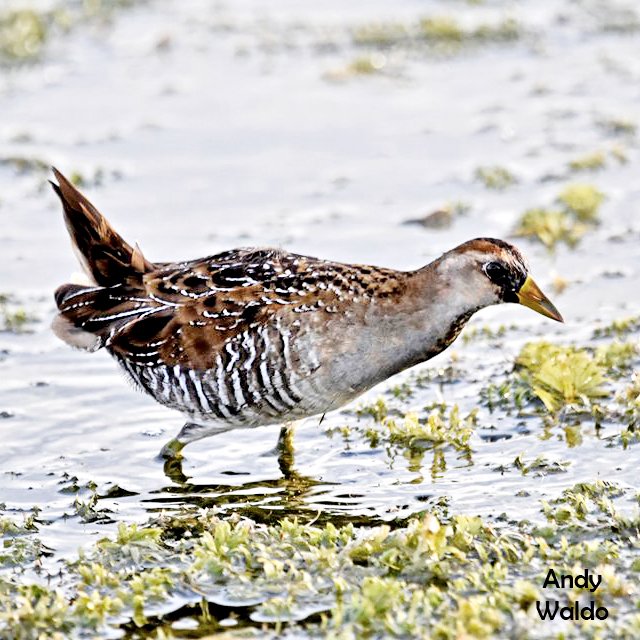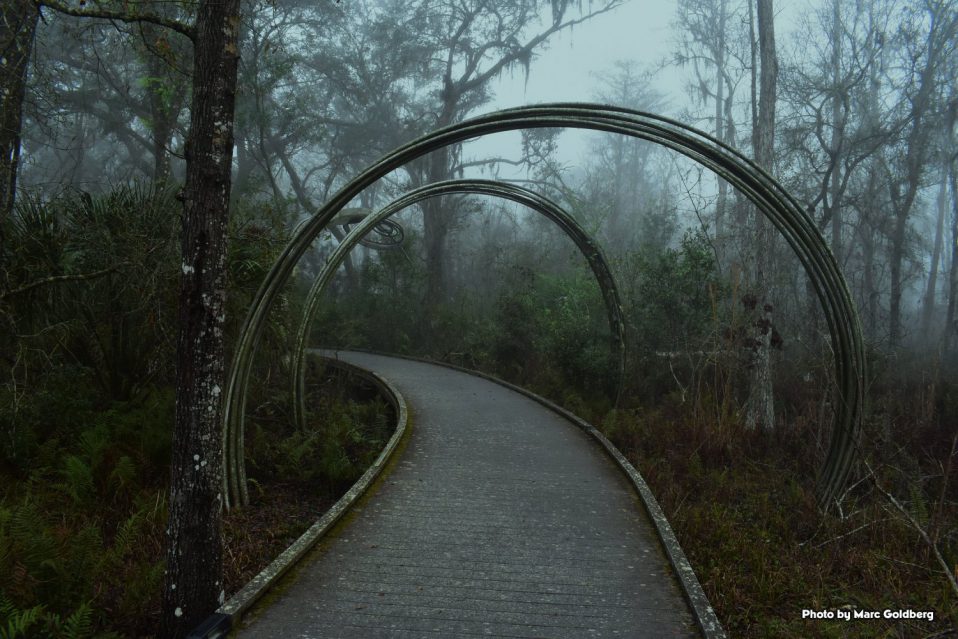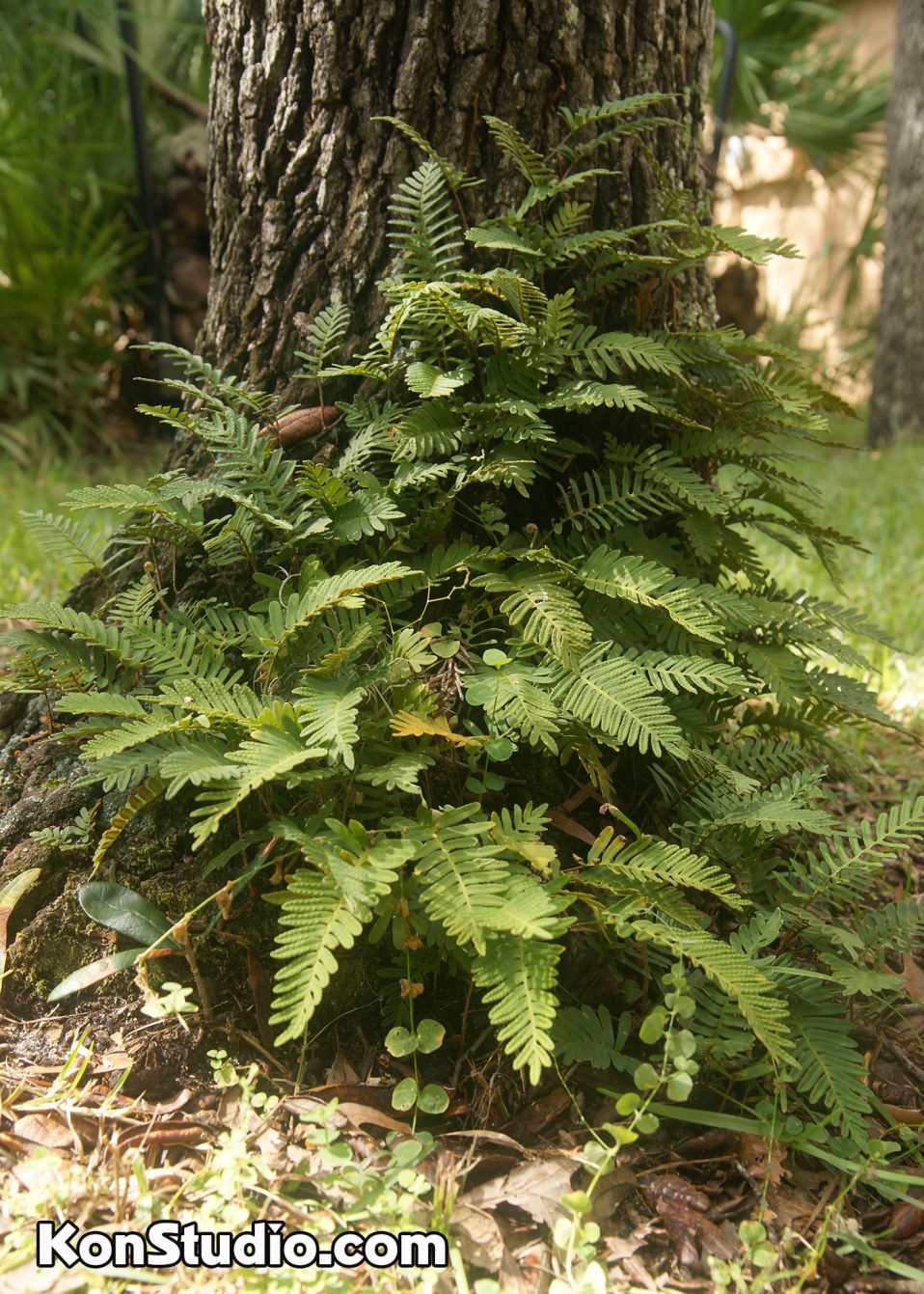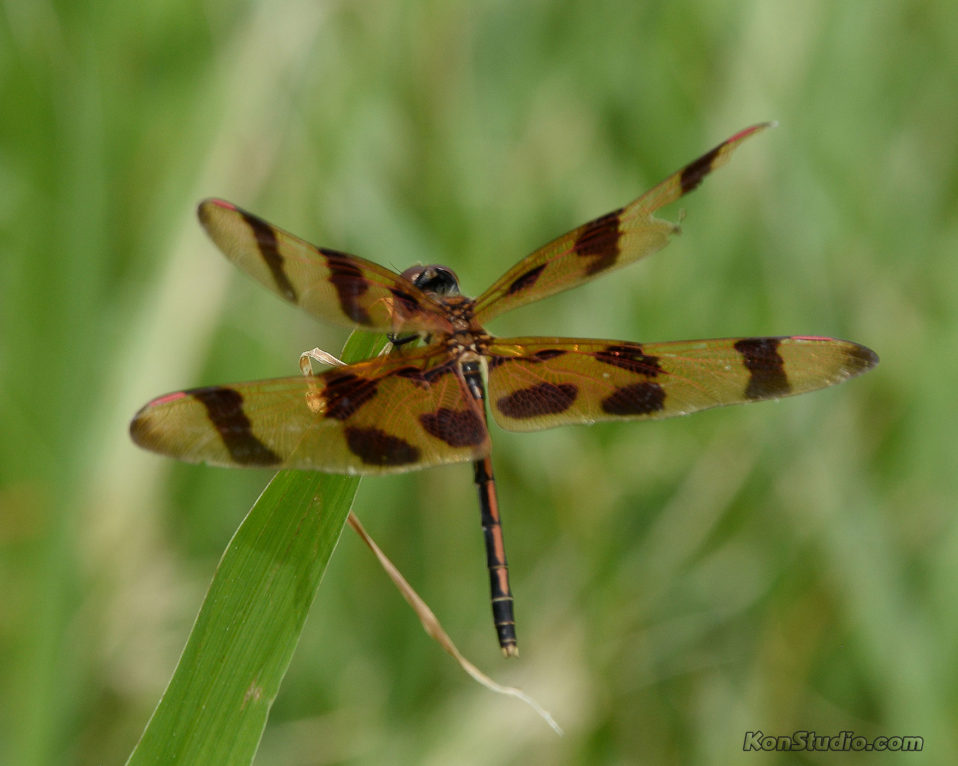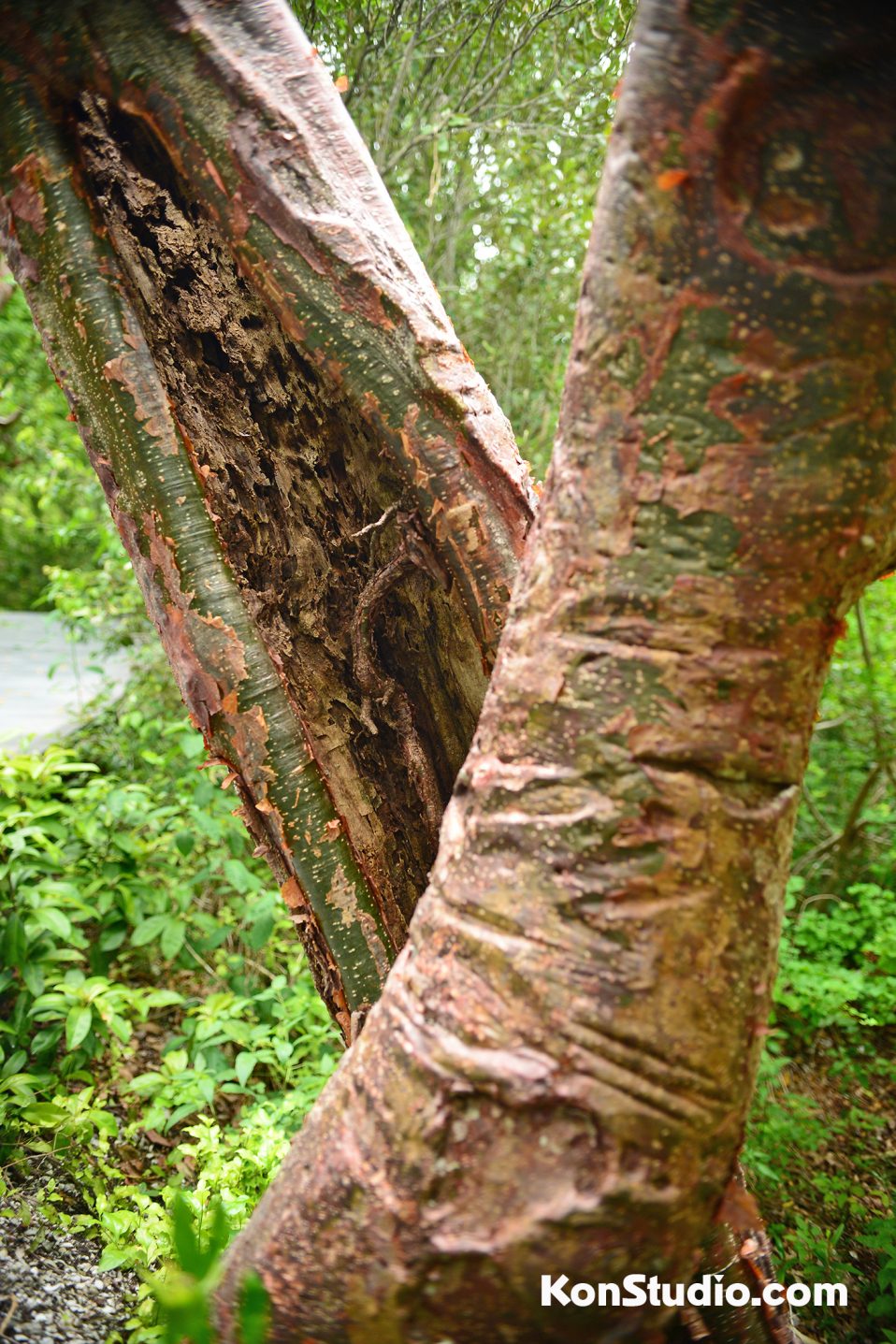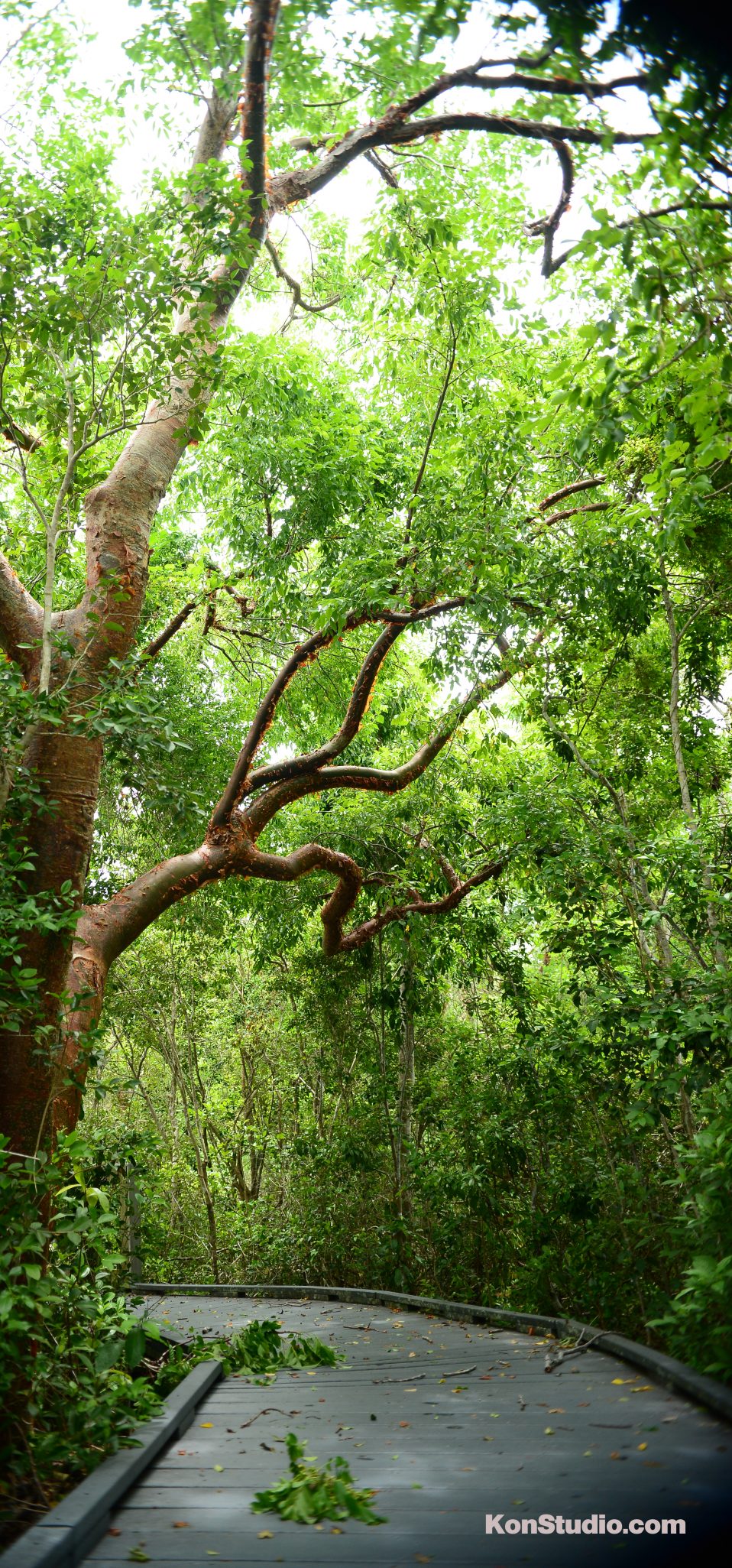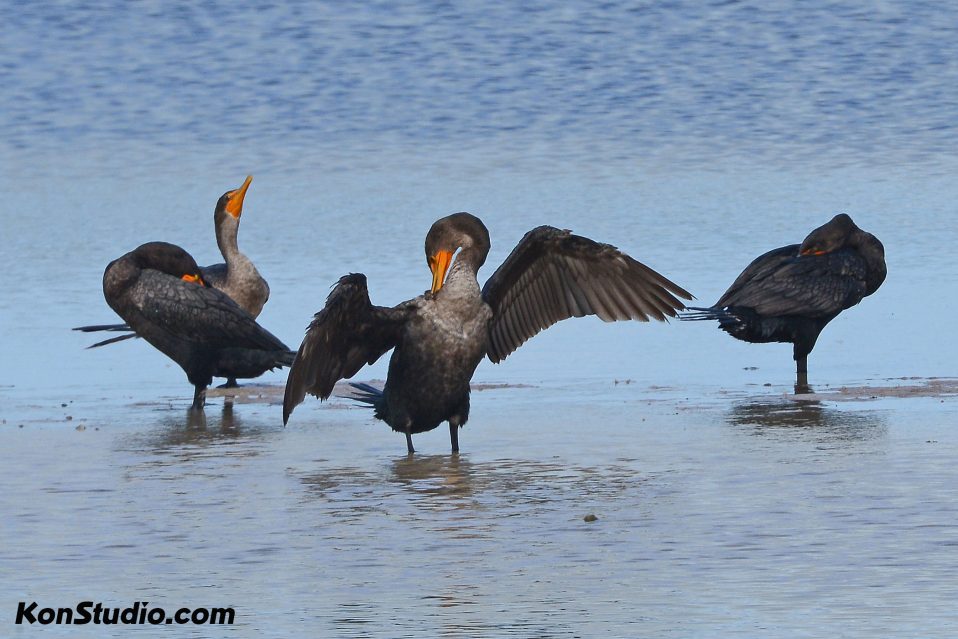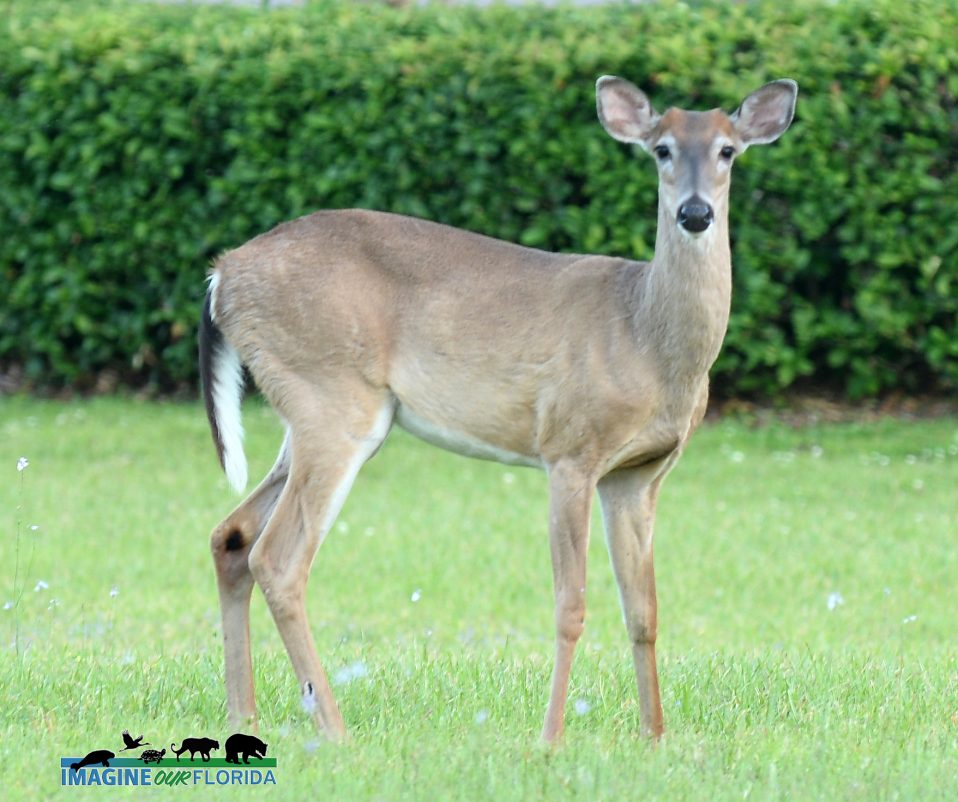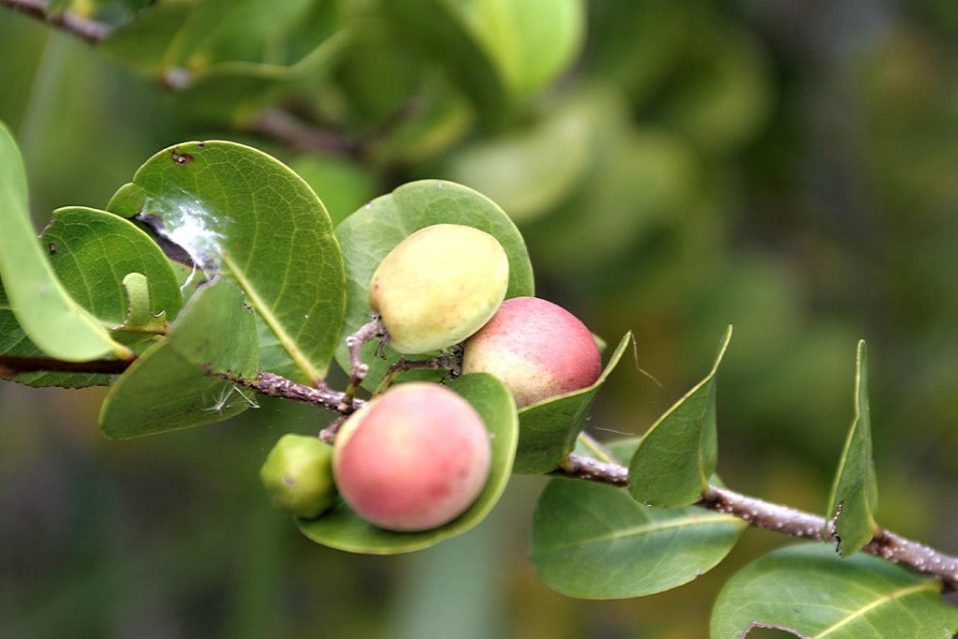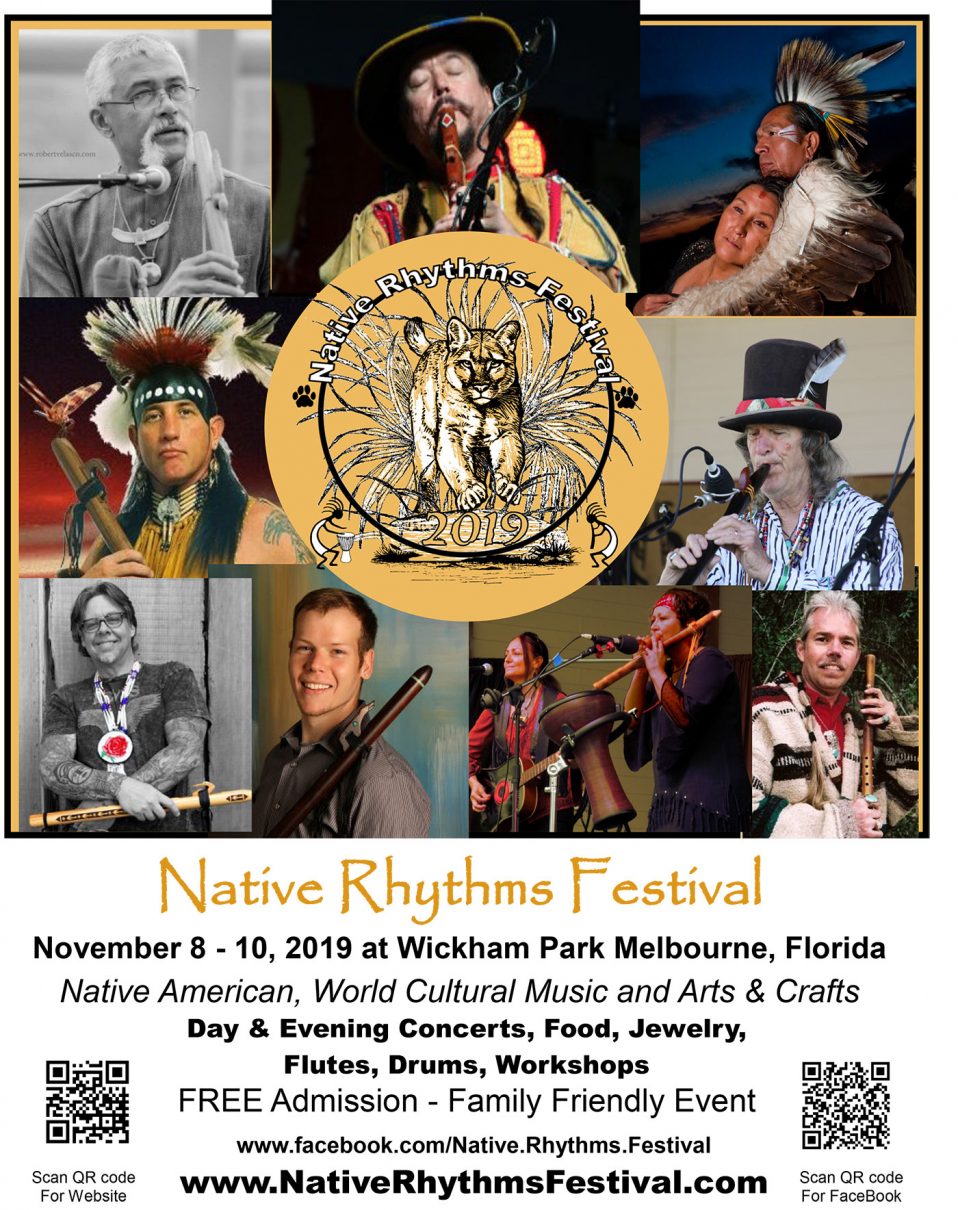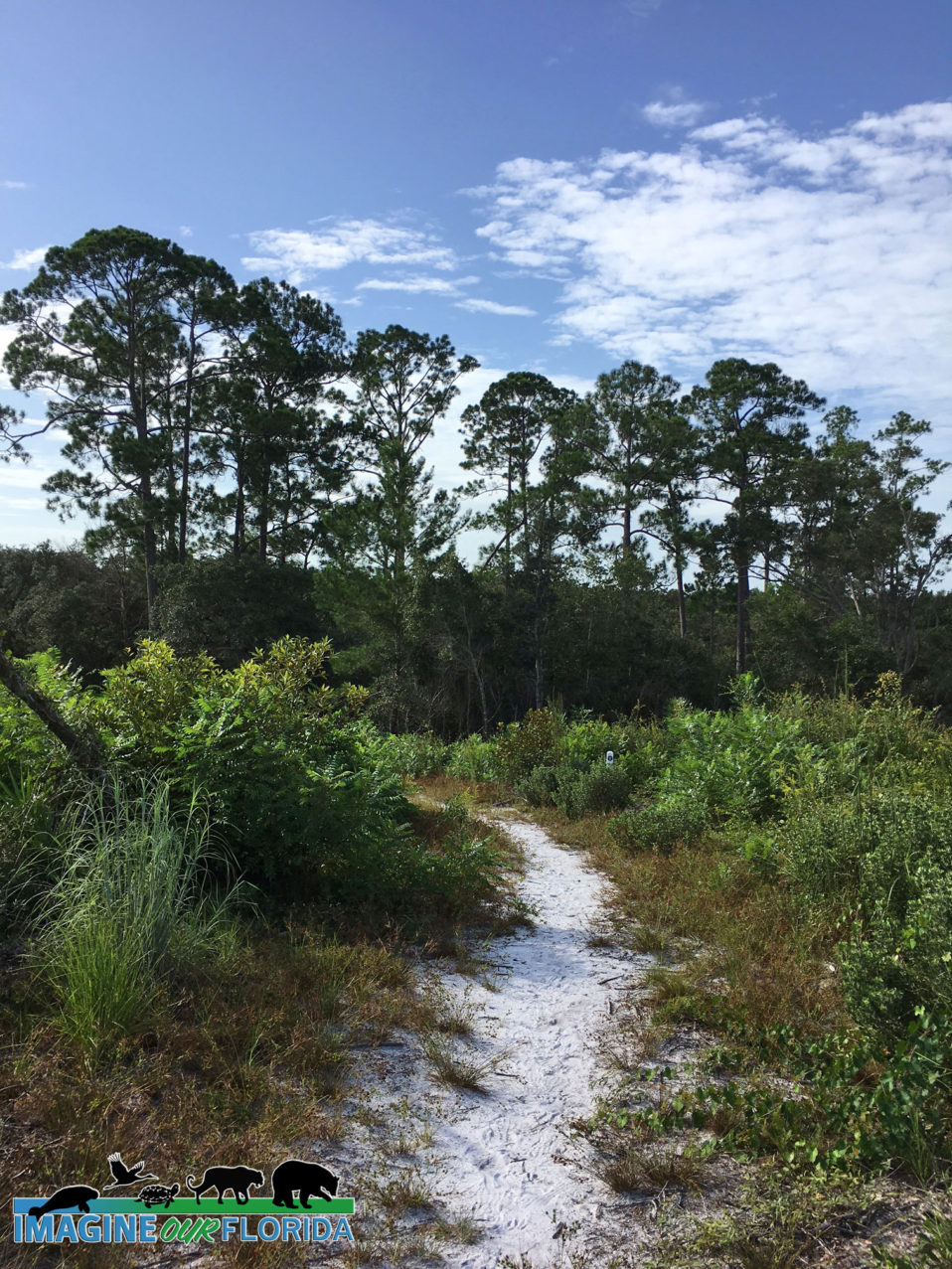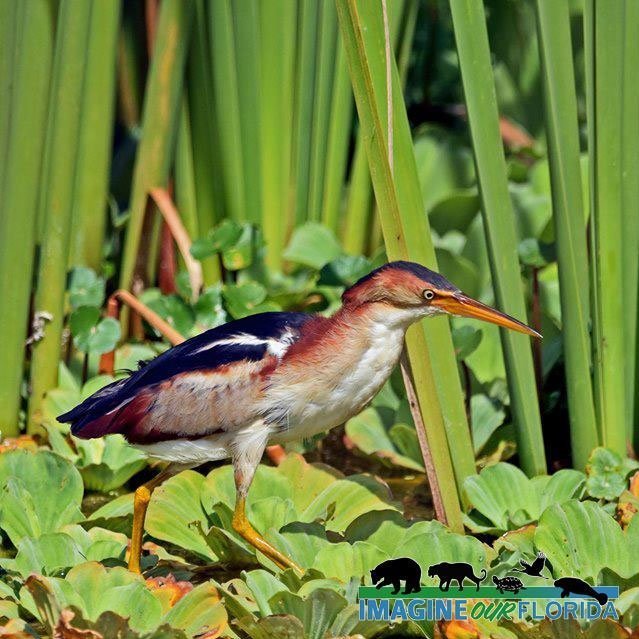Add an IOF wildlife magnet to your refrigerator or your collection. Choose from the Florida panther, Black bear, Tortoise, Wading Birds, or the Manatee. Dimensions are 3-1/8″ tall x 2-1/8″ wide. Strong magnet to hold papers and notes to your refrigerator or anything a magnet will stick to.
Clothing – 2022 IOF Manatee T shirt
100% Preshrunk Cotton. Unisex style. This style/color is being discontinued.
Fred Howard Park
Fred Howard Park There are 155 acres on the Gulf of Mexico in Tarpon Springs where you can revel in the beauty of white sandy beaches and breathtaking sunsets. Named for the former Mayor of Tarpon Springs, who set aside the property for the enjoyment of residents in 1966, Fred Howard Park delights nearly 2 million residents and visitors every year! Explore pine flatwoods, sandhills, wetlands, mangrove estuaries, seagrass beds, and coastal scrub. Discover the wildlife who make their homes there. Watch for eagles, osprey, butterflies, gopher tortoises, fox squirrels, manatees, and dolphins. Stop along the mile-long causeway to sunbathe, then cool off with a quick dip in the Gulf. Paddle your kayak or canoe in the Gulf or experience the thrill of windsurfing. Bring your lunch to enjoy in one of 9 picnic shelters and be sure to stop by the playground for a nostalgic ride on the swings. For more information and a map of the park click here: https://pinellas.gov/parks/fred-howard-park/ Photo Credit: Marc Goldberg
Eastern Cottontail
The Eastern Cottontail (Sylvilagus floridanus) is best known for the white puffy fur on its tail’s underside. Cottontails grow to 14 – 17 inches in length and weigh two to four pounds. Their cotton-like tail is most noticeable when they hop. Cottontails can be found in woodlands, fields, briar patches, bushy areas, and yards. They are herbivores often seen dining on clover, grasses, and other green vegetation. When greens are not available, Cottontails will seek out young woody shoots and bark. You will often see these solitary rabbits in the early morning or evening. Breeding can occur any time during the year but happens most often in February through September. In about a month, the mother cottontail will give birth to a litter of 4 – 7 rabbit kittens. Female Cottontails can produce 3-4 litters each year. Cottontails will stand on their hind feet to look for predators such as hawks, foxes, coyotes, or weasels. When one is spotted, these speedy rabbits can run up to 15 miles an hour and hop distances of up to 15 feet in a single leap.
Dark Flower Scarab Beetle
Dark Flower Scarab Beetles (Euphoria sepulcralis) have white markings on a black or dark brown body that reflects a metallic bronze or green color in the sunlight. They are daytime flyers and can often be found snacking on flowers in yards throughout Florida. “The adults feed on tree sap, a wide variety of ripening fruits, corn, and the flowers of apple, thistle, mock orange, milkweed, dogwood, sumac, yarrow, daisies, and goldenrod.” Ratcliffe (1991). Occasionally, these common beetles are considered pests because they love to munch on the flowers of fruit trees, roses, and corn. Dark Flower Scarab Beetles make tasty dinners for a variety of animals. Grubs, which hatch underground from eggs, are eaten by birds, moles, and skunks. Other animals such as frogs, bats, and birds eat adult beetles. Photo Credit: Aymee Laurain
Hillsborough River State Park
Hillsborough River State Park Nature and history abound at Hillsborough River State Park located just outside of Tampa. Explore one of the 7.3 miles of trails, learn about the Seminole Indian Wars at Fort Foster, and find peace along the waters of the Hillsborough River. Fort Foster was originally built in 1836 to defend the bridge which crossed the Hillsborough River on Fort King Military road. It served as a place to resupply soldiers during the Second Seminole War. In 1936, Civilian Conservation Corps realized the historic significance of Fort Foster and the allure of the Class II rapids located nearby. The Corps opened Hillsborough River State Park to the public in 1938. Today, visitors are invited to explore within the reconstructed walls of Fort Foster complete with blockhouse stairs and cannons. Plan your trip in January to see reenactments at the Fort Foster Rendezvous or in December at the Candlelight Experience. Hillsborough River State Park is designated a Great Florida Birding and Wildlife Trail. There are 4 trails within the park that wind through pine flatwoods, a floodplain swamp, a hardwood and hydric hammock, and a cypress swamp. Hike or bike along the 1.6-mile Wetlands Trail through cypress domes and Flatwoods where you may encounter bobcats, hawks, and a variety of rare plants. Saunter down the Rapids Trail to the swift, flowing Class II rapids on the Hillsborough River. Paddle a kayak or canoe down the Hillsborough River or for the more adventurous, down the rapids. Cool off in the ADA accessible swimming pool. Primitive campsites and 112 campsites for tents or RVs are located in the park. Playgrounds and picnic areas are waiting for you to enjoy. Pavilions are available to rent for reunions and other special events. A poolside cafe, camp store, and bike and canoe rental are located in the park for your convenience. Pets are welcome and must be on a 6′ leash. For more information click here: https://www.floridastateparks.org/…/hillsborough-river-stat… Photo Credit: Aymee Laurain
Rock Springs Run State Reserve
Rock Springs Run State Reserve Plan a trip to Rock Springs Run State Reserve in Sorrento. Explore the 14,000-acre reserve and experience the sights, sounds, and smells of swamps, bay heads, oak hammocks, pine Flatwoods, and sand pine scrub. Stop by the spring/run river system which runs along the perimeter of the park. Look for the many varieties of wildflowers in bloom, red-shouldered hawks, sandhill cranes, indigo snakes, gopher tortoises, Florida scrub-jay, and bear tracks. Visit in the fall and you may see a black bear testing on the reserve’s acorn harvest. Rock Springs Run State Reserve boasts 14 miles of hiking trails for hikers. For cyclists, there are 15 miles of multi-use trails. Equestrians appreciate the nine miles of trails for horse riding. Rock Springs Run Trail Rides offers guided horseback riding. There are 2 primitive campsites accessible by kayak or canoe and Equestrian primitive campsites. The reserve has spots for RVs. The Hammock House, a log cabin with 4 bedrooms is located on the Wekiva River. Bring your family and enjoy a night on the deck and paddle the 2 provided canoes up the Wekiva River. Your pets are welcome by must be on a 6 ft leash. For more information, fees, reservations, and more click here: https://www.floridastateparks.org/…/rock-springs-run-state-… Photo Credit: Andy Waldo
Spiderwort
Spiderwort, Tradescantia ohiensis, is a native Florida wildflower. It grows in wetlands, disturbed areas, and is commonly found in Florida yards. Spiderwort, a clumping perennial, appears in the spring and flowers and produces seeds through mid-summer. Blue, purple or white flowers grow in clusters on stems with grass-like leaves. The flowers only last until mid-day. Spiderwort attracts pollinators and is recognized by pollination ecologists as attracting large numbers of native bees.
Alafia River State Park
Alafia River State Park, located in Hillsborough County, is the place to go for hiking, horseback riding, and mountain biking. Alafia River State Park sits on what was once a phosphate mine known as Fort Lonesome. Mining companies donated the 7,733-acre area to the state. The mining companies changed the landscape and left behind an area with small lakes and steep grades. Alafia boasts elevations high enough to challenge members of the International Mountain Bike Association. Alafia UBC is on-site for bike rentals and repairs. Spend the night or sleep under the stars at Alafia. Family, equestrian, and primitive campsites are available. Host your family or friends for an outdoor get-together. Rent a pavilion for your next party, reunion, or event. There are 20 miles of hilly trails waiting to be explored at Alafia River State Park. Hike, horseback ride, or take a leisurely stroll through the forests. Eat your picnic lunch lakeside or under one of the pavilions. Canoe or kayak on the Alafia River. Discover the many birds, wildlife, and plants who call Alafia home. For more information including what is currently open, click here : –https://www.floridastateparks.org/Alafia Photo Credit: Aymee Laurain
Dewdrop Spider
Tiny Dewdrop Spiders (Argyrodes sp.) are easy to miss. Nature has designed their abdomens to reflect light and appear to be a dewdrop glimmering in the sun. Dewdrop spiders do not spin their own webs. Instead, they perch on the outer edge of a larger spider’s web. Once an insect is captured in the web, the tiny Dewdrop Spider will wait patiently until the host spider leaves the web before moving in to steal a bit of the prey. Dewdrop spiders are aptly known as kleptoparasites. Photo Credit: Andy Waldo
Tiger Creek Preserve
Tiger Creek Preserve at Lake Wales Ridge Tiger Creek Preserve is located on the eastern side of Lake Wales Ridge about five miles north of Frostproof in Babson. It boasts approximately 10 miles of trails within its 4869 acres and is protected almost entirely by the Nature Conservancy in partnership with USFWS and the State of Florida. Lake Wales Ridge was once a beach and sand dune where animals and plants developed to thrive in the island’s sandy soil. Only about 15% of this 2.3 million-year-old scrub ecosystem exists today. Here you will find one of the highest concentrations of endangered and threatened animals and plants in the US. Tiger Creek Preserve contains sandhill habitat as well as scrubby flatwood, pine flatwood, longleaf pine, hammock, and hardwood swamp habitats. Two Blackwater streams wind through the preserve. The streams collect water on higher ground and become black as tannins from leaf litter and other vegetation leaches into the water. The Nature Conservancy protects the habit with prescribed burns and the removal of invasive species. Hike, bike, canoe, or kayak at Tiger Creek Preserve. Look for gopher tortoises, bald eagles, hawks, and the curious Florida Scrub-Jay. Experience the thrill of exploring Florida’s ancient and imperiled scrub and sandhill habitats while discovering some of the 40 endemic invertebrates, more than 40 endemic plants, and 4 threatened wildlife species. For more information: https://www.nature.org/…/places-we-pr…/tiger-creek-preserve/ Photo Credit: Andy Waldo
Florida Tasselflower
Florida Tasselflower Despite its name, Florida Tasselflower (Emilia fosbergii), is not native to Florida. They are very adaptable and can be found in sunny or shady areas and are commonly found in yards in peninsular Florida. Also known as Flora’s Paintbrush, this dainty little plant is most often considered a weed. They can reach heights of 2-3 feet and may produce 50 or more florets. Seeds are spread by the wind from their dandelion-like seedheads. As a member of the aster family, Florida Tasselflower is an annual and may bloom year-round. Bees, wasps, and butterflies are attracted to their pink, red, or purple flowers. Note: USDA considers the Lilac Tasselflower, Emilia sonchifolia, to be native. https://plants.usda.gov/core/profile?symbol=EMSO
Lake Woodruff National Wildlife Refuge
Lake Woodruff National Wildlife Refuge was purchased by US Fish & Wildlife Service through the Federal Duck Stamp Program. It was established in 1964 as a migratory bird refuge. Located in Volusia County near DeLeon Springs, the 22,000-acre refuge is bordered by the St. John’s River and includes swamps, marshes, uplands, hammocks, and creeks. Look for bears, bobcats, manatees, otters, raccoons, opossums, and rabbits. Gopher tortoises, alligators, lizards, snakes, turtles, salamanders, toads, and frogs may cross your path. There are 230 species of birds at Lake Woodruff National Wildlife Refuge. How many songbirds, shorebirds, wading birds, and hawks will you see? The refuge boasts the 2nd largest pre-migration roost of swallow-tailed kites in the United States. For more information click here: https://www.fws.gov/refuge/Lake_Woodruff/ Photo Credit: Alex Clark Swallow-tailed Kite – Andy Waldo.
Swallow-tailed Kite
Swallow-tailed Kites (Elanoides forficatus) arrive in Florida in early March. They begin their breeding rituals high in the sky. The mated pair will build a nest of sticks, Spanish moss, and lichen near the top of a tall tree. Here they will share the task of incubating 1-3 eggs for about a month. After hatching, the mother Swallow-tailed Kite will stay at the nest with the young and feed them the food that the father brings for all of them. After a few weeks, both the male and female will leave the nest to bring food back to their hungry chicks. The little ones will begin exploring the tree at about 5 weeks and will make their first flight at 5-6 weeks. These striking raptors are hard to miss with their black forked tails, and brilliant white heads contrast their ebony bodies. They are most often found gliding through the sky over forests near rivers or open pine forests near marshes and prairies. When you see a Swallow-tailed Kite soaring through the sky, watch as they twist their tail and swoop near trees and over lower plants. They will often snatch an animal off of a branch or leaf without slowing down. Their favorite foods include lizards, snakes, birds, frogs, and dragonflies. In early July, Swallow-tailed Kites will gather in large communal roosts. They are dependent on lowland forests to supply the nourishment and calories they need before embarking on their 5000-mile journey to the tropical forests of southern Brazil, where they will spend the winter. Photo Credit: flying Andy Waldo Photo Credit: close up, Don Faulkner / CC BY-SA (https://creativecommons.org/licenses/by-sa/2.0)
Florida Scrub-Jay
Florida Scrub-jays (Aphelocoma coerulescens) is the only species of birds endemic to Florida. These social birds are charismatic, vocal, and friendly. They thrive in sand pine and xeric oak scrub, scrubby flatwoods, sand dunes, and sandy deposits along rivers. Scrub-jays dine on lizards, toads, frogs, mice, insects, and bird eggs. Acorns add protein, and Scrub-jays have been known to bury some to be used during the winter months. Florida Scrub-jays are cooperative breeders. Both the mom and dad, as well as grown offspring, feed and protect the young. Breeding takes place from March through June. Nests are built from palmetto fibers and twigs and are only 3-10′ above the ground. An average clutch of 2-5 eggs produces new chicks in about 18 days. The babies fledge in another 18 days and remain with their family for a year. A scrub-jay family lives in a 24-acre area. The family will take turns being the “look-out” bird while the rest forage for food. If a predatory bird such as a hawk is sighted, the “look-out” bird will call to the family, and they will all take cover. If the threat is at ground level, the family may join together in attacking a snake or other predator. Sadly, Florida Scrub-jays have been declared Threatened under the Endangered Species Act and classified as Vulnerable to Extinction by the International Union for Conservation of Nature. There are only about 8,000 Scrub-Jays left in Florida. The U.S. Migratory Bird Treaty Act protects Florida Scrub-jays. Over the last 200 years, humans have claimed Scrub-jays well-drained habitats for development and agriculture. A history of fire suppression caused much of their remaining habitats to become overgrown and unlivable. Because development has caused forests to become fragmented, when young birds leave their family home, they have a hard time finding a suitable habitat where they can settle down and start their own family. This fragmentation has caused isolation between families, and thus, each group of Scrub-jays has adapted by developing their own unique vocalizations. Photo Credit Dan Kon
Black Point Wildlife Drive
Black Point Wildlife Drive Located in the Merritt Island National Wildlife Refuge, Black Point Wildlife Drive is a 7-mile one-way road where visitors may view wildlife by hiking, from their bike, or from the comfort of their cars. Restrooms are located at Stop 9. The entrance to the Allan D. Cruickshank Memorial Trail is also located at Stop 9. It is a 5-mile walking trail complete with an observation tower. Leashed dogs are permitted to explore the trail with you. The Wild Birds Unlimited Trail is located at Stop 4. It passes between two ponds in full sun but is only 1/2 mile out and back. Wildlife at Black Point Wildlife Drive thrives in and near the ponds, marshes, canals, and Pine Flatwoods. Look for birds including wading birds, shorebirds, and migratory birds. Raptors, alligators, turtles, river otters, bobcats, opossums, armadillos, snakes, and more call Black Point home. Animals are most active in the early morning and late afternoon. Take time to explore as you make your way slowly through Black Point Wildlife Drive. Stop to admire the beauty of the animals who live there. Discover how they hunt, eat, play, and rest in their peaceful, natural habitat. Note how the sun shimmers off of the waters and makes the colors of wildflowers more vibrant. Leave your cares behind and for a time, immerse yourself in Nature and all her glory. Photo Credit: Dan & Nancy Kon For more information: https://www.fws.gov/…/Merri…/Black_Point_Wildlife_Drive.aspx
Garden Flea Hopper
The Garden Flea Hoppers (Microtechnites bractatus) are tiny little insects that lay eggs in plants’ stems. After about 14 days, the eggs hatch, and little green nymphs emerge. As they grow, they turn black, and their wings expand. These small pests tend to damage soft stem plants such as this scarlet salvia (Salvia coccinea). Luckily, parasitoid wasps are effective at keeping these little bugs from causing too much damage. Other insects have been suspected of managing their populations, but there is not much research to determine their effectiveness. Photo credit: Aymee Laurain
Your Neighborhood
In Your Neighborhood Get outside. Stroll through your neighborhood. Connect with Nature. Listen to the leaves rustling in the wind and the birds chirping among the branches. Admire the beauty of a dead tree or limb while considering the wildlife who depend on them. Look for tiny wildflowers peeking from under a shrub. Pause for a few minutes and immerse yourself in the busy life of a bug or an ant colony. Our wild friends are as curious about us as we are of them. When you meet one, cherish the moment. Inhale deeply. Exhale all of your negative thoughts. Let your cares be swept away on the wings of a bird soaring with the wind. Photo credit: Dan Kon
Green Springs State Park
Green Springs State Park Note: Visit the website or call first to see if your local park is open. If it is, be sure to adhere to safe social distancing practices. Green Springs Park covers 31 acres of pristine nature and has one of Florida’s few green sulfur springs. Visitors can enjoy paved and natural trails, scenic overlooks, a playground, and picnic pavilions. There are also public restrooms that are maintained and plenty of parking. No swimming or fishing is allowed. Green Springs Park has played an important role in Volusia County’s history that dates back to early native settlers. In 1841 a hotel was built at the end of the springs and is known as one of Florida’s first health spas. It later (1883) became a large estate for a wine importer and steamboat baron. Green Springs Park offers nature trails and scenic overlooks. This park is also a trailhead to both the Spring-to-Spring Trail and the East Central Regional Rail Trail. The East Central Regional Rail Trail begins at Green Springs and travels 5.7 miles to State Road 415 in Osteen. Location: 994 Enterprise/Osteen Road, Enterprise Open daily: Sunrise to sunset Admission: Free For more information, click here: https://www.volusia.org/…/ecological…/green-spring-park.stml Photo and Story by Melanie Lulue
Red-headed Woodpecker
It’s spring in Central Florida. While sauntering through a pine savannah, you catch a streak of red out of the corner of your eye. When you look that way, it’s gone. You catch another glimpse, but just as fast, it’s gone. Finally, it lands on a pine tree. It’s a beautiful red-headed woodpecker! These fascinating little birds are sexually dimorphic, which means males and females have different appearances. The female is a plain brown and grey color while the male is a vibrant black, white, and red. They are monogamous and will stay together for years. The red-headed woodpecker is a resident of open forests from Canada to Florida and west to Texas. They reside year-round in Florida in pine forests with open forest floors, in orchards, and tall trees in neighborhoods. Red-headed woodpeckers are cavity nesters and require dead trees or limbs where they excavate their nests. They prefer open areas, including recently burned sites. Both will take part in creating the nest, however, most of the handwork is done by the male. Both the male and female incubate 4-5 eggs and share feeding the young. Food is plentiful for this omnivorous bird. Red-headed woodpeckers dine on insects, spiders, earthworms, as well as fruit, seeds, and berries. In the fall, these smart woodpeckers gather nuts and store them in crevices and holes for winter nourishment. Sadly, these birds have experienced over a 70% decline in population since the 1960s. With tree removal becoming a more common practice in urban areas and forest management, these birds are left with few places to raise their young. If you have a dead tree in your yard that isn’t causing a safety problem, you may consider leaving it be. Perhaps you will get some lovely new neighbors who will entertain you for hours. Photo Credit: Andy Waldo
Carolina Wren
Quietly sit outside, and you will likely see a pair of busy Caroline Wrens. They are common in backyards and open woods. Listen, and you will hear their song, often with the male producing resonant melodies while the female chirps along. Carolina Wrens (Thryothorus ludovicianus) dine on caterpillars, beetles, grasshoppers, crickets, spiders, larvae, and other insects, as well as fruit, seeds, and berries. They use their bills to search for food while hopping or flying on or near the ground. They forage together near the safety of shrubs or bushes in gardens, thickets, brush piles, barks of trees and limbs, and may occasionally stop at your birdfeeder for a treat. Mated for life, Carolina Wrens will defend their permanent territory. They work together to construct their nest where they will raise 3 broods of 4-8 young each year. Their nests can be found in tree holes, branches, stumps, and brushes. They can also be found in mailboxes, window boxes, garages, artificial wreaths hung on your front door, and a variety of other human-provided safe nesting spots. The couple builds the nest out of twigs, leaves, and weeds with a side opening and oftentimes, with a domed roof. The female lines the nest with soft materials of grass, moss, feathers, animal hair, and/or snakeskin. The male brings meals to the female while she incubates the eggs for two weeks. Both parents feed the chicks for two weeks before they leave the nest. Has a Carolina Wren pair claimed your yard as their permanent territory? Photo Credit Andy Waldo
Leafless Beaked Lady Orchid
Leafless Beaked Lady Orchid, Sacoila lanceolata, is a threatened Florida native found in pastures, pine flatlands, and most often, on roadsides. These striking red beauties with hints of white and fine hairs were apparently gifted to IOF Directors Dan & Nancy by a seed-dispersing bird. Lady Orchids bloom on a leafless stem from mid-March through June and will reach heights of 8 – 24 inches. Bonus: Hummingbirds in search of nectar are attracted to Lady Orchids.
Your Yard
Connect with Nature in your own backyard. Walk around and appreciate what is blooming, the little crawling critters, and the pollinators flitting or buzzing from flower to flower. Sit on the ground, play in the dirt, and meet what life abounds there. Grab a lawn chair, and sit in your front yard. Be still and listen to the birds. Look up to see who is perched in the trees and who is soaring overhead. Be one with Nature or ask a family member or friend to join you. Two sets of eyes on the lookout for wildlife is a good thing and the benefit from socializing will be a much-needed reprieve. Photo credit: Andy Waldo
Southeastern Blueberry Bee
Here’s something to buzz about. These Southern Blueberry Bees (Habropoda laboriosa) use a technique called “buzz pollination,” in which their buzzing allows tightly held pollen on the anthers of rabbiteye blueberries to loosen. These bees are most active in spring and are easily recognized by their large size and loud buzzing. Of course, they don’t just eat blueberry pollen. Here they are on some scarlet milkweed. You can attract these and other native bees by using native flowering plants in your landscaping.
Other Insects
Arachnids
Mammals (Land)
IOF Custom T-shirt
All new Next Level brand lightweight custom t-shirt. Heavy metal color. Double sided. Imagine Our Florida’s logo on front and custom artwork on back highlighting the Florida black bear, Florida panther, manatee, gopher tortoise, and sandhill crane.
Clearwater Lake Recreation
Clearwater Lake Recreation Pack a picnic lunch and spend the day at the beach at the Clearwater Lake Recreation area. Located at the southeastern edge of the Ocala National Forest near Paisley, Clearwater Lakes serves as a peaceful respite from the stresses of everyday life. Hike, bike, or camp in the pinewoods and scrub habitats. Canoe on Clearwater Lake or enjoy the swimming beach. There are 42 shady camping sites along the lake where you can pitch your tent or hook up your trailer. Rent a canoe or bring your own canoe or kayak and paddle on the peaceful Clearwater Lake. Hike the 1.3 mile Clearwater Lake Nature Trail Loop. Interpretive signs will guide you on a leisurely stroll through oak scrub, pine flatwoods, and a freshwater marsh. Rest on one of the benches as you take in the sights and sounds of Nature. The 22- mile Paisley Woods Bicycle Trail Loop runs between Clearwater Lake Recreation Area and Alexander Springs Recreation Area. Park your car at Clearwater Lake Recreation Area and begin your backpacking hike through the Ocala Forest on the 62-mile Florida Trail. Whether you are spending an afternoon or a few days, Clearwater Lake Recreation Area is a place where people of all ages can immerse themselves in Nature and learn to connect, respect, and coexist with our wild friends and within our shared ecosystems. National Parks and Coronavirus: https://www.nps.gov/aboutus/news/public-health-update.htm For more information: https://www.fs.usda.gov/recarea/ocala/null/recarea/… Photo Credit: With gratitude to IOF Contributor Jonathan Holmes. Images captured early Feb 2020
Ceraunus Blue Butterfly
Take time to stop and look at the little things. With a wingspan of only 1 to 1 3/16 inches, the Ceraunus Blue Butterfly (Hemiargus ceraunus fabricius) is easy to overlook. This tiny butterfly is commonly found flitting just above the vegetation in sunny habitats, including parks, scrubs, along roadsides, and your Florida landscape. Look for the prominent orange-rimmed black marginal spot on the hindwing. Females are usually a darker blue. Tiny blue eggs are laid on the flower buds of herbaceous legumes. The host plant provides food for the larvae with flowers, buds, and new growth. Multiple generations are born each year. Photo Credit: Aymee Laurain, Andy Waldo, Lynn Marie
John C & Mariana Jones Hungryland Wildlife and Environmental Area
John C. and Mariana Jones Hungryland Wildlife and Environmental Area Walk where Native Americans once walked with Mastodons and Bison. Hike where Seminoles escaped to hide from the U.S. Army in the 1800s. The Army cut off food supplies to the Seminoles and the area became known as Hungryland. The Hungryland Slough once was used for grazing cattle. Have your elders ever talked about a real estate scheme that had people buying swampland in Florida? Pal Mar, a part of Hungryland Wildlife Environmental Area (WEA), was divided into several thousand lots by developers. While attempting to drain the area via newly dug canals, the lots were sold to unsuspecting out-of-state buyers. However, the developers failed to obtain the proper permits and Martin County stopped the construction of drainage canals. Considered to be conservation land by the citizens of Palm Beach and Martin Counties, the land was purchased through the Save Our Rivers program in 1994 and 1997 and through the Conservation and Recreation Lands Program in 1999. Johnny and Marianna Jones advocated for the protection of Florida’s fish and wildlife throughout their 61-year marriage. They were passionate about preserving Hungryland WEA and their name was added to honor their efforts. Today, Hungryland WEA is managed by FWC and offers plenty of opportunities to get outside. Hike, bike, or horseback ride along one of the trails. A 6.5-mile and a 2-mile trail are best explored in the dryer months of March-May. There is a 1.5-mile trail on the north end and a 4-mile trail around a citrus grove. As part of the Great Florida Birding and Wildlife Trail, be prepared to observe snail kites, bald eagles, wood storks, limpkins, egrets, and herons. Watch for bobcats, coyotes, turkeys, deer, hogs, alligators, otters, turtles, and snakes. Primitive camping is permitted year-round. In February, the IOF Board of Directors held its annual meeting at Hungryland WEA. Some of the board members camped and the rest made the drive on the day of the meeting. The area is vast and gave us plenty of opportunities to capture the beauty of the land with our cameras. Aymee made a delicious pot of campfire chili. It was a perfect dinner to celebrate IOF’s past accomplishments and to kick off our goals for 2020. For more information: https://myfwc.com/recreation/lead/jones-hungryland/ Photo Credit: IOF Board of Directors J
Sky-Blue Lupine
Sky-Blue Lupine This Florida Native Lupine (Lupinus diffusus) thrives in the dry, sandy soils in sandhill and pinewood habitats, pastures, and on roadsides. Sky-blue Lupine is a pea family member with fuzzy grayish-green leaves and beautiful blue flowers emerging from the central spike. This low-growing shrub blooms from mid-winter through spring. Seeds are dispersed by animals and the wind. Lupines can make a wonderful addition to your native garden. In the fall, plant seeds in well-drained sandy soil in full sun. They will produce flowers early next year. They will reseed at the end of the blooming season, and new plants emerge annually. Photo Credit – Andy Waldo at Lake Wales Ridge
Helen & Allan Cruickshank Sanctuary
Helen & Allan Cruickshank Sanctuary The Helen and Allen Cruickshank Sanctuary is the perfect place to take a hike. Originally part of a large scrub habitat located near the Indian River Lagoon in Rockledge, this 140-acre sanctuary was acquired by the EEL program and is surrounded by development. The Cruickshank Sanctuary is best known for its friendly Florida Scrub-jay population. The 1-mile nature trail through a pine flatwoods habitat offers opportunities to observe a variety of plants and animals who thrive in the sanctuary. Listen for mockingbirds, sparrows, Eastern Towhees, woodpeckers and more. Look up to see birds of prey. Admire the abundance of wildflowers and pollinators along the way. There is not much shade so be sure to wear sunscreen and a hat. For more information and hours: https://www.visitspacecoast.com/…/helen-and-allan-cruicksha… Photo Credit Dan Kon & Andy Waldo
Ornate Bella Moth
Most moths are nocturnal, meaning they are only seen at night but, this beautiful moth, the Ornate Bella Motha (Utetheisa ornatrix), can be seen fluttering in the daytime. A very distinguishing feature of this species of moth is the bright pink color seen when flying. When at rest, this coloring is often covered by the top wings. Their coloration greatly varies, which for a long time confused taxonomists who had multiple names for the species based on their appearance. It turns out they were all a single species. These beauties can be seen through most of the Eastern United States through the Midwest. The eggs are small yellow spheres. The larvae are an orange color with black patches and white spots with many hair-like structures called setae. The pupae are encased in a brown and black sac covered in a light coat of silk. A common native host plant for these moths is the Crotalaria avonensis, a beautiful plant with yellow flowers. These plants produce pyrrolizidine alkaloids, which are toxic to many species, but not the ornate Bella moth. These moths consume the plants and thus become toxic themselves. This toxicity protects them for the short three weeks of their life.
Tomoka State Park
Tomoka State Park Walk where Timucua once walked. At Tomoka State Park there is a half-mile interpretive trail that leads you through a hardwood hammock and past the Timucuan village site of Nocoroco. Watch for common white-tailed deer, threatened gopher tortoises, elusive bobcats, and well-camouflaged rattlesnakes. Search for wild coffee, resurrection ferns, and indigo plants. Look up to see bald eagle nests, woodpecker holes in dead trees, and a variety of other birds. Bring your lunch and enjoy it at a picnic pavilion. Sleep where Timucua once slept. Tomoka State Park has 100 campsites for your RV or tent, all with modern-day conveniences of electric hook-ups and water as well as a grill and picnic table. Invite your family for a reunion at the Tomoka Recreational Hall. You can host your next business meeting or get married in the hall. Go boating where Timucua once canoed. Bring your own or rent a canoe or kayak at the park store. Explore and discover the peacefulTomoka River estuary and basin. The Tomoka River and its tributaries within the park are designated a manatee sanctuary. Be sure to follow speed and idle limits to protect these amazing animals. After all, it is the manatees who keep our waterways clear of vegetation for marine life and boaters. Learn the history of a Timucua village, Nocoroco, and the people who once thrived there. Mount Oswald, a cotton, sugar, and indigo plantation was once located at the highest point in the Tomoka Basin. Observe the preservation of history through restoration at Tomoka Point. Tomoka State Park, located in Ormond Beach, is designated a Great Florida and Birding Wildlife Trail, a Greenway, and a Florida Circumnavigational Saltwater Paddling Trail. For more information, reservations, prices, etc, click here: https://www.floridastateparks.org/Tomoka Photo Credit Alex Clark
Red and Black Mason Wasp
While everyone loves honeybees, wasps get a bad reputation. Although both help as pollinators, both are capable of stinging. Wasps, such as this Red and Black Mason Wasp (Pachodynerus erynnis), can usually be harmless. Mason wasps are solitary, and unless provoked, they couldn’t care less about humans. Females will build nests made out of debris and mud. Each nest contains multiple compartments containing an egg and food source for the larvae to feed on once they hatch. Larval food consists of several garden pests such as cutworms and armyworms. Adults feed on nectar from flowers.
Scorpion-tail
Scorpion-tail Heliotropium angiospermum These delightful little plants are members of the Boraginaceae family which include common forget-me-nots. They can establish well in sandy and disturbed sites and are commonly found in coastal hammocks. They also make an excellent addition to your garden. Scorpion-Tail is a white flower that can grow up to two feet. They are perennial in the southern parts of Florida but are treated as annuals in the northern parts of Florida. They can be used for landscaping as a tall groundcover or small scrubs, though consideration must be taken as they can somewhat become weedy. Propagating them is easy as they are prolific self-seeders. Scorpion-Tail can be placed under full sun or be partially shaded. They prefer sandy soil and have some tolerance for flooding. They are nectar plants for many butterfly species such as Florida whites (Appias drusilla), Miami blues (Cyclargus thomasi bethunebakeri), gray hairstreaks (Strymon melinus), Bahamian swallowtails, Cassius Blues, great southern whites, gulf fritillaries, queens, ruddy dagger-wings, and Schaus’ swallowtails Photo Credit: Aymee, Laurain, Bobby Putnam Author: Destiny Alvarez – Fisheries and Wildlife Sciences, University of Oregon
Weekiwachee Preserve
Weekiwachee Preserve Located in Spring Hill, this 11206-acre preserve is just waiting to be explored. Weekiwachee Preserve provides a perfect habitat for the iconic Florida black bear as well as gopher tortoises, coyotes, bald eagles, and more. Weekiwachee Preserve is a part of a system of conservation lands. Because of public ownership, the preserve acts as a buffer from tropical storms and provides flood protection for human developments while the wetlands cleanse surface water before spilling into the Gulf. The southernmost hardwood hammock in western Florida thrives within the preserve. Experience pine-covered sandhills, dense hardwood swamps, and freshwater and saltwater marshes. Watch cattails sway in the breeze as you gaze into the lake. Refracting limestone particles from the limestone pit in which the lake is located create brilliant blue water. Hike or Bike on the 5.5 miles of paved and unpaved trails. There are another 4.3 miles of marked, scenic woods trails to explore on foot. Birdwatch on the west section. Launch your boat, kayak, or canoe on one of the lakes. Bring your sunscreen. Be sure to look for bear paw prints in the white sand! For more information, click here: https://www.swfwmd.state.fl.us/recreat…/weekiwachee-preserve photo credit: Aymee Laurain
Cassius Blue
Cassius Blue (Leptotes cassius) is a common but beautiful little butterfly. It can be found in scrubs, open fields, or residential areas. They lay their eggs on flowers rather than leaves. Larvae feast on the leaves and seeds. They are small butterflies and can often be mistaken for a dried leaf. This little one was resting on a Simpson stopper and enjoying the sun.
Merritt Island National Wildlife Refuge
Merritt Island National Wildlife Refuge In 1962, NASA purchased 140,000 acres of land located adjacent to Cape Canaveral. The John F. Kennedy Space Center was built complete with launch pads. In 1963, U.S. Fish and Wildlife Service (USFW) and NASA entered into an Interagency Agreement. This agreement allowed USFW to establish the land that was unused by NASA as the Merrit Island National Wildlife Refuge. Established to provide habitat for wildlife diversity, migratory birds, and endangered and threatened species, Merrit Island National Wildlife Refuge consists of scrub, pine flatwoods, hardwood hammocks, saltwater marshes, freshwater impoundments, and coastal dunes. Over 1,500 species of plants and animals including 15 federally listed species make their homes here. Walk, hike or drive the many trails at Merrit Island National Wildlife Refuge. Stroll along the boardwalk located behind the Visitors Center. The 1/4 mile loop winds through a native butterfly garden, an oak hammock, and a wetland prairie, all with a view of two freshwater ponds. Take a walk on the 1/2 mile gravel road on the Wild Bird Trail. Hikers will enjoy the 1- mile Scrub Ridge loop, the 1- mile Pine Flatwoods loop, the 2- mile Palm Hammock Trail loop, and the 5-mile Cruickshank Trail loop. Black Point Wildlife Drive is popular with nature lovers and birdwatchers. This one-way 7-mile drive offers loads of opportunities to view and photograph wildlife, migratory birds, and birds who live there year-round. Drive to Haulover Canal and look for old canals and foundations left behind by the people who farmed the lands long ago. Watch for bobcats, otters, and deer. Lizards, snakes, alligators, and turtles make their homes here. 358 species of birds have been recorded at the refuge. Birds of prey include bald eagles, osprey, red-shouldered hawks, and American kestrels. Look for killdeer, Wilson’s snipes, and ring-billed gulls along the shore. Look up to see blue jays, barn swallows, American robins, pine warblers, and more. Blue herons, ibis, and egrets are plentiful. Ring-necked ducks, blue-winged teals, and wood ducks can be seen swimming in the waters at the refuge. Threatened and endangered species such as the eastern indigo snake, scrub-jay, gopher tortoise, wood stork, West Indian Manatee, and Southeastern Beach Mouse find refuge here. Grab some sunscreen and bug repellent. Take a drive, hike, or walk through Merritt Island National Wildlife Refuge. See how a technology giant, NASA, and natural Florida coexist. It is a perfect example of how we too can connect, respect, and coexist with our wild friends and within our shared habitats. For more information click here: https://www.fws.gov/refuge/Merritt_Island/ Photo Credit Andy Waldo
Old Fort King Trail
Old King Fort Trail is an out-and-back trail and is about 10 miles long. It begins at John B. Sargeant Park in Thonotosassa and ends in Hillsborough River State Park. The first part of the trail is approximately 2 miles long and is paved. Once the trail crosses US 301, it becomes an unimproved path with some rough terrain. In some places, it may be muddy or even flooded after heavy rains. Whether walking, running, hiking, biking, horseback riding, or walking your dogs on a leash, you are sure to be greeted by plenty of beautiful wildflowers along the trail. Take some pictures on the wooden bridge. Keep your eyes open for wildlife who cross your path and spend some time birdwatching. Photo Credit: Aymee Laurain
Creeping sage
Creeping Sage (Salvia misella) These blue beauties are quite subtle but get a lot of buzz from the bees. It makes an excellent groundcover and does well in sandy soil. It has a slight aroma that is very earthy but not overwhelming and is a host plant for the fulvous hairstreak. It goes dormant in the winter but quickly returns when temperatures warm up for spring. Do you have an interesting native ground cover in your yards?
Blue Spring State Park
Blue Spring State Park Crystal clear water at a year-round temperature of 72* makes Blue Spring State Park the perfect destination for both visitors and those who make their homes there. Each day, the spring pours 100 million gallons of water into the St. Johns River. Blue Spring State Park was established in 1972. Two years earlier, only 14 wintering manatees were tracked in the spring run. In 1971, Jacques Cousteau filmed a documentary about manatees titled ‘The Forgotten Mermaids.’ This film is thought to have helped convince the state to purchase the land. Ongoing conservation efforts including prescribed fire have restored Blue Spring State Park to its original splendor. Up to 485 manatees now spend their winters in the warm spring waters. Endemic Florida Scrub-Jays, bald eagles, fish, turtles, alligators, and a bounty of other animals live there year-round. As part of the Great Florida Birding Trail, 142 species including merlins, Mississippi kites, Blackburnian warblers, and chestnut-sided warblers have been spotted within the park. Blue Spring State Park offers plenty of opportunities for everyone to get outside. Spend the day hiking or biking. Stroll along the boardwalk through the lush hammock to Blue Spring. Barbeque and picnic near the water. Take a hike along the 4.5-mile Pine Island Trail and look for wading birds, ospreys, kingfishers, Bachman’s sparrows, hairy woodpeckers, scrub jays, and other animals who live within the different ecosystems. Free ranger-guided bird walks are offered in April and October. Swimming, snorkeling, diving, tubing, canoeing, kayaking, and paddleboarding resume when the weather warms and the manatees leave their winter home. Bring your own or rent a canoe or kayak. A guided Kayak Experience is available. Take a guided St. Johns Riverboat Cruise or a Guided Wilderness Escape Segway. Look for middens, commonly known as shell mounds, and other archaeological sites within the park. Visit the Thursby house, built by European settler Louis Thursby in 1872, where steamboat passengers spent the night during their river trips. Today, the historic house is a place to enjoy interpretive exhibits, museum pieces, and, from mid-November until the end of February, the manatee interpretive program. If a day trip is not long enough, bring your RV, pitch a tent, or rent a cabin to be sure you have time to experience all the park has to offer. Get there early since the park reaches capacity quickly. For reservations, rentals, and more information, click here: https://www.floridastateparks.org/pa…/blue-spring-state-park Photo Credit: Alex Clark, Andy Waldo, Dan Kon, Erin James
Green Anole
Green Anoles (Anolis carolinensis) are native to Florida. They are found in natural and suburban areas throughout our entire state. Adult Green Anoles grow to 5-8 inches long. Males have a solid pink throat fan known as a dewlap. Anoles can quickly change from bright green to a dull brown color to blend into their surroundings. Their favorite foods are roaches, beetles, flies, spiders, and other small invertebrates, which makes them beneficial to your garden. You may find these lizards hiding in shingles, under tree bark, or in rotting logs in cool weather. In warmer weather, look for them basking in plants, on fence tops, or on rooftops. Females lay single, round eggs in rotting wood or moist soil throughout warmer months. The tiny lizards emerge from their eggs, looking like miniature adults. The biggest threat to Green Anoles is the introduced Cuban brown anole. Because they are great climbers, Green Anoles move vertically up in their habitat, which allows them to decrease competition by claiming the higher habitat among the trees as their own.
House Sparrow
House sparrows were introduced at various stages throughout New York (Barrows 1889), Maine, Massachusetts, and Nova Scotia. Some of these releases were a sentimental connection to the homeland of many European immigrants. Others were to help control cankerworms or linden moths(Marshall 2014). In some cases, the release of house sparrows failed and the birds died without breeding. One of the more successful attempts was in Nova Scotia. This population spread and the presence of other populations in the U.S. Northeastern states may have helped them thrive. Today, house sparrows have spread throughout all of the United States, most of Mexico, and the southern parts of Canada. They have even made their way to South America. In most regions, they are considered an invasive species due to their aggressive and territorial tenancies. They will even go to such extremes as to damage the nests of other birds. They out-compete many native birds for food and reproduce at a rapid rate making them difficult to control. Oddly enough, many places in Europe are seeing declines in house sparrow populations. The United Kingdom has a 71% reduction since the mid-1990s. This decline has been linked to avian malaria and areas of increased nitrogen dioxide. Italy experienced a 49% decline in house sparrow populations from reductions in nesting sites, reduced food availability, and possible disease. Paris reported a 12.4% reduction by year primarily due to city gentrification. Yet, these birds continue to thrive in North America. One way you can help is by providing a nesting box for house sparrows. If eggs are laid you can simply poke them with a pin to prevent the eggs from further developing. Removing the eggs entirely can cause the female to produce more eggs at a faster rate. Removing an entire nest could force sparrows into more wild landscapes and could pose a greater threat to native birds. While we might never be able to fully eradicate house sparrows from Florida, it never hurts to try and reduce the growing population. House Sparrows are sexually dimorphic with the male having a classic black mask across his eyes. The photos below show a male (Left) and female (Right). Photo credit: Aymee Laurain Reference: Barrows, W.B. (1889). “The English Sparrow (Passer domesticus) in North America, Especially in its Relations to Agriculture”. United States Department of Agriculture, Division of Economic Ornithology and Mammalogy Bulletin (1). https://royalsocietypublishing.org/doi/10.1098/rsos.182197 https://www.theguardian.com/…/pollutionwatch-city-sparrows-… https://www.researchgate.net/…/230139769_Recent_declines_in… Malher, F. and Maintigneux, P., 2019, The House Sparrow in Paris: decline and monitoring, AGIR pour la biodiversité.
Kissimmee Prairie Preserve State Park
Kissimmee Prairie Preserve State Park “This park is like nothing else in Florida. Being able to see the stars at night in unbelievable detail was absolutely worth the trip.” Jonathan Holmes, IOF Contributor There is a place in Florida that is world-renowned for stargazing. Designated as a Dark Sky Park due to the absence of light pollution, the stars and planets can be enjoyed the way nature intended. Located in Okeechobee, Kissimmee Prairie Preserve State Park is part of the headwaters to the Everglades and is the largest remaining dry prairie ecosystem in Florida. Once spanning coast to coast and from Lake Okeechobee to Kissimmee, the prairie has been reduced to a mere 10% of its original expanse. Throughout the years, humans have altered the prairie to suit their needs. The State Park is working to restore the land to pre-European influence. Over 70 miles of ditches and canals have been restored to swales and sloughs. Old plow lines are slated for reconditioning, and a cattle pasture will be restored to native shrubs and grasses. As a fire and flood dependent ecosystem, these efforts will allow the prairie to thrive once again. The most famous resident of the prairie is the Florida Grasshopper Sparrow. Critically endangered, the sparrows rely on a healthy prairie ecosystem for survival. Crested Caracaras, Burrowing Owls, Wood Storks, Swallow-Tail Kites, and White-Tail Kites find refuge at the park. Watch for Bald Eagles, White-tailed Deer, and Indigo Snakes. Native wildflowers are abundant. Look for Blazing Stars, Yellow Bachelors Buttons, Meadow Beauty, Pipewort, and Alligator Lilies. There is plenty to do at Kissimmee Prairie Preserve. Hiking, horseback riding, and biking are wonderful ways to experience Nature up close. Camping, primitive camping, and equestrian camping are offered for those who want to spend the night. A ranger-led prairie buggy tour and an astronomy pad are spectacular ways to enjoy the park. For reservations, times, fees, and more click here: https://www.floridastateparks.org/…/kissimmee-prairie-prese… Photo Credit – Jonathan Holmes
Creeping Indigo
Creeping Indigo Indigofera spicata Creeping indigo is an invasive plant that originated in Africa. This plant is particularly concerning due to its toxicity. It is highly toxic to cows, horses, and donkeys. Symptoms include a wide range of abnormal behavior such as mouth ulcers, dehydration, heavy breathing, high temperatures, rapid heartbeat, foaming of the mouth, pale mucous membrane, light sensitivity, lethargy, odd gait, pressing their head into a corner, etc. Any abnormal behavior should be brought to the attention of a veterinarian. This plant can spread rapidly and is difficult to remove due to its strong taproot. If you spot these popping up in your garden remove them before they become overwhelming.
Viera Wetlands
– Viera Wetlands – One mile of shoreline, wildflowers, and birds draw over 200,000 people each year to the Ritch Grissom Memorial Wetlands which is commonly known as Viera Wetlands. Named in honor of a long-time Brevard County employee and awarded a grant by the Florida Wildflower Foundation, the wetlands are a popular destination for ecotourists, birders, photographers, and wildflower enthusiasts. There are 200 acres to explore at Viera Wetlands. Walk or bike around the berms. Enjoy the scenery from your car as you leisurely drive no more than 10 mph along the one way, unpaved road. (The road is occasionally closed to vehicles when too wet.) Revel in the beauty of wildflowers along the banks of the lakes and ponds. Notice the different plants in dry areas as well as those in wet areas. The plants work together to stabilize the soils without the need for fertilizers and irrigation. What pollinators will you discover? Birds abound at Viera Wetlands which is included in the Great Florida Birding Trail. Get a better view of the wetlands from the observation tower. Keep your eyes open otters, marsh rabbits, and raccoons who make their homes there along with an abundance of amphibians and reptiles. Look for beautiful butterflies and striking Painting Buntings. For more information, click here: https://viera.com/attractions/viera-wetlands… -Photo Credit – Andy Waldo
Regal Jumping Spider
Regal Jumping Spiders (Phidippus regius) are cute little fuzzy spiders typically found around immature woodland habitats. They can also be found hanging out on your windshield. Black and white features identify males. Females are grey or brown in color. These spiders may be expert jumpers, but they also produce a dragline in case they miss their target. Males perform a romantic dance to woo the females. They show off their handsome leg fringe and bright metallic green chelicerae. If the lady is impressed, they will cohabitate in dried leaves such as old palm fronds. When the mating time arrives, the male does another type of romantic dance that is different from his courtship dance. During this dance, he shows off his dance moves and then plays a game of peek-a-boo with the female through the tent-like web. Once the female allows him in, he softly pets her several times before mating occurs. Quite the charmer, isn’t he? When it comes time to lay eggs, the female will produce several nests under pine and oak trees. Several hundred eggs can be laid during this time. Babies will consume small invertebrates. While they may strike fear into other insects, they are relatively harmless to humans. Rough handling of the spiders may prompt a bite that can sting for several minutes before subsiding.
Wakodahatchee Wetlands
Wakodahatchee Wetlands “Nice morning walk warm-up. I loved seeing all the Florida pond apples. A plethora of water birds. Definitely bring your camera when you stop here.” Bobby Putnam Located in suburban Delray Beach, Wakodahatchee Wetlands is the perfect place for a morning walk. A 3/4 mile boardwalk makes it easy to stroll leisurely through 3 of the wetland’s ponds. There are benches and gazebos to sit and enjoy the views. Interpretive signs will help you learn about the history and ecology of the wetlands as well as water purification. Wakodahatchee Wetlands, a Seminole Indian word meaning “created waters,” was built by Palm Beach County Water Utilities Department to act as a natural filter for about 2 million gallons per day of treated reclaimed water. While cleansing the water, the wetlands provide a home for an abundance of wildlife. Forested wetlands, marsh areas, ponds, and islands have been designed to attract an abundance of birds and other wildlife. Part of the Great American Birding Trail, Wakodahatchee Wetlands boasts sightings of178 species of birds. Raccoons, rabbits, otters, frogs, turtles, and alligators call these wetlands home. Native plants are used as buffers to hide human neighborhoods. Grab your camera and take a ride to Delray Beach. Wakodahatchee Wetlands is open to the public from sunrise to 6 p.m. (depending on the season), seven days a week. For more information, visit: http://www.visitdelraybeach.org/pla…/wakodahatchee-wetlands/ Photo Credit – Bobby Putnam
Bobcat
The Florida Bobcat (Felidae Rufus Floridanusare) is one of two predatory cats native to the Florida region. Despite being the only two native wild cats to Florida, Bobcats and Florida Panthers diverged from two different lineages. Bobcats are a species of lynx. The lynx line diverged from a common ancestor 7.2 mya. The Puma lineage which the panther diverged from did not appear until 6.7 mya. Twice the size of domestic cats and weighing 12-28 pounds, Bobcats are often mistaken for the larger endangered Florida Panther. Florida Bobcats are immediately identifiable by their short tails or bobs. Fringes of fur outline the sides of their heads. Their tails have white on the underside and black markings on the top side. They have spots of white fur on all parts of their body which can range in color from reddish-brown to grey. Female bobcats require approximately 5 square miles of range while males require 15 to 30 square miles. The mating season occurs from August to March with the peak time occurring in February and March. The den can consist of a hollow tree, cave, rock outcropping, or other open shelters. Dense shrub thickets and saw palmetto provide cover for private dens. One to four spotted or mottled kittens are born in the early spring. Coyotes effectively regulate the Bobcat population when they prey on cubs. Florida Bobcats live up to 14 years. Bobcats can swim and climb trees with ease, two factors that prevent them from falling prey to natural enemies besides human hunters. Bobcats usually hunt at night but can often be spotted during the day. Dinner consists of birds, carrion, rats, rabbits, raccoons, opossums, and squirrels. Towhees, thrashers, catbirds, and other ground-dwelling birds provide winter treats. Florida Bobcats play an important role in the ecosystems they inhabit by helping to control their prey animals’ populations. This native species is abundant in Florida and can be found in forests, swamps, and hammocks. Though bobcats are stealthy, elusive, and show no interest in people, they are often seen in suburban yards and even city streets from time to time. Bobcats typically do not approach humans but will do so if fed and taught to associate people with food. When living with Bobcats, we must do our part—secure chickens and other small pets in an enclosed pen. Domestic cats and dogs should not be left alone in your yard or on a screened porch. Always walk your dog on a leash. With just a little common sense, we can truly coexist with these magnificent cats. Connect Respect Coexist Photo Credit – Lynn Marie
Black Bear Wilderness Area
Black Bear Wilderness Area Hiking the 7.1-mile loop trail along the St. John’s River in Seminole County’s Black Bear Wilderness Area will provide a great opportunity to view many of Florida’s native species. The trail system in this 1600 acre Wilderness Area winds through a Hydric Hammock, Wet Prairie, and Cypress Swamps. Because it is established on levees, it stays dry most of the year. However, it can experience flooding during the wet season since it is located within the St. Johns River’s floodplain. Blue Blazes will show you the way along this remote trail and boardwalks provide a dry passage over wet areas. The Black Bear Wilderness Trail plays an important role in connecting the Ocala National Forest with the Wekiva / St. John’s basins. Look for River Otters, American Alligators, White-tailed deer, and Swallow-tailed Kites. We hope you are the lucky ones who get to see a Florida Black Bear in the wild.
Leavenworth’s tickseed
Leavenworth’s tickseed Coreopsis leavenworthii The Leavenworth’s tickseed is an endemic flower that provides food for several pollinators. It can usually be found in pine flatwoods where the soil is dry but can adapt to other regions. Here we have pictures with a species of fruitfly, Dioxyna picciola, and a Green sweat bee, Agapostemon splendens. Most flowers are produced in spring but flowers can be found year-round. Have you spotted these beauties anywhere around the state?
Orlando Science Center Great Outdoors Weekend
Come experience the Orlando Science Center on the Great Outdoors Weekend. See many educational projects along with Imagine Our Florida’s ‘Outdoors in Florida’ s program.
Imagine Our FLorida at Hardee County Public Library
Imagine Our Florida’s new Manatee Display will be up from Feb 7th thru March 13th. Library Hours: Monday 10:00 – 18:30 Tuesday 09:00 – 17:30 Wednesday 09:00 – 17:00 Thursday 09:00 – 17:00 Friday 09:00 – 16:00 For more information: https://www.govserv.org/…/811…/Hardee-County-Public-Library… 315 N 6th Ave, Wauchula, FL 33873
Thundering Spirit Pow Wow
Please join us for traditional Native American culture including drumming, dancing, crafts, and food. Bring the whole family and spend the day! Don’t forget to bring chairs and/or blankets to sit on. -Thundering Spirit Family Renningers Mount Dora Flea Market and Antique Center 20651 US Highway 441, Mount Dora, Florida 32757
2020 Lyonia Wildlife Festival
Imagine Our Florida is proud to be apart of the 2020 Lyonia Wildlife Festival Some of the activities besides educational experiences at many booths like IOF include: Eco-Buggy Tours 9 a.m., 10:30 a.m., noon and 2 p.m. Explore Lyonia Preserve from the comfort of our 25-passenger buggy. The tours will last one hour. Spots are limited; please visit our sign-up table to reserve your seat. Wildlife Presentations 10 a.m.: Alligators Noon: Birds of Prey 1:30 p.m.: Sharks 2:30 p.m.: Snakes of Florida These one-hour educational programs will be presented in the auditorium. The Alligators and Birds of Prey programs will feature live animals. Guided Hikes 8 a.m., 10 a.m., 11:30 a.m. and 1 p.m. Enjoy a 45-minute stroll through Lyonia Preserve with an experienced guide. Wear closed-toe shoes. Please visit our sign-up table to register. T-Shirt to Tote Bag Craft Program 10 a.m. and noon Have fun repurposing a T-shirt into a handy tote for groceries and more. All materials will be provided. Space is limited; please visit our sign-up table to reserve your seat. All scheduled programs are free!
Volunteer Wekiva
Join us at Wilson’s Landing to learn about exciting volunteer opportunities with many different organizations around the river system! Volunteers are a critical part of all our activities. Come meet some of the organizations that are active in our community to find out what they are working on and how you can help! Demonstrations and sign up sheets will be on-site, so you can sign up for upcoming volunteer events. Volunteers needed for macroinvertebrate sampling, water quality measuring, creative writing, editing, social media, photography, creating 360° video, manatee counts and more! Family-friendly!
2019 Imagine Our Florida Annual Report
Transparency is the best policy for a 501(c)(3) organization. See how we have grown.
Boyd Hill Nature Preserve
Explore a marsh, swamp, Pine Flatwoods, Sand Scrub, Hammock, and Lake Maggiore all at Boyd Hill Nature Preserve. Located in St. Petersburg and part of the Great Florida Birding Trail, the Preserve is home to over 165 species of birds, over 50 species of butterflies, and over 60 species of amphibians and reptiles. Enjoy a leisurely stroll or bike through the 3 miles of trails. Be sure to look for uniques species in the Sand Scrub. Cool off under the dense canopy in the hammock while admiring the abundance of wildflowers. Stop at Lake Maggiore to birdwatch. The Birds of Prey program at Boyd Hill Preserve cares for non-releasable birds where they are ambassadors for their species and habitat. Visit the Environmental Center for information on programs, rental space, and nature camps. Tram Tours are available and most trails are ADA accessible. For more information, times, and admission, visit: http://stpeteparksrec.org/boydhillpreserve/ Photo Credit: Aymee Laurain and Marc Goldberg
Giant Whip Scorpion
The Giant Whip Scorpion (Vinegaroon, Mastigoproctus giganteus) is the only whip scorpion with a tail found in the United States. Whip refers to its long thin tail. Vinegaroon is derived from the vinegar scent created by a spray of concentrated (85%) acetic acid that emanates from the base of the tail. The Vinegaroon, an arachnid, can grow to 2 inches long. It does not have a stinger filled with venom like other scorpions. They have eight rather weak eyes. Nature has provided them with long, thin front legs to use as antennae to feel their food and a tail, which serves as a sensory organ. They make their homes underground in well-drained soil. You will see them most often when they come to the surface during the rainy season. After a 12-hour mating ritual in autumn, the female will carry the eggs internally for several months before laying 30 to 40 eggs into an egg sac. She will remain in her burrow for 2 months while holding the egg sac off the ground. Once hatched, the white-colored babies and will ride on their mother’s back for about 30 days. After their first molt, the babies look like adults and will leave their mother. Before becoming adults, the new Vinegaroons will molt three more times at intervals of about one year. Life expectancy is 7-8 years. Giant Whip Scorpions dine on Florida woods roaches, termites, and crickets. They catch their prey with their large pincers and kill them by crushing them with their teeth. Vinegaroons make tasty treats for raccoons, armadillos, skunks, feral hogs, and black bears. If threatened, the Giant Whip Scorpion will either hide in its burrow or rear up and spread its legs. They may spray a vinegar scented acid, which will accurately hit their enemy up to a foot away. The spray packs a mighty sting to the predator’s nostrils and eyes. If handles, they pack a powerful pinch.
Winged Sumac
Winged Sumac, Rhus copallinum, is a beautiful native shrub that is found in sandhills, Flatwoods, and dry prairies as well as disturbed areas. Winged Sumac gets its name from its leaves which appear to be pairs of wings lined up on the leaf stem. The red-banded hairstreak uses the Winged Sumac as a host plant. Bees and butterflies are attracted to its yellowish-green flowers. Birds such as jays, warblers, crows, and more dine on the berries. Winged Sumac can be used in home landscapes and is well suited for a background plant in large areas. It generally grows in clumps to about 15 feet but has been known to reach 30 feet. In the fall, the leaves turn a brilliant red color. A December frost makes this native shrub stand out in your native garden and in Florida woodlands. Photo credit – “Frosted Wings” by Andy Waldo
Gemini Springs Park
Gemini Springs Park, located in Debary, is a 212-acre Volusia County Park that provides the outdoor enthusiast the opportunity to experience nature up close. Two springs within the park produce 6.5 million gallons of water each day and flow into the St. Johns River and Lake Monroe. Saunter along the 3/4 mile Nature Trail or peddle along the 1-mile Bike Trail. The 26-mile Spring to Spring trailhead is located in the park. Bring your horse and ride along the equestrian trail. Rent or bring your own canoe and launch it into the Debary Bayou. Rent a pavilion for a get-together, enjoy your lunch at a picnic area, let the kids have fun at the playground, or simply sit quietly on a bench and observe the wildlife who live in the park. Spend the night primitive camping in your tent. Restrooms and showers are nearby. Leashed dogs are welcome. Be sure to make time for your dog to visit the leash-free, fenced 4.5-acre dog park. For more information: https://www.volusia.org/services/community-services/parks-recreation-and-culture/parks-and-trails/park-facilities-and-locations/ecological-nature-parks/gemini-springs-park.stml https://www.volusia.org/…/ecologic…/gemini-springs-park.stml Photo Credit: Melanie Lulue and Gabrielle Milch
Dainty Sulphur
The Dainty Sulphur, Nathalis iole, with its wingspan of no more than 1 1/4 inch is the smallest Sulphur in the United States They love sunny and dry open areas such as agricultural fields, disturbed areas, and grasslands. You will often find them flitting about in the grass along the side of a road. Females generally lay a single egg on the upper side of a host plant of Spanish needles or carpetweed. Caterpillars are green with a purple stripe along the back and a pale stripe along the side. They dine at nite on the leaves and flowers of the host plant. In about 23 days, the caterpillar will begin the cocoon stage and emerge 15 days later as a beautiful Dainty Sulpher Butterfly. Look for Dainty Sulphurs flying just inches above the ground or resting on a flower soaking up the sun.
High School Standards- Coyotes and Population Dynamics Lesson Plan
Click on links below: LESSON PLAN POWERPOINT PRESENTATION WORKSHEET 1 WORKSHEET 2 Example Sheet
Croom Wildlife Management Area
The Croom Wildlife Management Area Just northeast of Brooksville there is a beautiful tract of the Withlacoochee State Forest waiting to be explored. The Croom Wildlife Management Area is made up of 20,000 acres along the winding Withlacoochee River in Hernando and Sumter counties. There are 31 miles of hiking trails, 64 miles of biking trails, 43 miles of equestrian trails along with the paved Withlacoochee State Trail. Camp at one of 5 camping areas, launch your boat or canoe from one of 3 boat ramps, or enjoy a thrilling ride at the Dirtbike and ATV area. A four-wheel drive is recommended if you prefer to drive through the sandy roads. Walk, bike, or ride through the Longleaf Pine forests, admire the many Cypress trees, and stop by Silver Lake. Watch for fox squirrels, deer, turkeys, alligators, and swallow-tailed kites. Bring your dog on a leash – they are allowed in most places, a picnic lunch, and enjoy your day outdoors at The Croom Wildlife Management Area. Photo Credit: Marc Goldberg
Red Buckeye
Red Buckeye, Aesculus pavia, is native to Florida from the panhandle through Central Florida. It occurs naturally in soil that is rich in calcium carbonate and in moist areas. Before cold weather arrives they will lose their leaves to reveal brownish flaky bark with dark reddish-brown twigs. Among the first plants to bloom in spring, the Red Buckeye is an important early source of nectar for butterflies and hummingbirds. Fruit appears in the fall and when split, reveals a seed that resembles a chestnut. Red Buckeye is a gorgeous addition to your native plant garden. It is a fast-growing plant and can be grown from seeds. Red Buckeyes can be maintained as a shrub or allowed to grow into a tree. The plant grows quickly, thrives in moist, rich soil and partial shade. Irrigation may be required in full sun or dry areas. When planning your garden, you may want to consider the leaves and seeds from the fruit contain saponins that are poisonous to humans and pets. Photo Credit: Andy Waldo
Orlando Wetlands Park
Orlando Wetlands Park Once a wet prairie that was part of the St John’s River flood plain, Orlando Wetlands Park in Christmas Fl is now a man-made wetland treatment system that attracts over 230 species of birds. Orlando Wetlands Park has quite a history. It was originally settled in the 1830s. In 1837, Fort Christmas was erected by the Army. When the Civil War was over, settlers drained the land for agriculture. By the early 1900s, the land became an open range for cattle while red cedar trees and pine trees were being cut down for lumber. By the 1940s a dairy farm was operating on the property. With a growing population, the city of Orlando and surrounding communities needed a larger and more efficient treatment facility. The City of Orlando purchased 1650 acres from Ft Christmas, converted 1220 acres of pasture back into wetlands, and named it Orlando Wetlands Park. 35 million gallons of reclaimed wastewater make its way through 3 wetlands communities each day. The ecosystems include a mixed marsh, wet prairie, and hardwood /cypress swamps. A 100-acre lake was also established. As the water makes its 30-40 day journey through the park, nitrogen, and phosphorus, as well as other residual nutrients, are removed before the clean water spills into the St Johns River. 2.3 million aquatic plants, including 200,000 trees were planted during the construction of Orlando Wetlands Park. Look for pickerelweed, duck potato, cattails, and giant bulrush. Trees include cypress, pop ash, and water hickory. Animals abound at Orlando Wetlands Park. Over 18 species who are federally or state-listed live at the park. Blue-winged teal, green-winged teal, black-bellied whistling duck, roseate spoonbill, black-crowned night heron, American bittern, wood stork, sandhill crane, bald eagle, great blue heron, red-shouldered hawk, osprey, common gallinule, and coot are some of the birds you may encounter. Be on the lookout for raccoons, river otters, white-tailed deer, bobcats, and alligators along the roads and hiking trails. Open daily from sunrise to sunset, Orlando Wetlands Park offers wonderful opportunities for wildlife viewing, photography, hiking, biking, and horseback riding. There is an education center, guided tours, pavilions, picnic tables, and interpretive signs for your enjoyment. For more information, click here: https://www.orlando.gov/Parks-the-Environme…/…/Wetlands-Park Photo Credit: Andy Waldo and Bobby Putnam
Red-bellied Woodpecker
The Red-bellied woodpecker (Melanerpes carolinus) is often found in the suburbs or city parks. They thrive in woodlands near rivers and swamps. With just a touch of red on their bellies, these woodpeckers are easily identified by the beautiful black and white barred pattern on their backs. Males have a bright red crown and nape. Females have a pale white crown and red nape. A mated pair will work together to build a nest. The male will often excavate several holes in a dead tree or fence post, and the female will choose the best one. She may also select a nest box or a previously used nest from another woodpecker. Once the nest is complete, the female will lay 4-5 eggs. Both parents incubate the eggs, with the male usually taking the night shift. In about 2 weeks, the eggs hatch. Both parents feed their babies until they leave the nest in 3-4 weeks and for up to 6 weeks after. Red-bellied Woodpeckers love insects. Look for them on branches and tree trunks as they pick at bark for food with their bills or perch while eating berries. Other food may include acorns, nuts, fruit, and seeds. Occasionally, these woodpeckers may treat themselves to a tasty bird egg, a tree frog, or oozing sap. The next time you are outside, look up. You may get to see one of these beautiful, acrobatic birds in action.
Blowing Rocks Preserve
Blowing Rocks is a barrier island composed of Anastasia limestone shores which can produce spectacular dances of waves as they thrash against the stone and bounce higher than a house. In 1969 Jupiter Island residents donated 73 acres of land towards conservation. The land would become a haven for endangered species such as the green, loggerhead, and leatherback sea turtles. It also houses one of Florida’s most endangered ecosystems, the sand dune. Volunteers over several decades have removed Australian pines and Brazilian pepper, invasive species to Florida. The dunes were restored with sea grapes, sea oats, beach sunflowers, and bay cedar. There are many activities that you can take part in at Blowing Rocks Preserve. The park attracts nature photographers, hikers, campers, snorkelers, and bird watchers. Have you visited Blowing Rocks Preserve? Tell us what your favorite part of the trip was. Photo credit: Marc Goldberg
Striped Mud Turtle
Striped Mud Turtles (Kinosternon baurii) are small turtles that grow to only 4″ to 5″ long. They usually have 3 visible stripes on their shells and 2 yellow stripes on each side of their faces. These native semi-aquatic turtles live in and near brackish and freshwater in ditches and ponds. Dinner consists of algae, snails, insects, worms, seeds, and carrion. Females may travel up to 820 feet away from the wetlands to lay a clutch of 1-6 eggs. Temperature determines the sex of the embryo. The embryo may pause its development until the correct temperature is reached. Incubation lasts from 2 1/2 to five months. The hatchlings are about 1′ long and may take more than a year to leave the nest. Striped Mud Turtles depend on waters with low saline content. This makes them especially vulnerable in the Lower Keys, where sea level rise is expected to cause saltwater intrusion into freshwater habitats. More intense storms will cause many low-lying areas to be inundated with saltwater, thus making the ecosystem uninhabitable for Striped Mud Turtles. Human-caused pollution and oil spills also threaten these little turtles. Striped Mud Turtles spend much of their time underwater and can often be seen in shallow waters. When in wetlands, keep an eye out for movement in mud, marshes, and wet fields and you may meet a new wild turtle friend. Photo Credit: Andy Waldo.
Sora
Soras, Porzana Carolina, are chubby little birds who spend most of their time hidden in marshes. Their distinctive whistles can be heard often near ponds, rivers, and other marshy areas. When they finally appear, Soras move their heads forward with each step and flick their tails to expose the white undersides. They are striking birds with a black mask and a bright yellow bill. After the male and female complete their courting ritual, the couple builds a nest of grasses and dead cattails before adding a soft lining. The nest is well hidden in the dense marsh, often among cattails, and is placed a few inches above the water. Incubation begins as soon as the first of 10-12 eggs are laid. As the eggs hatch, one parent will incubate the remaining eggs while the other will care for the hatchlings who leave the nest. Both parents will feed the hatchlings for 3 weeks before the young ones learn to fly. Soros dine on a variety of foods. Seeds, insects, snails, and aquatic invertebrates are some of their favorite foods. They forage on the ground, in the water, on plants, and in the mud. Have you heard a Sora? Listen Here: http://www.azfo.org/…/…/AZFO_SORA_CALLS_2_deviche_092405.mp3 Photo Credit: Andy Waldo
Brooker Creek Preserve
Brooker Creek Preserve Brooker Creek Preserve is the largest natural area in Pinellas County. Surrounded by urban development, these 8700 acres of wild Florida protect much of the Brooker Creek Watershed. There are trails for everyone at Brooker Creek Preserve. Explore the preserve via boardwalk or trail. Two trails are nearly 5 miles long. Shorter hikes vary from the .1 mile bird path to the 4 mile Pine Needle Path. Equestrians can enjoy over 9 miles on one of two trails that wind through fields and pinelands. There are 4 distinct ecosystems within the Preserve. The Forested Wetlands is made up of a creek system with 13 meandering channels. Water flows through the channels during the rainy season of May through Oct. Fish, birds, and other wetland inhabitants thrive in the wetlands. The Pine Flatwoods is a sunny area alive with saw palmetto and native grasses. Gopher Tortoises enjoy the grasses as well as the leaves and fruits from the plants that grow here. Be sure to look for the threatened Catesby’s Lily. Cool off in the Oak Hammocks where tall oaks block the sun. Watch for turkeys and white-tailed deer foraging for acorns among the leaf litter. The Cypress Dome boasts Black Gum, Bald Cypress, and Buttonbrush. Look for an abundance of wildlife in this cool and moist swamp. Dragonflies, frogs, spiders, marsh rabbits, and owls thrive here. Interpretive Trail Signs along the paths show how everything in nature is connected. Discover how your yard can expand wildlife areas, how human choices are impacting the watershed, and how water connects all of us. Plan your visit. See the schedule for annual events and programs, download a map, reserve a guided tour or sign up for classes at the Environmental Center http://brookercreekpreserve.org/ Photo Credit: Marc Goldberg
Katydid
Meet Katy! A Katydid (family Tettigoniidae), to be exact. Listen to her chirp, and you will hear “ka-ty-did.” Katydids love to hang out on palmettos, scrub oaks, vine-covered undergrowth, and in damp areas. They are solitary and sedentary creatures. Their coloring provides a wonderful camouflage from predators and humans. The veins in their wings mimic the veins in leaves. This makes it easy to blend in with the tree or plant they are resting on. Katydids are tasty treats for birds, wasps, spiders, frogs, and bats. Katydids are primarily leaf eaters and feast most often at the top of trees and bushes where there are fewer predators. They will dine on an occasional flower and other plant parts. Katydids are related to grasshoppers and crickets. Like their cousins, Katydids have strong legs and jump when they feel threatened. They are poor flyers, but their wings allow them to glide safely from a high perch to a lower one. You can find Katydid eggs attached to the underside of leaves. They resemble pumpkin seeds and are lined up in a row. Adult katydids have a lifespan of about 4 to 6 months. They can grow up to 4 inches long, and their antennas can be double the length of their body. Katydids are nocturnal. The next time you go outside after dark, take a flashlight. How many Katydids can you find in your yard? When you spot one of these beautiful insects, be sure to say hi to Katy.
Resurrection Fern
Resurrection Fern – Pleopeltis polypodioides The Plant that Rises from the Dead. The Resurrection Fern, also known as. the Miracle fern lives on branches and trunks of trees. Live Oaks and Cypress Trees are their favorite hosts. They have been seen growing on rocks and on the sides of buildings. Resurrection Ferns are air ferns that attach themselves to a host plant or rock and will get moisture and food from the air and rain. They will also gather nutrients that collect on the outer part of their host. The fern does not steal any nutrients from its host and therefore will not harm the host. Have you seen ferns that are curled up, brown, and appear to be dead? Simply add water and they miraculously uncurl and resurrect to a live, healthy, green fern. Resurrection Ferns can lose up to 97% of their water content and still come back to life when water returns. In contrast, most plants can only lose 10% of their water content before their cells collapse and they die. Like all ferns, Resurrection Ferns reproduce from spores. These ferns can be found from Florida to as far north as New York and as far west as Texas. They are so fascinating that in the late ’90s, NASA sent a Resurrection Fern on the space shuttle Discovery to watch it miraculously come to life in zero gravity.
Halloween Pennant Dragonfly
Halloween Pennant Dragonfly (Celithemis eponina). This not-so-spooky dragonfly gets its name from its orange and black coloring. Yellow markings can be found on females and juvenile males. As males mature, their coloring starts to turn into a more vibrant color of orange. This is the largest species of pennant dragonfly in eastern North America. They can commonly be found around lakes, streams, or other wetland areas and are most active in the morning. Photo Credit: Dan Kon, Aymee Laurain
Gumbo Limbo Tree
Native to South Florida, the Gumbo Limbo tree, Bursera simaruba, is a striking addition to landscapes south of Tampa Bay. Also known as the West Indian Birch or the Turpentine Tree, Gumbo Limbo Trees quickly grow to 50-60′ tall with a round canopy. They are extremely wind tolerant and are recommended as a hurricane-resistant species. Gumbo Limbo trees can be grown simply by sticking sprouts in the dirt. Gumbo Limbo trees prefer sun but quickly adapt to shady, moist, dry, and slightly salty habitats. They are easily recognized by their reddish-brown bark which peels to reveal a beautiful green wood beneath. Vireos and Mocking birds dine on their deep red fruits during summer and fall. Gumbo Limbo trees are naturally found in coastal hammocks, tidewater areas, and mixed forests.
Fiddler Crabs
Fiddler Crabs (Genus uca) live in the tidal sands of mangroves and salt marshes. They are experts at sensing the ebb and flow of the tide because their survival depends on it. Although they have gills, Fiddler crabs can drown if there is too much water. They retreat to their 12″ burrows in the sand at high tide and seal the burrow with mud or sand. During low tide, Fiddler Crabs colonies get down to business doing their part for the ecosystem when they come out in the hundreds to work and eat. To build and maintain their burrows, they use their small claws to move sand to their mouths, where they strain and extract nutrients. Clean sand pellets are spat out. Although their diet consists of algae and decomposed matter, Fiddler Crabs are tasty meals for shorebirds, fish, and land mammals such as raccoons and foxes. Female crabs incubate eggs for 2 weeks. During high tide, the female will release the larvae who will float away. In a few weeks, the surviving young crabs will drift back to shore and join a Fiddler Crab colony. Male Fiddler Crabs have one oversized claw that looks like a fiddle. While it is sometimes used to defend against other male crabs, the large claw is primarily used in courting rituals. To woo his desired female, the male Fiddler crab will dance while waving his giant claw until the lady agrees to join him in his burrow.
J.N. Ding Darling National Wildlife Refuge
J.N. Ding Darling National Wildlife Refuge -Sanibel Island Jay Norwood “Ding” Darling convinced President Harry Truman to protect environmentally valuable land on Sanibel Island from developers. In 1945 President Truman signed an Executive Order, and J.N. Ding Darling National Wildlife Refuge was created. Today, it is part of the largest undeveloped mangrove ecosystem in the United States. J.N. Ding Darling National Wildlife Refuge offers refuge to countless animals, including those who are threatened or endangered. There are over 245 species of birds in its 6400 acres of mangrove forests, open waters, tropical hardwood hammocks, seagrass beds, freshwater marsh, and Mudflats. Federally and State listed species seek haven at Ding Daring Wildlife Refuge. Piping Plovers, Black Skimmers, Roseate Spoonbills, Burrowing Owls, West Indian Manatees, Sanibel Island Rice Rats, and Loggerhead Sea Turtles make their homes here. Aboriginal prickly-apple and Barbed wire cacti are protected from development within the refuge. Visitors from all over the world travel to Sanibel to catch a glimpse of and photograph The Big 5: the American White Pelican, Mangrove Cuckoo, Reddish Egret, Roseate Spoonbill, and the Yellow-crowned Night-Heron. Calusa Indians once made their home in the hardwood hammock among Gumbo Limbo trees, Strangler Figs, and Sea Grape trees. Take a short walk down the Shellmound Trail and discover remnants of shells which along with other waste, grew into mounds. The change in soil chemistry and height created a subtropical maritime hammock. The 4-mile wildlife drive offers visitors the opportunity to drive, bike, or hike along the paved road. There are plenty of spaces to park and get out of your car for wildlife viewing. Four walking trails: the Indigo Trail, the Wildlife Education Boardwalk, Shellmound Trail, and Wulfert Keys Trail are accessible from the wildlife drive. A 90 minute guided tour aboard a tram is available. Walk or bike the Bailey tract to enjoy freshwater plants and wildlife. Launch your canoe, kayak, or boat or take a guided canoe, kayak or paddleboard tour at one of the designated sites. For more information, times and to plan your trip, click here: https://www.fws.gov/refuge/JN_Ding_Darling/
Double-crested Cormorant
The Double-crested Cormorant is also known as The Sea Raven. Cormorant is derived from the Latin word Corvus, which means raven, and Marinus, which means sea. Cormorants (Phalacrocorax auritu) are brownish-black with black webbed feet and legs and a reddish-orange face and beak. You will often find them floating low in the water or with their wings outstretched along the shores of coastal areas, rivers, swamps, and lakes. Because their oil glands do not waterproof their rings, cormorants will find a sunny spot to dry their wings. Cormorants may feed alone or in flocks. Finding their favorite foods, fish, and invertebrates, like shrimp and crabs, may require them to dive up to 60 feet and remain submerged for more than a minute. Cormorants are not picky eaters, and their diets vary by season. They enjoy treats such as eels, plants, frogs, and an occasional snake. Courtship is a big deal for Sea Ravens. A Male will use his wings to splash, swim in zig-zag patterns, and dive for vegetation to present to a female. He will crouch at his chosen nest site and call out to his desired female while vibrating his wings. Nesting usually takes place in a large colony, which is sometimes shared with other wading birds. Using twigs, sticks, seaweed, and grass collected mostly by the male, the female constructs most of the nest in a tree or on the ground near the water. Cormorants incubate their 3-4 eggs with their webbed feet. Both the male and female will feed the chicks until they are about 10 weeks old and ready to leave the nest. Before 1966 populations significantly decreased from hunting and pesticides such as DDT. Today, cormorants are once again widespread and abundant. This heartwarming story of the Sea Ravens, who not only survived persecution from humans but who are now thriving, can be repeated with today’s endangered and threatened animals. It’s up to us to teach folks of all ages to connect, respect, and coexist with our wildlife and within our shared ecosystems.
White-tailed Deer
White-tailed Deer (Odocoileus virginianus) are found throughout Florida. They are often seen at dawn, dusk, or on overcast days near the edge of a forest where they browse vegetation and can quickly run back into the forest to avoid predators. Their favorite foods include twigs, leaves, acorns, mushrooms, and fruit. Deer are herbivores and enjoy many of Florida’s native plants, including buttonbush, tupelo trees, beautyberry, and persimmons. In northern Florida, male deer can reach 190 pounds weight, although the average weight in Florida is 115 pounds. The average weight for a female is 90 pounds. White-tailed deer in Florida are smaller than their northern relatives because their bodies have adapted to the steamy temperatures. Their smaller bodies allow deer to use less energy to regulate their body heat. Adults are 55-80″ tall. Male deer, known as bucks, grow antlers to establish dominance and attract does. Their antlers begin growing in the spring and will grow a velvet-like tissue. The tissue will dry up, and the buck will scrape it off by rubbing his antlers against a tree. The smooth, hard antlers are then ready to be used to fight if another male is pursuing the buck’s desired doe. Antlers are shed in late winter or early spring. They will regrow within 6 – 8 weeks, which is perfectly timed to the beginning of the breeding season. Deer breed from September to March. Gestation lasts approximately 200 days, and the doe will give birth to 1-3 fawns. Fawns will start foraging with their mother at 3-4 weeks and are weaned at 2-3 months old. They will set out on their own when they are 6-18 months old. White-tailed deer get their name from the white on the underside of their tail. To alert other deer of possible danger, white-tailed deer will raise and wag their tails like a flag. You may also see them stomp a foot and hear them snort. Their predators are panthers, bobcats, coyotes, dogs, and humans. Fun Fact: Fawns are born with no scent. To keep her fawn safe from predators, the doe will hide her fawn in tall vegetation. She will visit the fawn several times a day to nurse but leave quickly, so her scent does not attract predators. If you find a fawn hidden among the brush, leave it alone and know that mom will soon return. Nature Knows Best! Photo Credit: Andy Waldo, Dan Kon, Lynn Marie
Cocoplums
Cocoplums are a delicious native fruit. It’s similar in flavor to lychee but with the fibrous texture of a plum. Their ideal growth zone is in zone 10, they can tolerate moderate amounts of salt, are highly tolerant of wind, and require very little care. This plant makes for a beautiful addition to gardens while providing a tasty snack .
Native Rhythms Festival 2019
The Indian River Flute Circle and Native Heritage Gathering, Inc. proudly present the eleventh annual gathering of the Native Rhythms Festival. This three day festival during Native American Heritage Month honors the culture of the indigenous peoples of the Americas through music, and especially the music of the Native American Flute. Wickham Park 2500 Parkway Drive, Melbourne, Florida 32935
Lyonia Preserve
Lyonia Preserve is a hidden gem located in Deltona, Volusia County. It is a 360 acre restored scrub ecosystem with three clearly marked hiking trails and an educational center. Named for the Rusty Lyonia, a scrub plant, this imperiled Florida ecosystem is found on a high sandy ridge with open areas of white sand, low vegetation, dwarf oak trees, and few tall trees. Three trails meander through the Preserve where you will experience more than 164 species of plants and 124 species of animals including Florida mice, gopher tortoises, gopher frogs, and many other species of birds, mammals, and insects. Located on The Great American Birding Trail, you may see white-eyed Vireos, Eastern Towhees, Common Nighthawks. and many more so bring your binoculars and camera. This Preserve had been restored and maintained as scrub habitat for threatened Florida Scrub-Jays. Scrub Jays are endemic to Florida and depend on scrub habitats for survival. Scrub Jays are not shy birds. They are curious about people and may even approach you. The Lyonia Preserve has no shade so come prepared. Bring water, sunscreen, and close-toed shoes for the soft, sandy trails. There is a covered picnic pavilion to enjoy your picnic lunch before visiting the Educational Center. The Educational Center shares the complex with the Deltona Library. It features an outdoor amphitheater, classrooms, ecological exhibits, fresh and saltwater habitats as well as native and non-native reptiles and mammals. The Center offers insights and education into this fragile scrub ecosystem and the animals and plants who live there. Photo Credit: Lourdes Brown onia
Least Bitterns
Least Bitterns, Ixobrychus exilis, are some of the smallest herons in the world. They are hard to spot because they don’t wade in shallow waters like most herons. Look for them on reeds and cattails at the water’s edge in a pond, fresh marsh, salt marsh, or in mangroves. Long toes make it easy for these birds to maneuver through dense vegetation in search of food. While clinging to a reed or cattail, bitterns will open and close their wings to startle prey then capture them on the surface of the water with their long bills. Least Bitterns love to dine on large insects such as dragonflies and small fish such as minnows. Frogs, tadpoles, small snakes are favorite snacks. Males build hidden nests of sticks, vegetation, and grass on bent reeds. Both parents incubate 2-7 eggs for 17-20 days and share in feeding via regurgitation for up to 2 weeks. These beautiful little herons have the perfect colors to make them hard to spot. Watch for movement in the dense marsh at the edge of the water. When you spot a Least Bittern, spend some time watching this bird’s acrobatic feats among the reeds. Photo Credit: Andy Waldo

